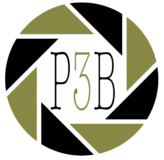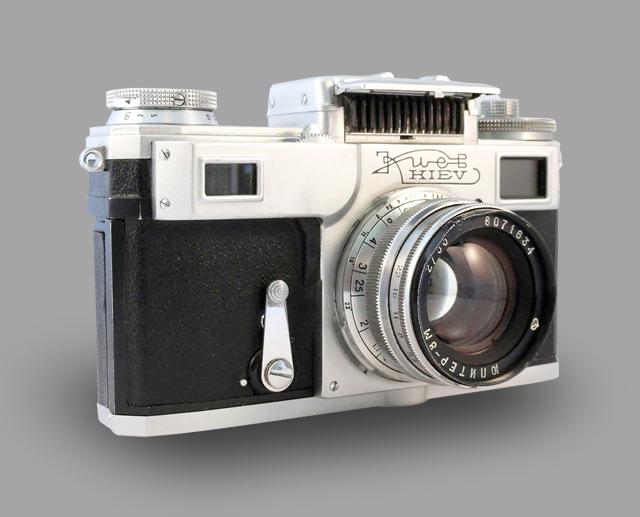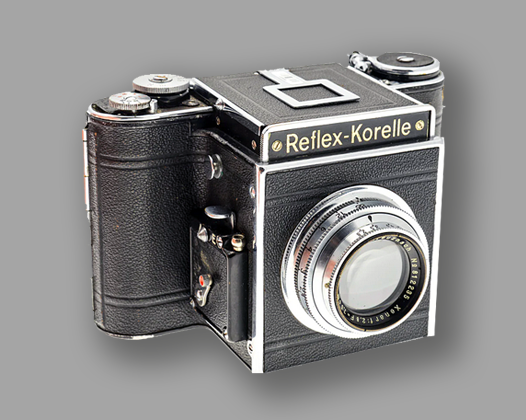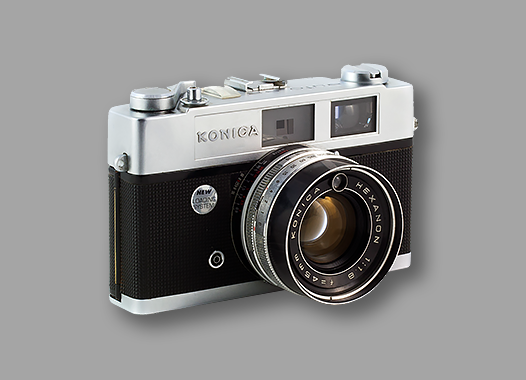Some of the following companies that manufacture(d) photographic material have already passed by in other parts of the site.Here you will find an overview of companies that marketed photographic material in the nineteenth and twentieth centuries.More is usually known about the best known or the most influential companies than about the lesser known ones; therefore they will be discussed more extensively than others.
The emphasis in this part of the site is more on the ups and downs of the company as such, while in other chapters the emphasis was on the product or on the man or woman who founded the company. The order of all companies is alphabetical.
Below are the names of the companies as will be discussed in this or any other chapter. By clicking on a name (so not on the bullet in front of it), you go directly to that part on this page where the manufacturer in question is located. Scrolling is also possible of course, but this service helps you to get to the desired manufacturer in question much faster.
Due to the fact that this introductory page has become much longer than originally planned and desirable due to the large number of manufacturers, we strongly advise you to use the name service below to go to the manufacturer of your choice on this or any subsequent page.
- General Introduction
- ADOX
- Agfa (see also Gevaert)
- Altissa
- Amaloco
- Ansco Camera Co (see also GAF)
- APM/APeM (see also Soho)
Amalgamated Photographic Manufacturers Ltd - Argus Camera Co, Ann Arbor Michigan
- Arsenal (see Kiev-Arsenal)
- Artima Export Ltd (see also Truvox)
- Asahi Pentax
- Bencini
- BOLCo and E Elliott Ltd
(abbrev. for The British Optical Lens Company) - Carl Braun Kamera-Werk
- Canon Inc.
- J.T. Chapman, Manchester
- The Chicago Cluster of Companies
(consisting of 56 companies ) - Chinon
- Concord Camera Corp.
- K.G. Corfield & K.G. Corfield (Sales) Ltd.
- Coronet Camera Company
- Cosina Company, Ltd.
- Dacora
- Dixons
- Durst
- EHO-Altissa company (See Altissa)
- E Elliott Ltd and BOLCo
(abbrev. forThe British Optical Lens Company) - Ellison Kamra
(see also QRS Devry Kamra Company) - ELOP
- Ensign Ltd.
(distribution Company of Houghton-Butcher) - Ernemann-Kamerawerke AG
- Expo Camera Company
- The FED Company
- Ferrania
- Fisher-Price
- Fodor
- Foitzik-Kamerawerke
- C.F. Foth
- Fototecnica
- Franka Kamerawerk
- Fujica (Camera Division of Fujifilm)
- Fujifilm (brief history)
- Futura
- GAF (see also ANSCO)
(abbrev. for General Aniline & Film) - Louis Gandolfi
- Herbert George Company
- Gevaert Photo-Producten N.V. (see also AGFA)
- Girard et Cie
- GNOME
- GOERZ
- GOMZ (LOMO)
- Graflex (Folmer & Schwing)
- Great Wall Plastics Co
- W. Haking Enterprises Ltd.
- Hanimex
- Hasselblad
- Healthways
- Houghton–Butcher Manufacturing Co (See also Ensign Ltd. and Ross-Ensign Ltd.)
- R.F. Hunter Ltd.
- ICA AG
- Ihagee (Exakta)
- Ilford
- Imperial Camera Corporation
(see the Herbert George Company story) - Jos-Pe
- Kamera-Werkstätten Guthe & Thorsch
- Keystone
- Kiev Arsenal
- KMZ
- Kochmann
- Kodak USA (incl. Australia, Canada, France, Germany & the UK)
- Konica-Minolta (Konishiroku)
(see also Minolta) - Kowa
- Krügener
- Kürbi & Niggeloh (Bilora)
- Kyocera (Yashica, Contax)
- Lancaster
- Leitz
- Lensless Camera Manufacturing Company
- Linhof
- Lipca (see also Richter-Tharandt)
- LOMO (see GOMZ)
- Loreo
- Mamiya
- Meopta Optotechnica
- Mimosa AG
- Minolta (see also Konica-Minolta)
- Minox Company
- Miranda (Orion)
- MMZ-BeLomo
- Motodori (Condor)
- Dr. August Nagel Kamera Werke
- Neidig Kamerawerk
- Nemrod-Metzeler (See Healthways)
- Nettel
- Nikon Company
- Nimslo Corporation (see also Nishika)
- Nishika Optical Systems (see also Nimslo)
- Noblex (See also K-W Guthe & Thorsch)
- Olympus Company
- ORION (see Miranda)
- ORWO
- Ottico Meccanica Italiana (OMI)
- Paterson Products Ltd.
- VEB Pentacon Dresden
- Pentax (See Asahi Pentax)
- Petri
- Photavit (Bolta)
- Plaubel
- Polaroid
- Photo Porst
- Karl Pouva – VEB Fototechnik Freital (see also Woldemar Beier)
- Purma Cameras Ltd.
- QRS Devry Kamra Company (see also Ellison Kamra)
- Foto-Quelle
- Rectaflex
- VEB Rheinmetall Büromaschinenwerk
- Richter-Tharandt (see also Lipca)
- Ricoh
- Rollei Germany
- Rollei Singapore
- Ross-Ensign (continuation from Ensign Ltd.)
- Ro-To Company
- Sea&Sea-Sunpak
- Shanghai Seagull
- Sida-Fotofex
- Sigma
- Soho Ltd (see also APM)
- Standard Cameras
- Steinheil
- Stenopeika
- Thornton-Pickard
- Topcon (Tōkyō Kōgaku)
- Tougodo Company
- Traid Corporation
- TRUVOX (see also Artima Export)
- Tura AG
- Universal Camera Corp.
- Vivitar
- Voigtländer
- Vredeborch
- Welta
- Werra (C. Zeiss Jena)
- Wirgin
- Kamera-Fabrik Woldemar Beier (see also Karl Pouva)
- Hermann Wolf GmbH
- Wünsche
- Yashica (see also Kyocera)
- Zeiss Ikon AG
- Zion
- Zunow (Teikoku Kōgaku)
(1938: Charles A. Noble)
COMPANY NAMES:
1919: Kamera-Werkstätten Guthe & Thorsch GmbH; 1938: Kamera-Werkstätten, vormals Guthe & Thorsch; 1939: Kamerawerkstätten Charles A. Noble; 1946: Kamera-Werkstätten Niedersedlitz, Betrieb der Industrieverwaltung 24 Optik, Volseigener Betrieb Sachsen Dresden-Niedersedlitz; 1947: MECHANIK Kamera-Werkstätten VEB Niedersedlitz; 1951: OPTIK Kamera-Werkstätten VEB Niedersedlitz; 1953: VEB Kamera-Werke Niedersedlitz Dresden A 17; 1959: VEB Kamera- und Kinowerke Dresden; 1964; 1968: Kombinat VEB PENTACON DRESDEN; 1985: VEB PENTACON DRESDEN; 1990: PENTACON DRESDEN GmbH.
COMPANY ADDRESSES:
1919: Dresden, Serre-Straße 12 and (office) Zinzendorfstraße 48; 1928 Dresden, Bärensteiner Straße 30; 1939: Bismarckstraße 56, Niedersedlitz; 1946 Niedersedlitz, Edgar-André-Straße 56, previously called Bismarkstraße; 1959 Dresden, Schandaurer Straße 76.
The camera workshop Guthe & Thorsch GmbH and camera workshops Charles A. Noble and their East German successor VEB Cameraworks Niedersedlitz were among the most technically innovative companies in the Saxon camera industry from the 1930s to the 1950s. The world-famous Practica was constructed here.
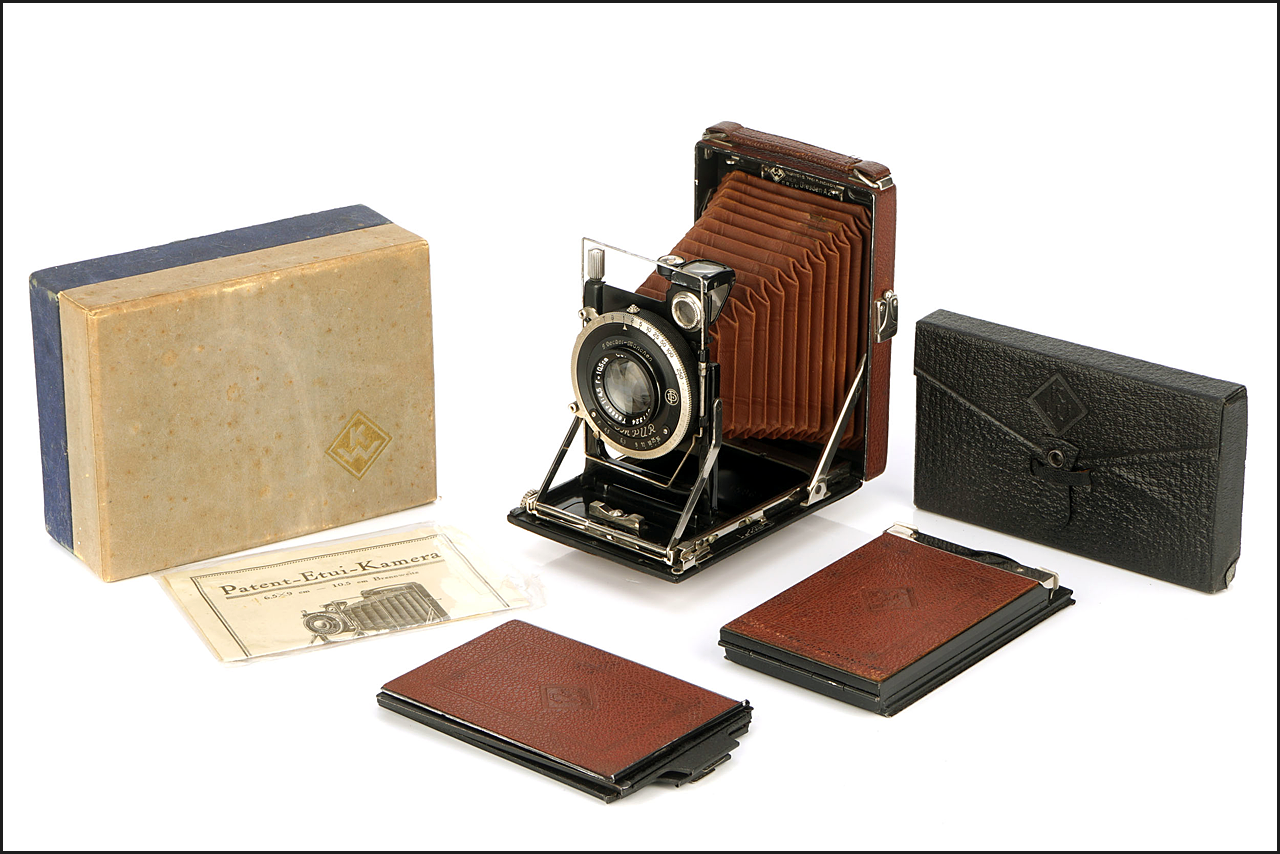
“Patent-Etui” camera.
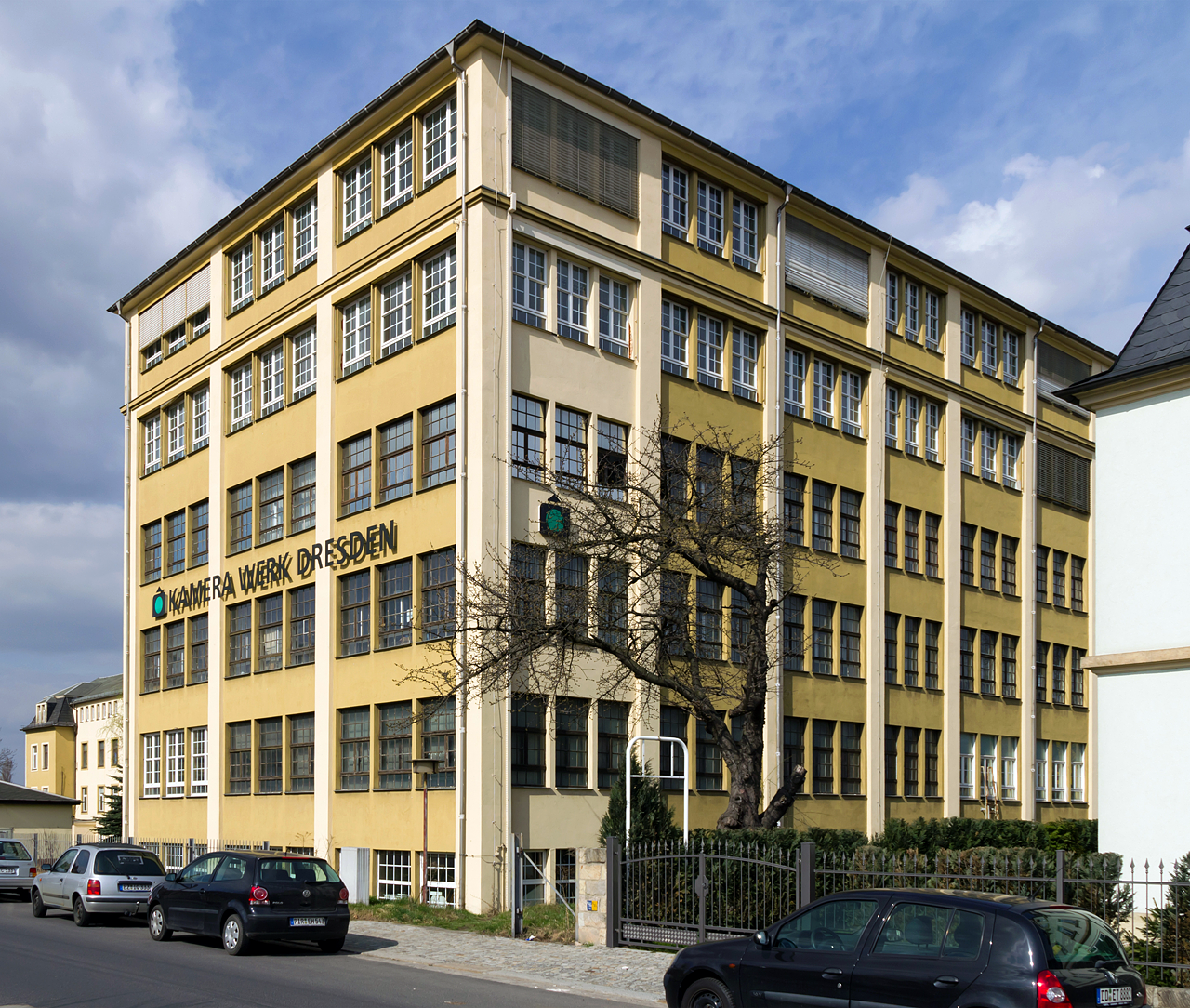
Ehemalige Kamerawerke Niedersedlitz in der Bismarckstraße 56 in Dresden
 Paul Guthe owned a small factory of photographic equipment in Dresden, Ferdinandplatz 1, since 1915. In 1919 Paul Guthe and Benno B. Thorsch established in Dresden a partnership with the name Kamera-Werkstätten Guthe & Thorsch GmbH.
Paul Guthe owned a small factory of photographic equipment in Dresden, Ferdinandplatz 1, since 1915. In 1919 Paul Guthe and Benno B. Thorsch established in Dresden a partnership with the name Kamera-Werkstätten Guthe & Thorsch GmbH.
In 1928, the company moved to new premises, in Bärensteiner Strasse 30, near the Ica-Werk of Zeiss Ikon AG. Two years later the production exceeded the 100 cameras per day with 150 workers.
During the 1920s and 1930s, the Kamera-Werkstätten manufactured plate cameras and medium format reflex. The plate camera Patent-Etui 9×12, a flat folding camera that met a great success, was introduced in 1920, the Patent-Etui 6.5×9 in 1923, the twin lens reflex camera Pilot Reflex 3×4 in 1931, the 6×9 single-lens reflex Reflex-Box in 1933, the 6×6 single-lens reflex camera Pilot 6 in 1935 and the Pilot Super in 1939.
At the beginning of 1930, Paul Guthe resigned from the company for health reasons. He died in December of 1930. The old partnership was dissolved in April 1930 but the name of the company was not changed and Benno Thorsch went on leading the company as sole owner.
In 1937, Benno Thorsch needed to leave Nazi Germany because, as being half Jew, he feared for his life. The opportunity came when he met Charles A. Noble who wanted to move to Germany to open a business in the photography sector. Charles A. Noble was of German origin. He emigrated to the USA in 1922 where he became US citizen. He was the owner of a company in Detroit that manufactured photocopiers.
At the beginning of 1938, Benno Thorsch found an agreement with Charles A. Noble that provided for the exchange of ownership of their respective companies. Before to emigrating to the USA, Benno Thorsch sold the Kamera-Werkstätten to Charles A. Noble and bought the Noble’s prosperous photoshop in Detroit in the USA. Charles A. Noble became the new owner in April 1938 and the company was renamed Kamera-Werkstätten, vormals Guthe & Thorsch.
Charles A. Noble moved the company into larger premises at Bismarckstraße 56 in Niedersedlitz, near Dresden, into the building of a former factory of drops and sweets. The company changed the name to Kamera-Werkstätten Charles A. Noble. after the new owner. Charles Noble realized the importance of compact SLR cameras and made the strategic decision to concentrate on single-lens reflex cameras.
 In the spring of 1939, at the Leipzig trade fair, the Praktiflex was introduced. The design of this camera began in 1937 and was developed by Benno Thorsch and Alois Hoheisel. The new camera was a 35mm single-lens reflex with fixed waist-level finder and interchangeable lens with a 40mm thread mount.
In the spring of 1939, at the Leipzig trade fair, the Praktiflex was introduced. The design of this camera began in 1937 and was developed by Benno Thorsch and Alois Hoheisel. The new camera was a 35mm single-lens reflex with fixed waist-level finder and interchangeable lens with a 40mm thread mount.
The Praktiflex was presented three years after the Kine-Exakta introduced in 1936 by Ihagee Kamerawerk Steenbergen & Co. By that time, only the Ihagee produced single-eyed SLR cameras in a compact construction. The chances to become the second manufacturer worldwide were good enough to start the mass production. Especially the small price of 98 Reichsmark was compelling. KW could continue the production during the Second World War. More than 11,000 cameras were produced between 1939 and 1945, which is an astonishing amount for a small manufacturer such as the Kamera-Werkstätten.
A locust plague?
After the US entry into World War II, the Kamera-Werkstätten had to fulfill military orders and Mr. Noble and his family, as Americans, were restricted in their ability to leave Germany but retained their company.
Between 13 and 15 February 1945 the centre of Dresden was completely destroyed by the British and American bombing. It was estimated that about the 80% of the photographic industries were heavily damaged. The factory of Kamera-Werkstätten remained intact because it was situated in Niedersedlitz, in the outskirts of Dresden.
Soviet troops occupied Dresden in May 1945. In 1945 the Soviets arrested Charles A. Noble and his son John for spying and the company nationalized. For father and son began an odyssey through the Soviet concentration camps. The father was released in 1952. However, his son John was sentenced to 15 years of hard labor in the Siberian Gulag in 1950. He was not released until 1955 and could return to the USA then.
Right after the invasion of the Red Army in Dresden, military personnel, mostly officers, occupied the companies. Only the former ICA site of Zeiss Ikon had been totally occupied because of its military branch. After a listing of the available equipment, each company had to prove its efficiency.
On June 20, 1945, the military administration under Soviet Col. Ilia I. Spiridonov ordered the disassembling of various manufacturing sites. Except of the Ihagee and the Kamera-Werkstätten the complete Dresden photo industry was affected by this order. The Soviet accuracy turned an equipped manufacturing hall into a naked room with only light bulbs and a faucet. The Zeiss-Ikon AG lost 30 to 40 million Reichsmark in removed goods alone. In fall 1945 the disassembling came to an end leaving the already destroyed factories in a worse condition – some refer to a “second bombing”.
After the end of WWII, Germany was partitioned into four military occupation zones. The sectors controlled by France, United Kingdom and United States were merged in May 1949 to form the Federal Republic of Germany known as West Germany. In October 1949 the sector controlled by the Soviet Union became the German Democratic Republic, known as East Germany.
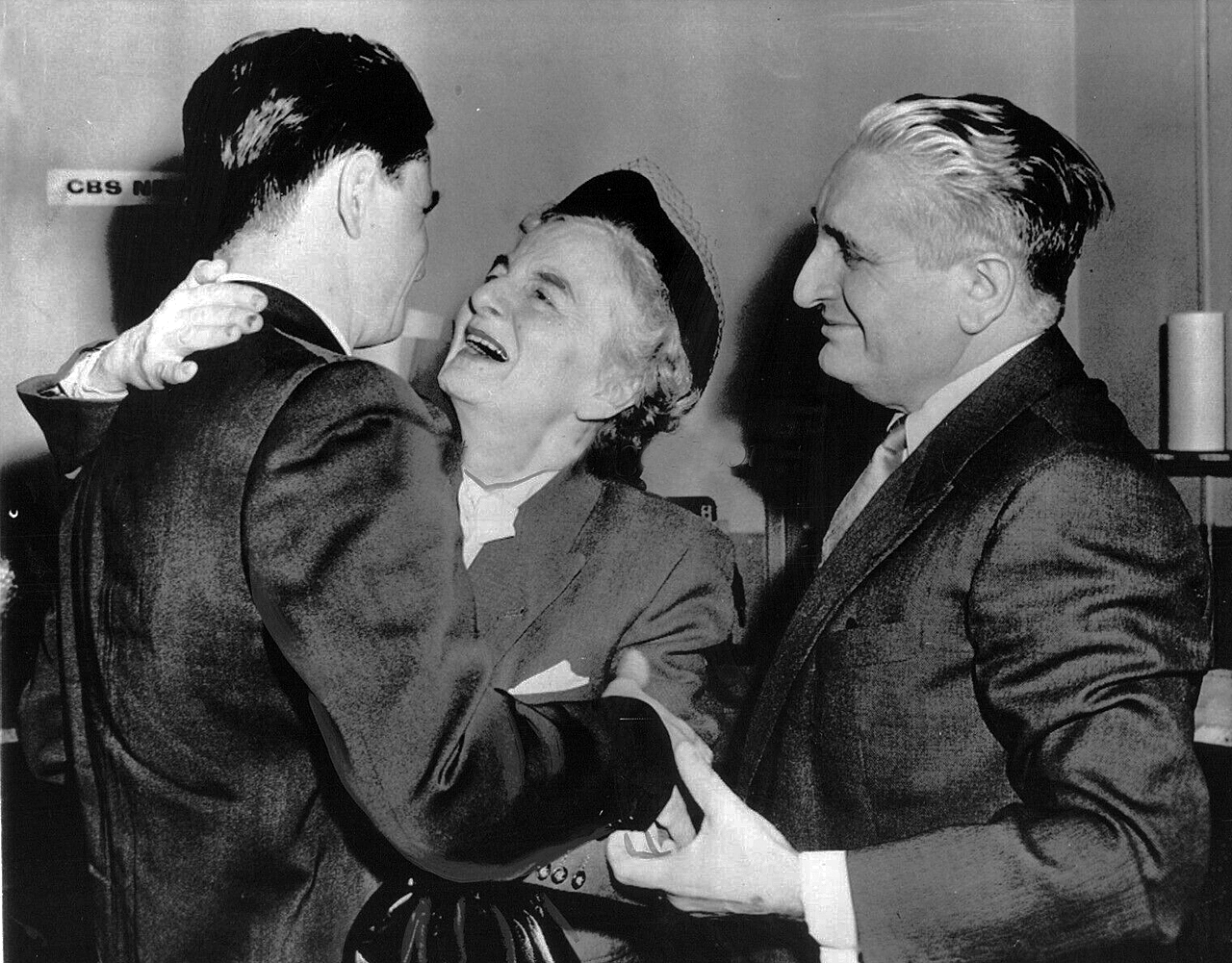
John H. Noble reunited with his parents-John H. Noble, recently released by the Russians after 9 1/2 years in prison, was reunited with his parents, Charles and Hildegarde Noble, in a broadcasting system newsroom
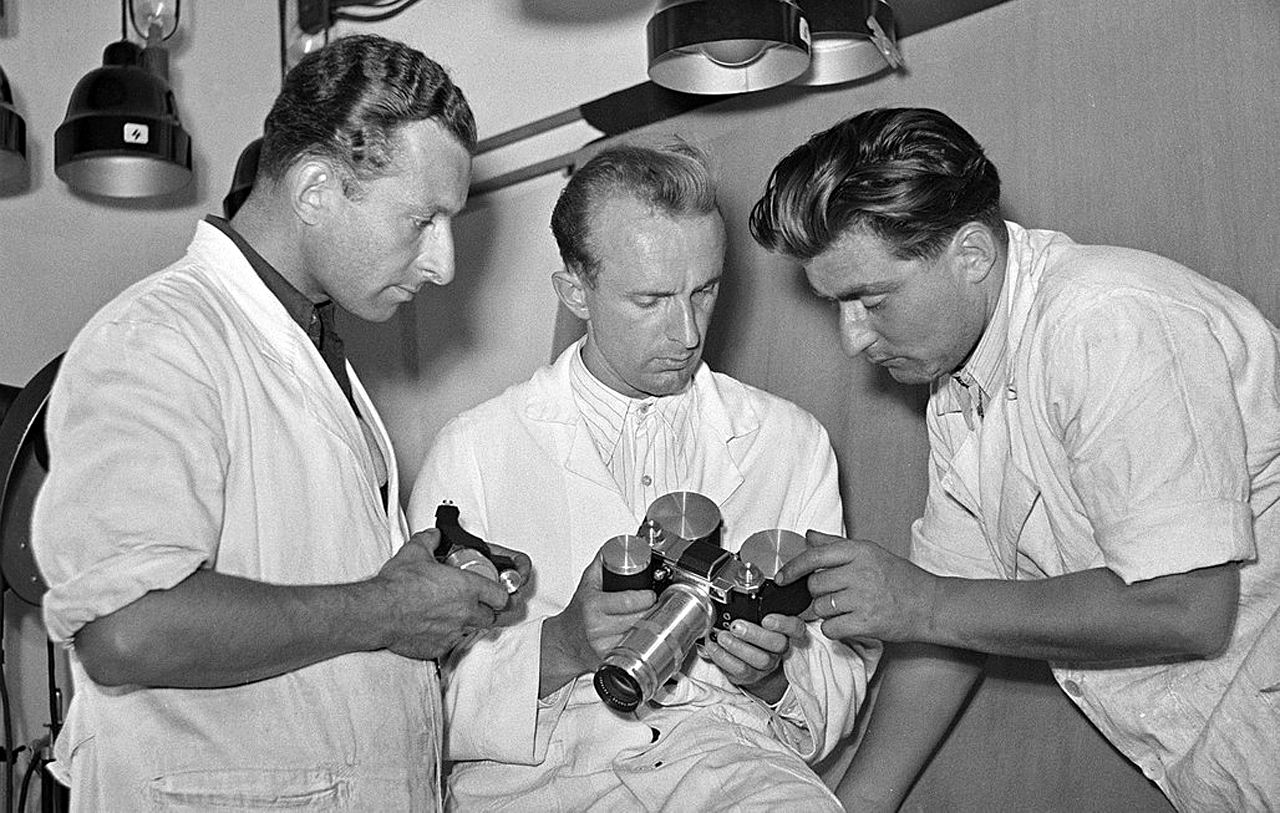
Praktica designer Siegfried Böhm (centre) with laboratory manager Werner Kühnel (left) and research assistant Gerhard Jehmlich. “For his services to the development of the photo and cinema industry in the GDR, Siegfried Böhm received the title of chief engineer as early as 1962, was honored as ‘meritorious technician of the people’ in 1971 and received the national prize in 1973 for his contribution to the development and production of the ‘Pentakta’ microfilm system for science and technology II.
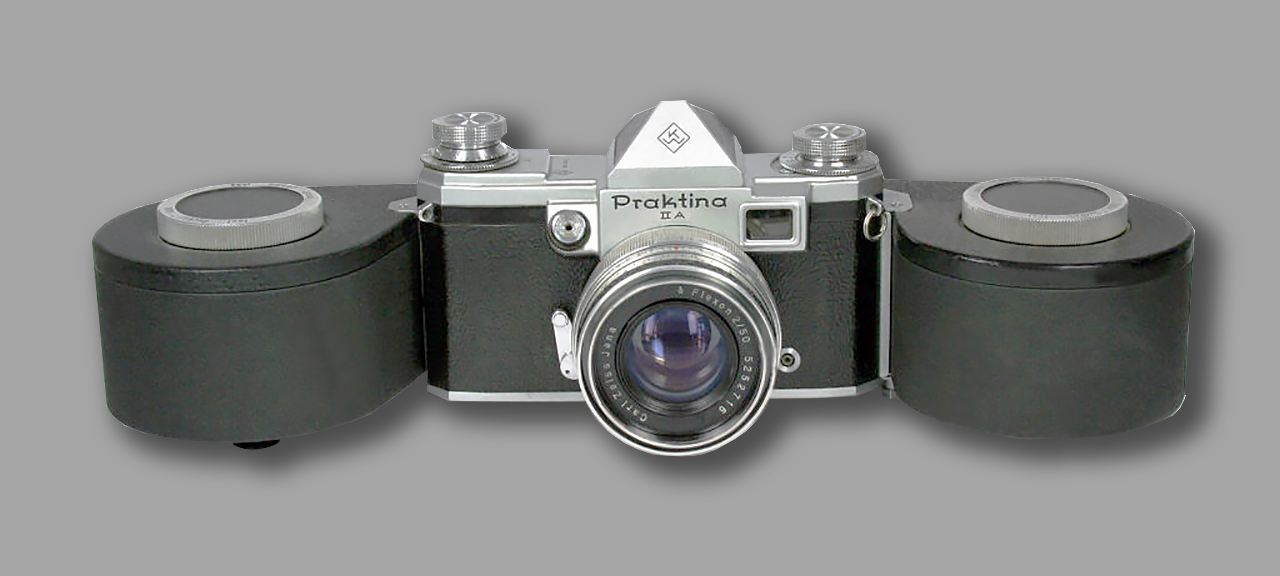
This Pentacon Praktina II A (110) system camera with full-length film magazine was a milestone in camera technology (1958-1961). First 35mm system camera in the world with interchangeable viewfinder and motor connection (spring motor or electric motor with remote release). The spring mechanism motor enabled around two shots per second. Normal 35mm film is used or – as shown here – the special film magazine with 17 meter film spools, which enables 450 shots without changing the film, which is particularly advantageous for reproductions and for reporters. The back wall could also be replaced. The negative format is 24 x 36 mm.
Volkseigener Betrieb
In 1947 the Kamera-Werkstätten was nationalized by the German Government with the name “Kamera-Werkstätten VEB Niedersedlitz – Betrieb der Industrieverwaltung 24 OPTIK, Volkseigener Betrieb Sachsens” and the production of Praktiflex was claimed as war reparations by the Soviet Union. The production capacity of the Kamera-Werkstätten was on the increase as well as the number of employees: 288 in 1946, 330 in 1948, 520 in 1950 and more than 1,000 in 1953.
In order to speed up the seemingly hopeless production of 50,000 Praktiflex and Pilot Super cameras required by the Sowjetische Militäradministration in Deutschland (SMAD) at the Kamera-Werkstätten, the designer of the Zeiss Ikon, Siegfried Böhm, was sent to the company. Böhm started on January 12, 1946 and introduced the first design changes with version 13 of the 2nd generation Praktiflex.
With the Praktiflex II, the lens mount was changed from M40 to M42. From January 1, 1948, Böhm was appointed manager. Even the still modest production figures could only be achieved in 1948 through illegal “barter deals”. An official investigation into Böhm was dropped in early 1950. It was not until 1948, when Böhm developed the Praktiflex III – the first “Praktika” – that significant increases in production could be achieved after the introduction of industrial design and production methods from 1950 onwards.
From 1949 the first extensions were built in Niedersedlitz, e.g. an intermediate building (1949-1951) that roughly doubled the operating area. In 1952 the Kamera-Werkstätten showed the prototype of the Praktina, first 35mm single-lens reflex camera with the interchangeability of lenses, finders, focusing screens, camera back and with the ability to use an electric or a spring motor drive. In 1953 the nationalized Kamera-Werkstätten was given the name VEB Camera Works Niedersedlitz and the production of the Praktina FX begins.
In 1956 the Kamera-Werke introduced the Praktica FX2 with an internal mechanism for closing the diaphragm of the lens and the Praktisix 6×6, a single-lens reflex with full automatic control of the lens diaphragm and with interchangeability of screens and finders. In 1958 the Kamera-Werke introduced the Praktina IIA with the full automatic control of the lens diaphragm.
In the years 1953-1957, a further significant enlargement (six-storey “high-rise”) was built, partly on a neighboring property. In a first concentration step, VEB Belca-Werk was taken over on January 1, 1957. On the first of January of 1959 VEB Kamera-Werke Niedersedlitz, VEB Kinowerke Dresden, VEB Altissa-Camera-Werke, VEB Aspecta Dresden and VEB Welta-Kamera-Werke merged together in a new company under the name VEB Kamera- und Kinowerke Dresden. The KW logo was replaced by the Zeiss Tower logo.
In 1959 was introduced the Praktica IV fitted with a fixed eye-level finder and in 1961 the Pentina a 35mm single-lens reflex with leaf-shutter, fixed eye-level finder, exposure meter and interchangeable bayonet mount.
After the merge, the new company had in production three different 35mm single-lens reflex cameras: Contax/Pentacon, Praktica and Praktina. These cameras required two different sets of lenses, with thread and bayonet mount, and different accessories. In 1960, to reorganize the production, the Company decided to stop the production of Praktina and Contax/Pentacon and to develop future cameras based on the Praktica design that was easier and cheaper to manufacture than the Contax and Praktina.
Name changes again
On the first of January 1964 the company changed name to “VEB PENTACON DRESDEN Kamera- und Kinowerke” and the logo was updated by adding the name Pentacon to the Zeiss Tower symbol.
The Praktica V, with instant-return mirror, and the Praktica “nova” series were introduced in 1964. Among the models of this line we must mentioned the Praktica mat of 1965, with TTL exposure control.
In 1966 the Pentacon-Dresden showed the prototype of the Pentacon Super, a top camera with TTL metering at full working aperture, metal-leaf focal-plane shutter with top speeds of 1/2000 and 42×1 mount. The Pentacon six replaced the former Praktisix.
On the first of January 1968 VEB Pentacon Dresden, Ihagee Kamerawerk, VEB Feinoptishes Werk Görlitz and five other companies merged together in a new company under the name Kombinat VEB PENTACON DRESDEN. In 1968 Pentacon-Dresden introduced the Pentacon Super with outstanding features for the professional and scientific worker and the Praktica PL Electronic, the first camera in the world with electronically controlled shutter and with shutter speeds as slow as 30 seconds. The Pentacon Super was used in Soviet space stations in 1969.
The Praktica “L” series with a metal-leaf shutter was introduced in 1969. Among the models of this line we must mentioned the Praktica LLC of 1969, first camera in the world that have a full-aperture metering system where lens diaphragm info is transmitted electronically to the meter via contacts on the back of the lens. The Exakta RTL 1000 was introduced in 1969. It was identical to the Praktica VLC but with the Exakta bayonet mount.
The Praktica EE2, introduced in 1977, has an automatic exposure control, TTL metering at full aperture and automatic electronic shutter speed control. This camera was used in the mission of the Soviet space station Salyut 6 in 1978.
The Praktica “B” series was introduced in 1979. These cameras have a new bayonet mount that replaces, after 30 years, the 42×1 thread mount used on every Praktica from 1948. After Pentacon Super, Praktica EE2 and Praktisix, the Praktica B200 was the fourth camera used on board of the Soviet space stations.
On the first of January 1985 Kombinat VEB Pentacon Dresden and Kombinat VEB Carl Zeiss JENA merged together in a new company under the name VEB PENTACON DRESDEN.
The production of Praktica “L” and “B” series and Pentacon Six continued with new models.
In July 1990 the last change of name to PENTACON DRESDEN GmbH. On October 2nd, 1990, one day before the reunification of Germany, began the liquidation of Pentacon Dresden GmbH. This marked the end of the long and fascinating history of the photographic industries in Dresden. About ten million of 35mm single-lens reflex cameras were produced in Dresden from 1936 to 1990.
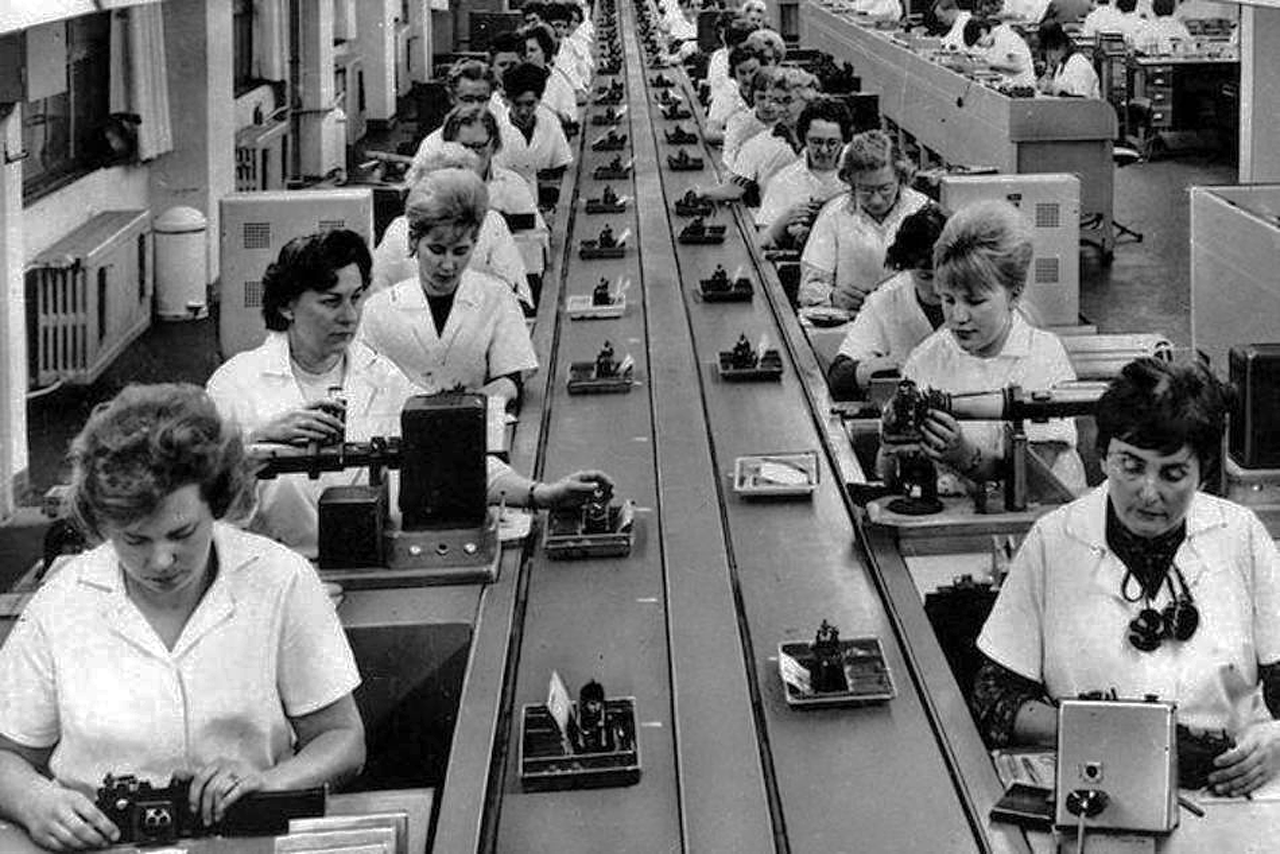
Assembly line work at VEB Pentacon Dresden. The employees assemble the “Praktica nova” and “Praktica nova b”. Every 90 seconds, a camera should leave the line.
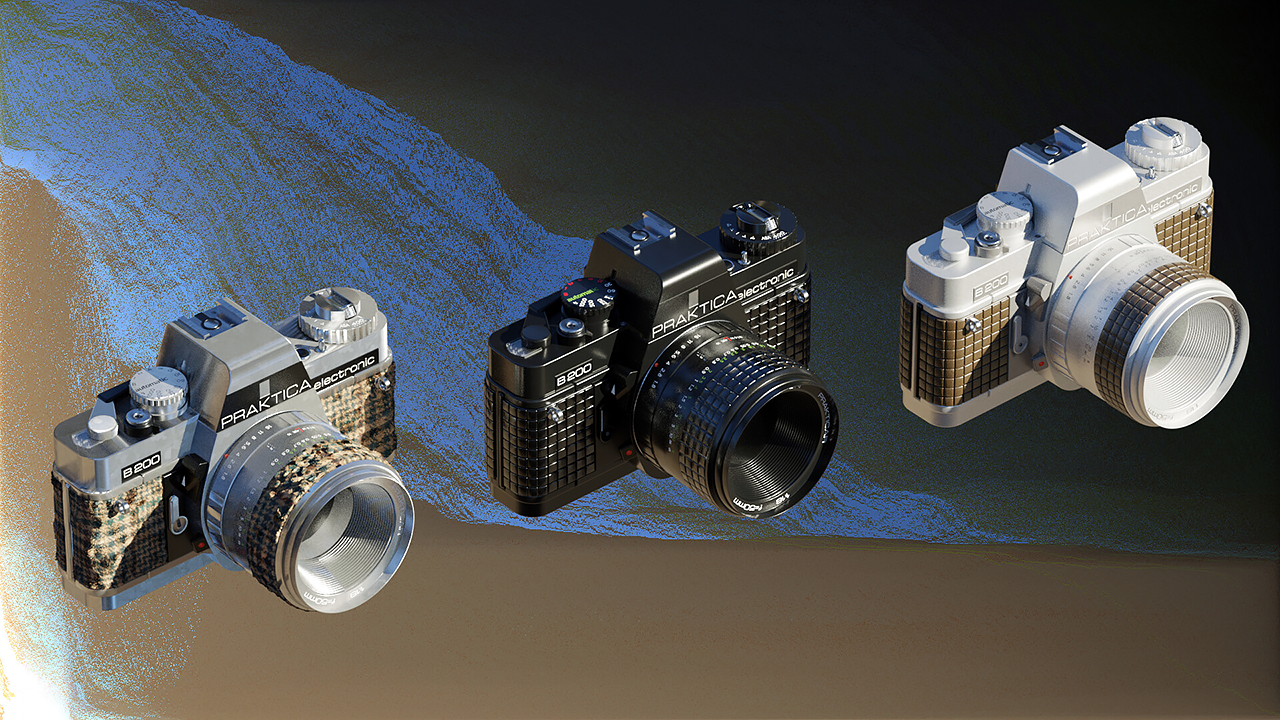
A 35mm SLR camera released by Praktica in 1979 as the first in the B series of cameras. Around 110,000 were produced until the end of the run in August 1982. With the new B series also a new bayonet lens mount was introduced, the according lenses are called Prakticar.
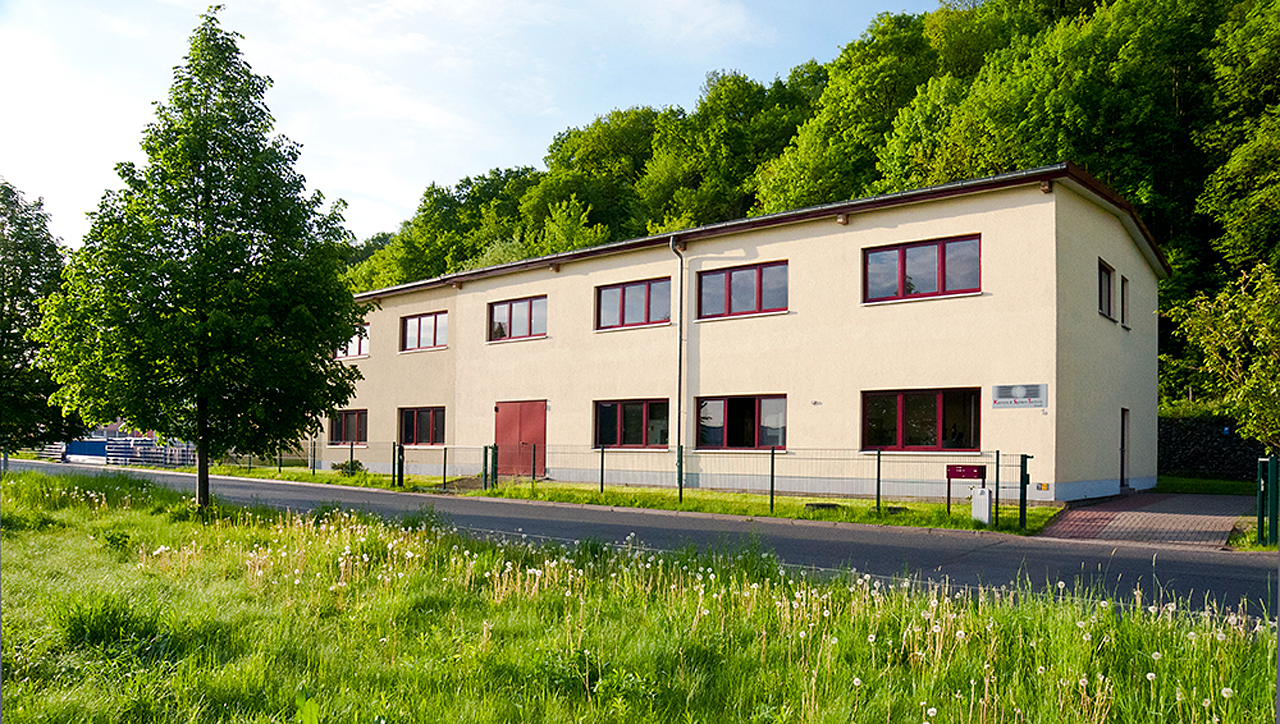
Kamera & System Technik GmbH, Hugo-Küttner Straße 1a, 01796 Pirna
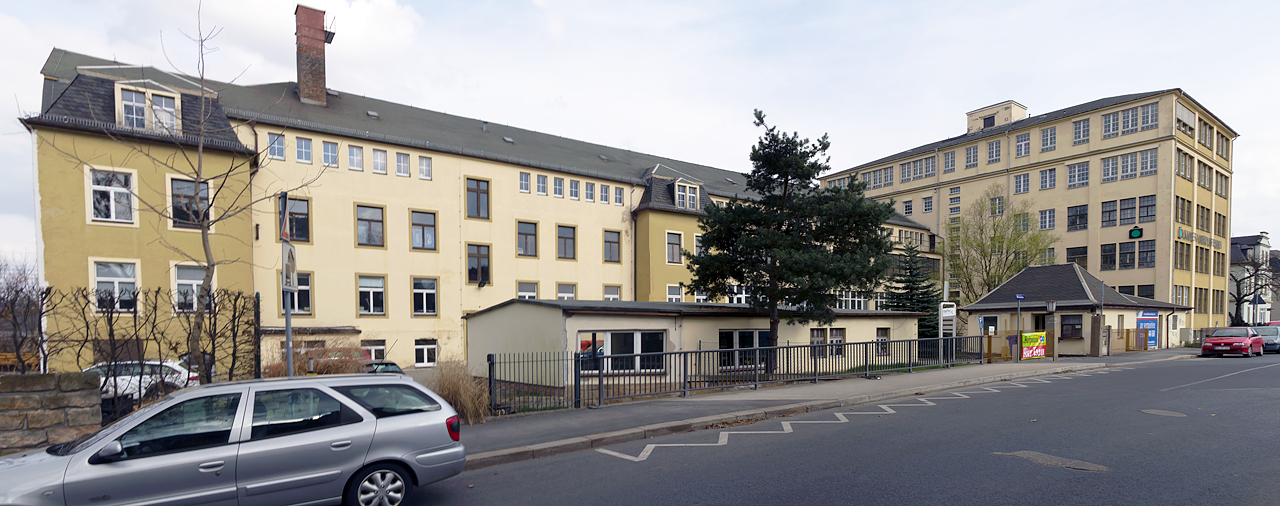
Former camera factory Niedersedlitz at Bismarckstraße 56 in Dresden; Old building from 1939 on the left, “high-rise” on the far right.
After the reunification of Germany
In 1990, John H. Noble returned to Dresden with his brother Georg Noble, where he applied to the Treuhandanstalt for restitution of his former camera factory and the rights to the name. Noble received the entire, meanwhile greatly enlarged, company premises, but not the naming rights to Pentacon, Praktica and Praktina. The trust instead sold the naming rights to Heinrich Manderman. A resumption of the Praktica production (BX 205) with 122 employees, initially planned by Noble, therefore did not materialize.
 Instead, in 1991 he started work on a panorama camera with 36 employees. Because of the success of the camera, 96 people were employed again in 1996.
Instead, in 1991 he started work on a panorama camera with 36 employees. Because of the success of the camera, 96 people were employed again in 1996.
After that, however, there was a financial crisis, as a result of which Noble sold the company in 1997 (among others to the Noblex developer Hans-Jörg Schönherr). From May 25, 1998, the company operated under the name of Kamera Werke Dresden GmbH.
In 1999, Hans-Jörg Schönherr and Matthias Richter left the company and initially set up a company for special cameras (KST-Dresden) in Pirna. Optics development no longer takes place in the camera factory in Dresden.
The building complex on Bismarckstraße is now one of the technical monuments in Dresden. As a striking Niedersedlitz industrial building, it is significant in terms of building and local history. The six-storey front building is highlighted as a clear cube with ribbon windows based on the Bauhaus style, in which only the flat hipped roof is traditional.
Descriptions of KW-cameras in a nutshell
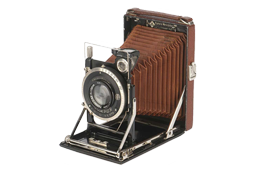
The camera workshops celebrated their first commercial success with the Patent Etui, a very small folding camera for films measuring 9 × 12 cm and 6.5 × 9 cm. The “Patent-Etui” was only 3.5cm in thickness and weighted 400g which was a key feature for its popularity among hikers and alpinists. The “Patent-Etui” had been improved and was manufactured from 1920 to 1938.
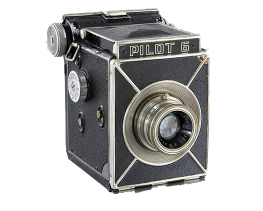
In 1931, Kamera-Werkstätten launched the Pilot, the first twin-lens reflex camera for 3×4 cm negatives. This was followed in 1932 by the Pilot Box for 6×9 cm medium format roll film and in 1939 by the Pilot 6 for 6×6 cm negatives.
The Pilot 6 and Pilot super were single-lens reflex cameras. The Great Wall of China camera was developed from these cameras. The Pilot Super offered from 1938 had interchangeable lenses and was not further produced during the second world war.
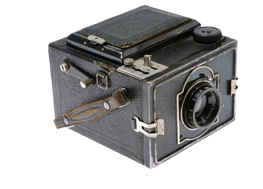
As an early, single-lens reflex camera, Kamera-Werkstätten offered a box camera for the film format 6 × 9 cm on regular 120 roll film. The lens used a Steinheil Actinar 105mm f/4.5 (higher quality option).
The KW Reflex Box was an early form of a reflexcamera which put a moving reflex mirror and waist level viewfinder inside of a wooden. Cameras like these were fairly common in the era before the modern SLR was invented.
Praktiflex and Praktica (1938)
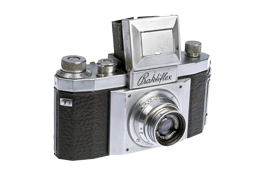
As early as 1938 – two years after the Kine Exakta from Ihagee – Guthe & Thorsch produced the first single-lens reflex cameras of the Praktiflex model. The main development work was done by Benno Thorsch and Alois Hoheisel. The new owners of the Noble family brought the Praktiflex onto the market in 1939. The first Praktica camera was then constructed on the basis of the Praktiflex by Siegfried Böhm in 1948 and presented (again) in 1949.
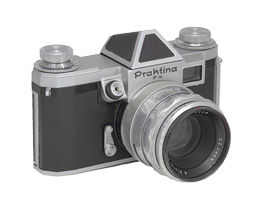
A camera intended for professional use, also developed by Böhm for the Kamera-Werkstätten, was the Praktina. It was brought out at Photokina 1952 and continuously further developed in the years that followed (e.g. Praktina FX, series production from 1953; Praktina IIa: 1958–1960). The Praktina uses its own Praktina bayonet and not the M42 thread typical of the early Praktica line.
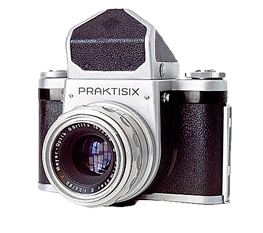
The Praktisix and its successors in the Pentacon Six series were 6×6 cm medium format cameras. Structurally, they were more similar to single-lens reflex cameras like the Praktina from the company itself than to the competing products from Rollei or Hasselblad. Siegfried Böhm was also involved in the construction.
The Praktisix was presented as the first model at Photokina in 1956 and was mass-produced from the following year. In 1959 the “KW” logo was exchanged for the Ernemann tower of the later VEB Pentacon.
The Praktisix II came on the market in 1964, the Praktisix IIa with pull-out coil counter bearings in 1966. A total of about 28,000 pieces were produced.
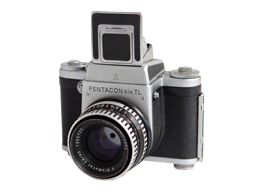
Also as early as 1966, the Pentacon Six appeared with further structural changes, from 1969 in the version of a Pentacon Six TL. A TTL prism for simplified exposure metering was offered for the Pentacon Six TL (Through The Lens metering). The Pentacon Six TL was built until 1990.
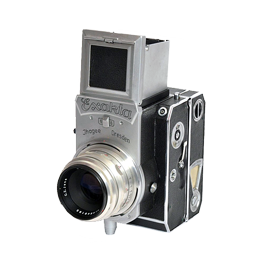
Under the name “Exakta 66”, a company of the later Pentacon acquirer Heinrich Manderman brought three upgraded versions of the Pentacon Six TL onto the market from 1984, some of which consisted of original Pentacon Six parts.
Panoramic camera Noblex (1992-1994)
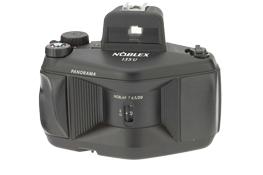
The Noblex Pro, a panoramic camera, was developed in 1992. The 35mm version Noblex 135 was added in 1994.
Other products
 Guthe & Thorsch (“KW”) also sold a smaller episcope, the KW Episcope.
Guthe & Thorsch (“KW”) also sold a smaller episcope, the KW Episcope.
In 1933 the Praxidos enlarger with “fully automatic focusing” was introduced at the Leipzig Fair.
FOUNDERS: Edward M. Swartz, J.M. Welsman, Isidore Marks and Benjamin Marks
COMPANY NAMES:
1919: Keystone Camera Corporation is a division of the Keystone Manufacturing Co.; 1954 – Keystone Manufacturing Company splits with the formation of the Keystone Camera Company; 1966-1978: the Keystone Camera Company is acquired by Berkey Photo and becomes a division of Berkey Photo, Inc.; 1991: purchased by Concord Camera Company.
COMPANY ADRESSES:
1919: 101 Albany street Boston, Massachussets; 1920: 53 Wareham street Boston; 1925: 288 A. street; 1942: 151 Hallet street Boston; 1953 – 1961: Hallet Square, Boston 24, Massachussets; 1962-1963: 151 Hallet Street, Boston; 1967: moves from Boston to Clifton, New Jersey
The Keystone Camera Company was an American manufacturer of consumer photographic equipment. Notable products were movie cameras, 126 cartridge and 110 cartridge cameras with built in electronic flash (the “Everflash” series). Keystone was in a infringement suit with Polaroid in 1975 over the patents to their SX70 compatible camera.
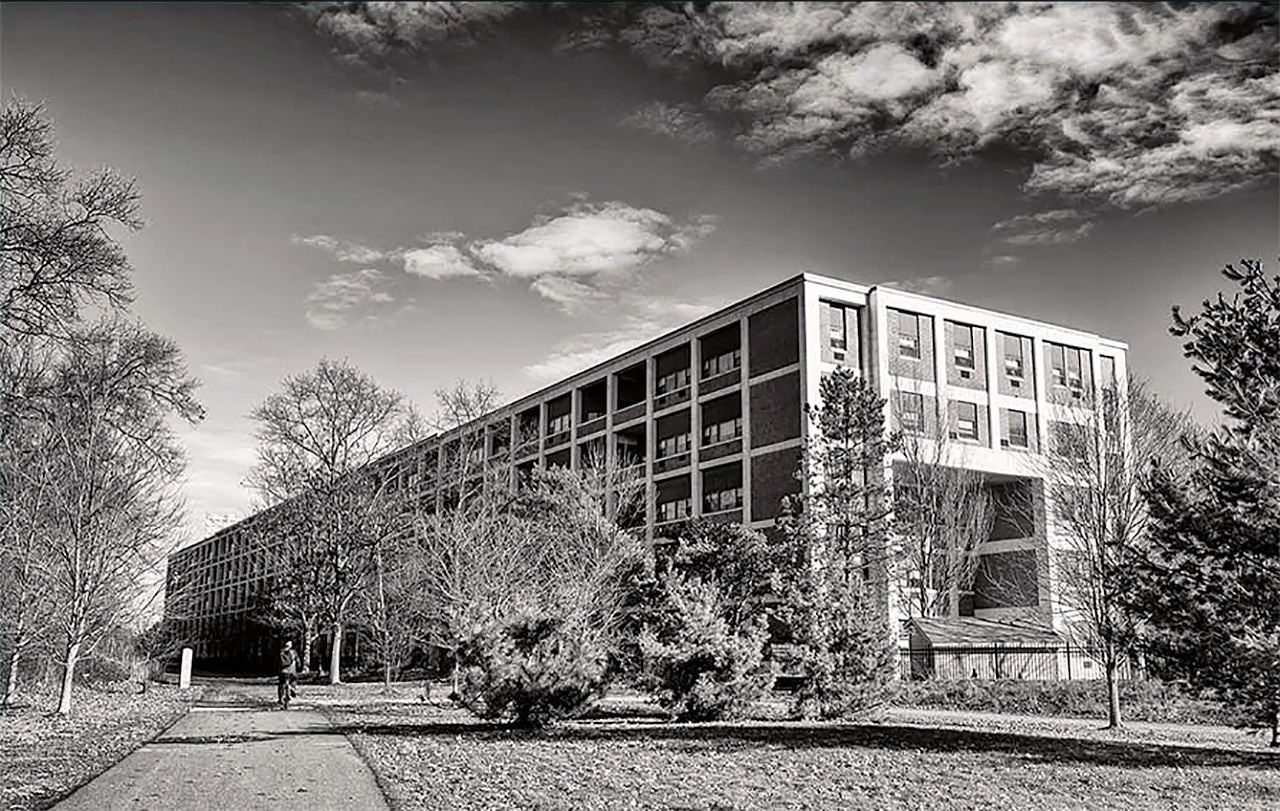
Keystone Camera Company, Hallet Square, Boston 24, Massachussets, active in the USA 1919-1991.
 According to The Keystone Story, a catalogue produced in 1953, the Keystone Manufacturing Company was founded in 1919 in Boston, Massachussets in a small 3,000 square foot factory.
According to The Keystone Story, a catalogue produced in 1953, the Keystone Manufacturing Company was founded in 1919 in Boston, Massachussets in a small 3,000 square foot factory.
Early on, Keystone shared its space with several other manufacturing firms, including Marks Brothers Co. and Jacrim Manufacturing Co., all producing a variety of toys. Interestingly, at the time Isadore and Benjamin Marks were the president and treasurer, respectively, of the Marks Brothers Company, which had been in the toy business since 1911.
In 1924, Keystone started their line of pressed steel toys, for which it is best known. The line of toys was modelled after the Packard trucks of the day and featured the Packard logo on the grill. In 1932, Keystone introduced a line of pressed steel “Ride ‘Em” vehicles of which the mail plane is the most recognized.
While they did produce children’s toys, they also made cinema equipment, such as the Keystone Moviegraph, from the early 1920s. However, by 1930 Keystone would expand their product lines and sell low cost 16mm cameras and projectors in nearly every state, and by 1953 they were in 65 countries around the world! The firm considered that labeling its products as Made in USA was an important part of its appeal.
During WWII they made an aerial camera: the Type F8 that had a 15 inch f/5.6 Wollensak lens.
continued
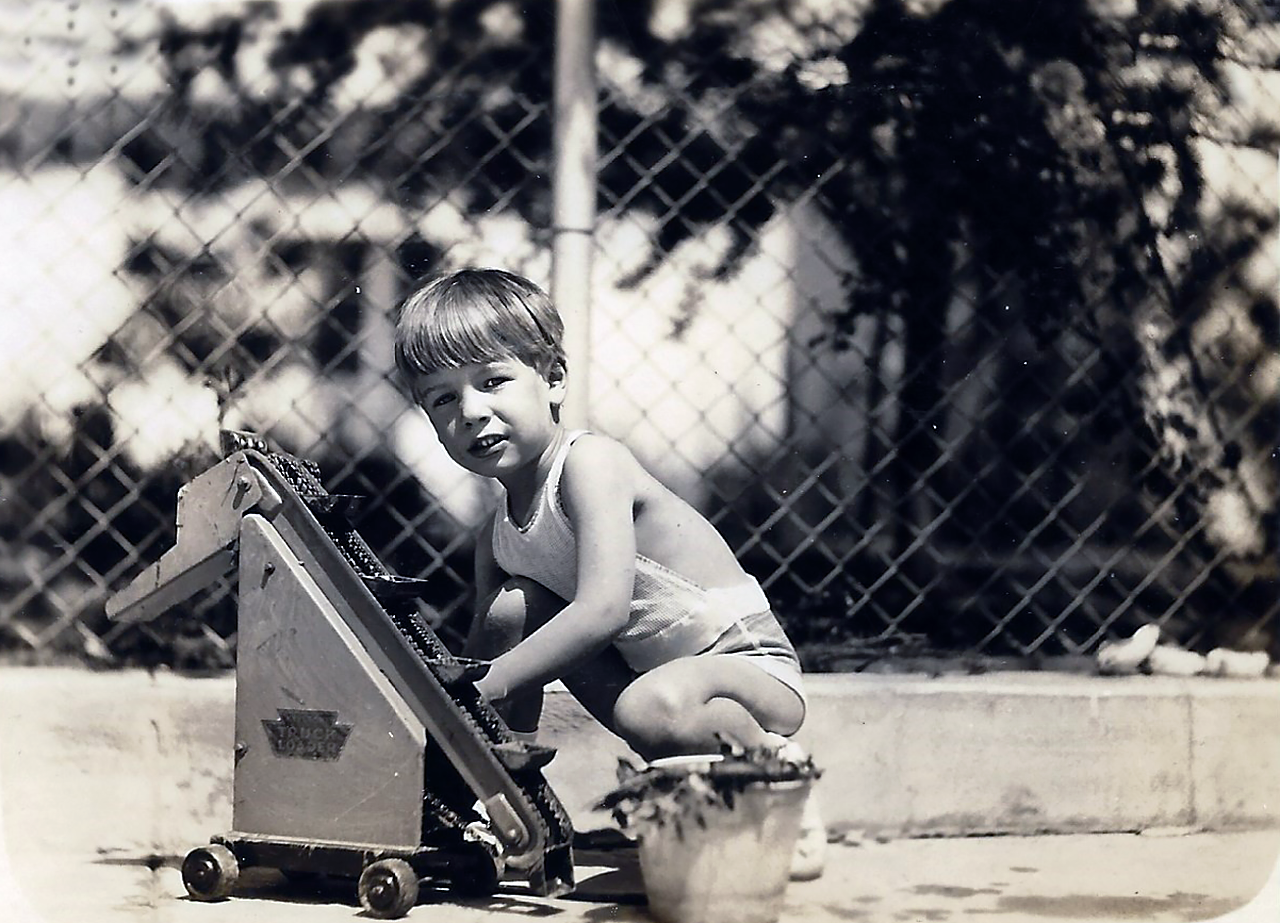
Nice photo of a boy playing with his Keystone pressed steel Sand Loader, circa 1930.
Keystone Manufacturing would continue producing film equipment, pressed steel and wooden toys until 1953 when the company was divided. Keystone Manufacturing produced the film equipment and pressed steel toys while Keystone Wood Toys handled all of the wooden and “tekwood” toys.
In 1954, the company would split again forming the Keystone Camera Company and Keystone Manufacturing Company, which continued to produce the pressed steel toys. Keystone Wood Toys ceased production in January 1958 and Keystone Manufacturing continued on until 1960.
In 1966, Keystone Camera Company was purchased by Berkley Photo. The firm was originally located in Boston, Massachussets and moved to Clifton, New York. The leaving of the Boston location, meant at the same time ending the existence of the Keystone Manufacturing Company.
In the same year the company released its first SLR, a fully automatic single lens reflex that used Kodak’s Instamatic “Instant load” cassette. At the time of it’s release, it was the first Instamatic SLR, beating out both the Kodak Instamatic Reflex and Rolleiflex SL26 by two years. Featuring an “electric eye” with the ability of automatic exposure further added to the wow factor, bringing advance features such as AE and TTL viewing to what was widely considered an amateur film format.
In 1970 they began to manufacture the Everflash series of cameras in Clifton that accepted Kodak’s new 126 cartridge film, and several years later Everflash cameras that handled the then new Kodak 110 cartridge film. Keystone’s claim to fame was their built in electronic flash rather than having to use a flash bulb or flash cube, which was popular then on many other cameras. Poor internal management structure led to many quality problems in the early 1970s and serious losses. Keystone later added its instant picture Everflash camera using Polaroid film again stressing the Everflash feature rather than Polaroid’s use of the Flash Bar.
Keystone was in a infringement suit with Polaroid in 1975 over the patents to their SX70 compatible camera. From 1970 to 1977, Berkey accounted for 8.2% Of the sales in the camera market in the United States, reaching a peak of 10.2% in 1976. In 1978, Berkey sold its camera division and thus abandoned this market after making his company second only to Eastman Kodak Company in the photofinishing business.
The Keystone Camera Company filed for chapter 11 protection in January 1991. Later in 1991, they were purchased by Concord Camera Company for $6.6 million.
It was during this period they entered into the disposable, “single use” camera market. Many of their cameras featured built-in electronic flash (an innovative feature for low-end cameras on their early models). They also had in their line some instant cameras using Polaroid film – and a few in other formats such as 35mm and Disc.
Pictures from the production in Boston in the early fifties
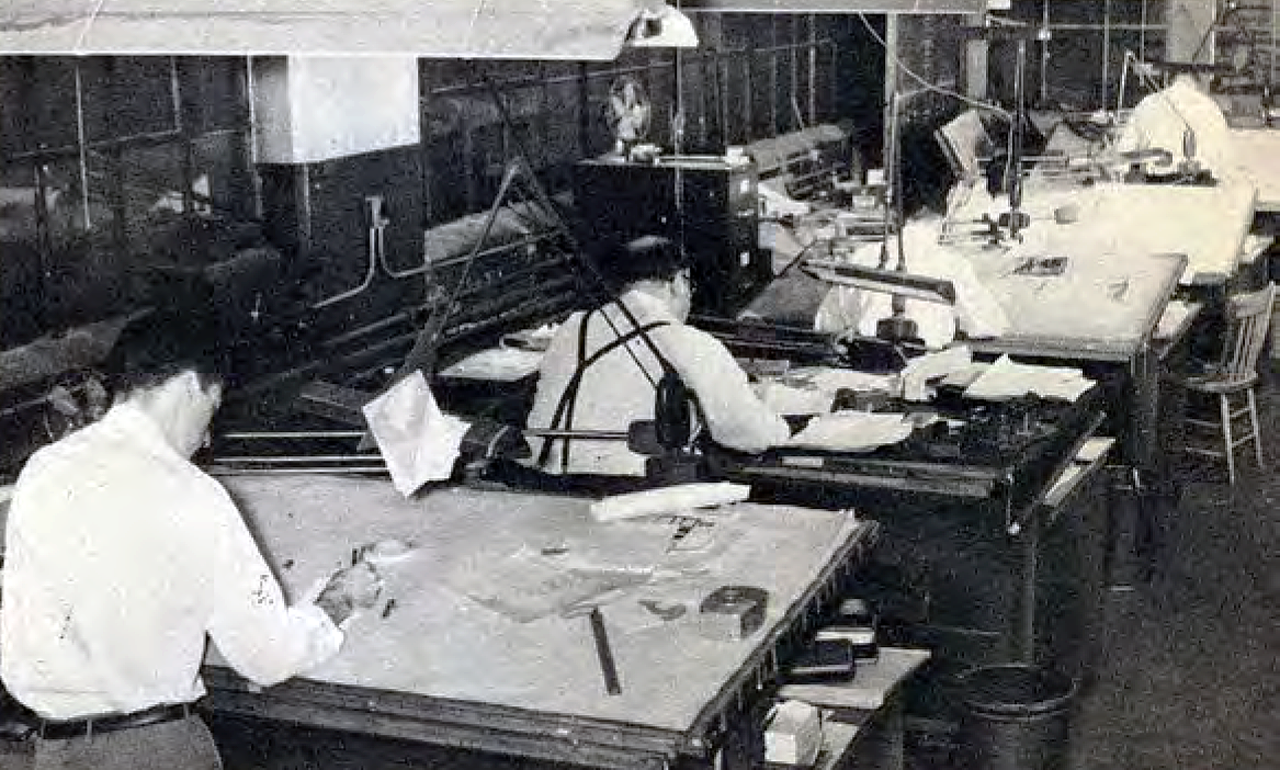
Skilled draftsmen make the thousands of detailed drawings required before a new model or a change in design can go into production.
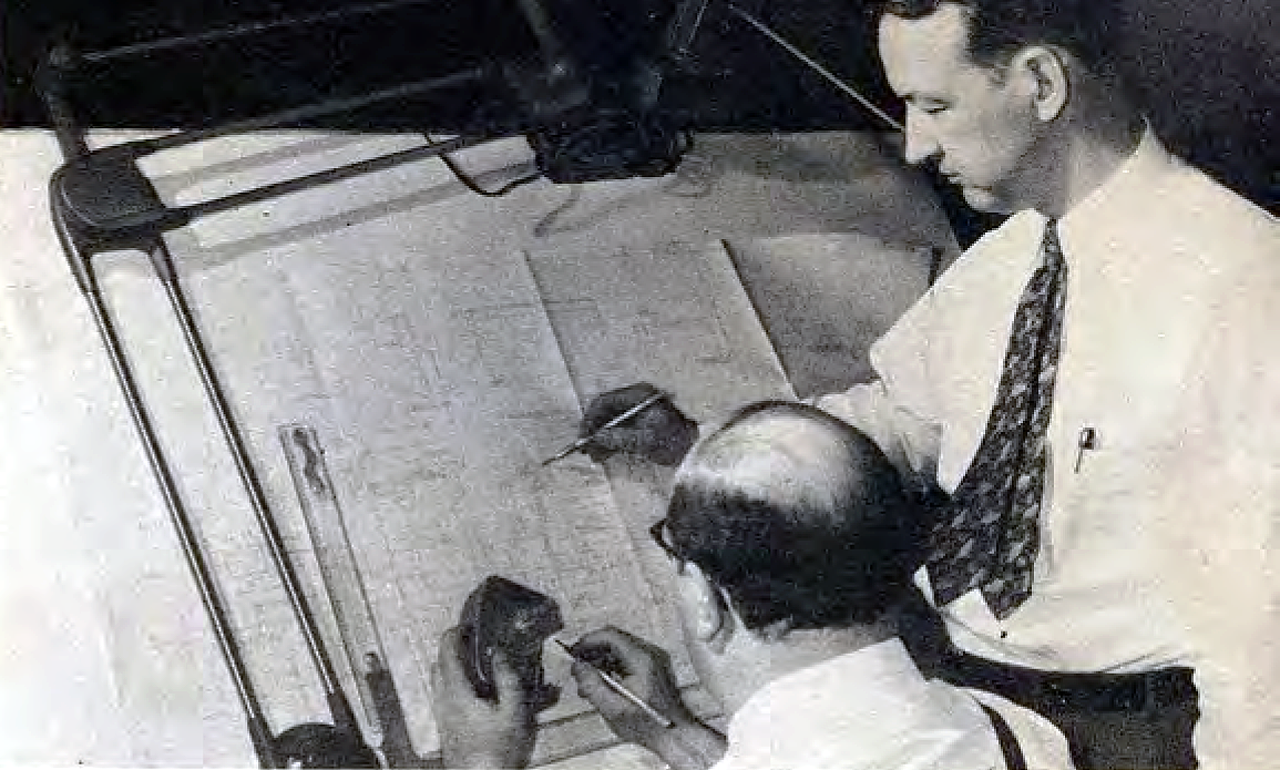
Here is the place where the production really starts, in the talented pencil of a designer.
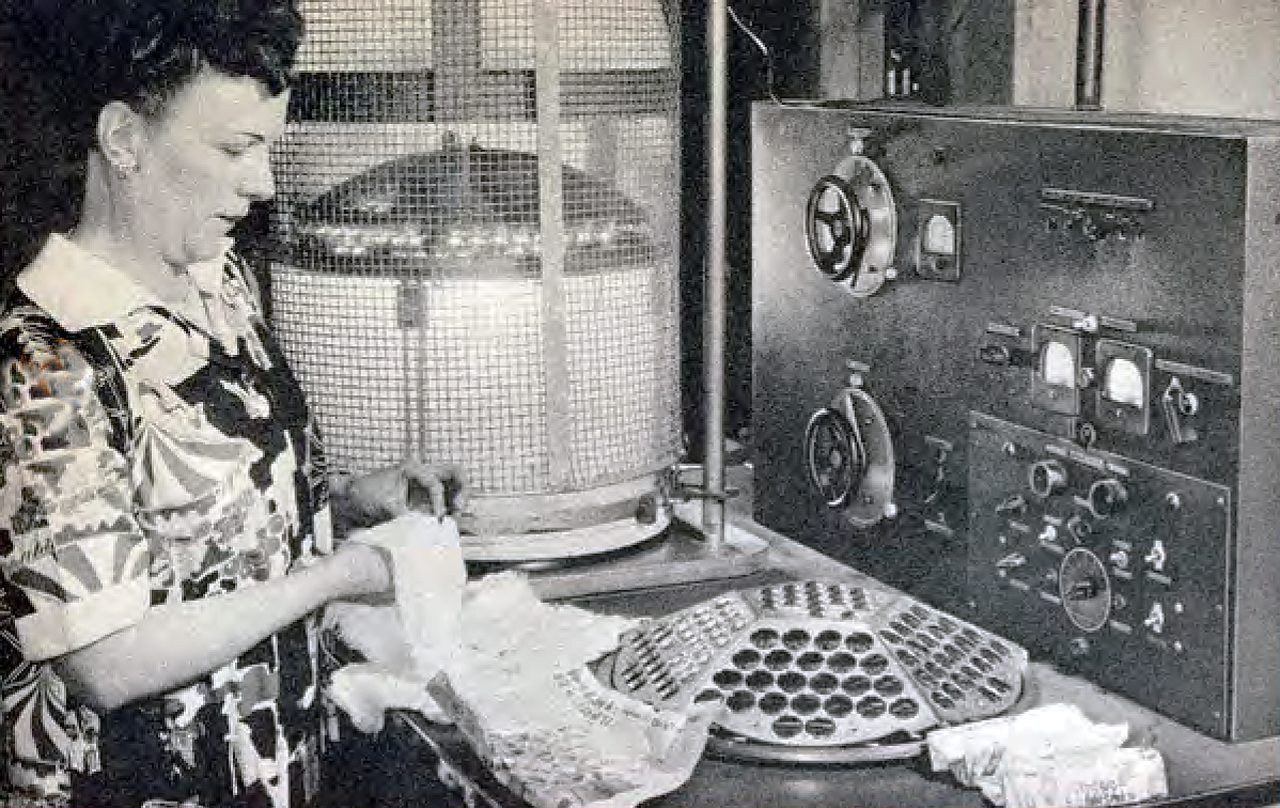
All projector-condenser lenses are coated, and polished by hand in Keystone’s own coating department.
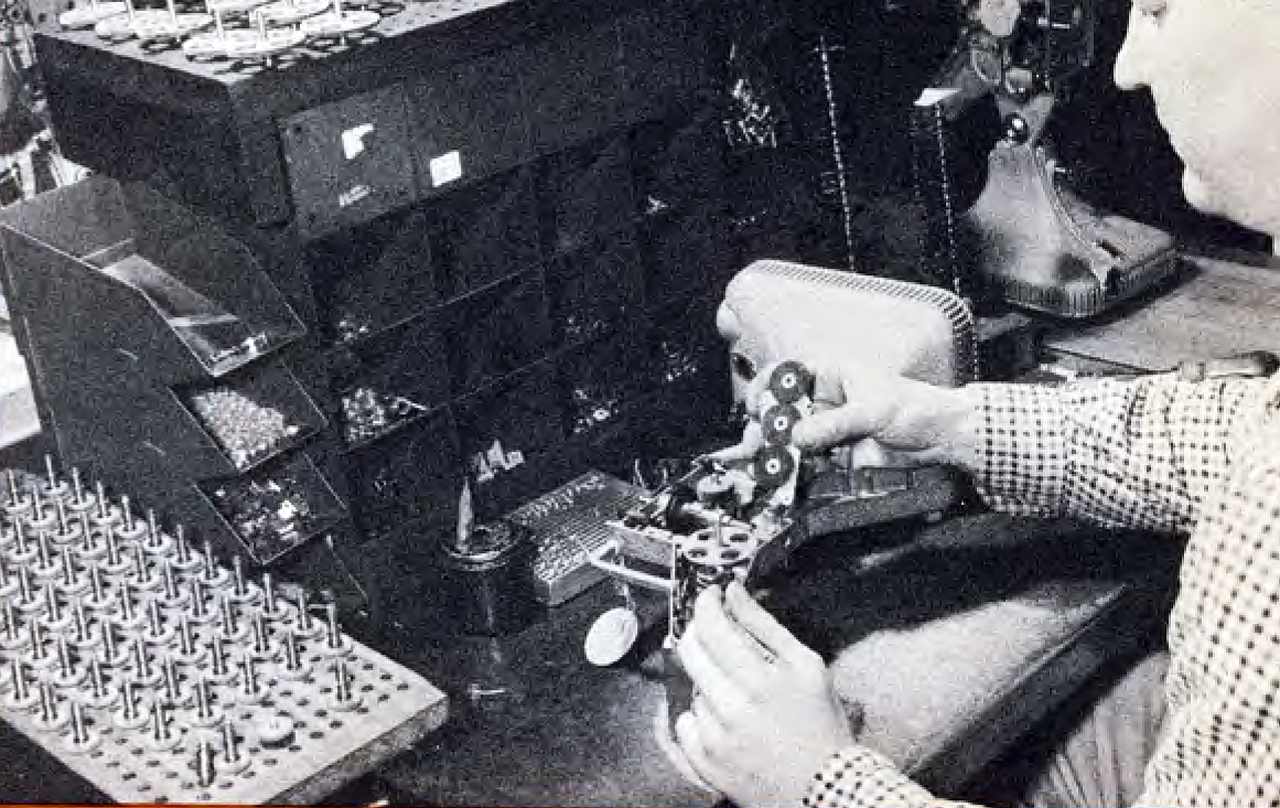
Fitting gears in the projector arm. Precision-gear film wind is an exclusive feature in many Keystone models.
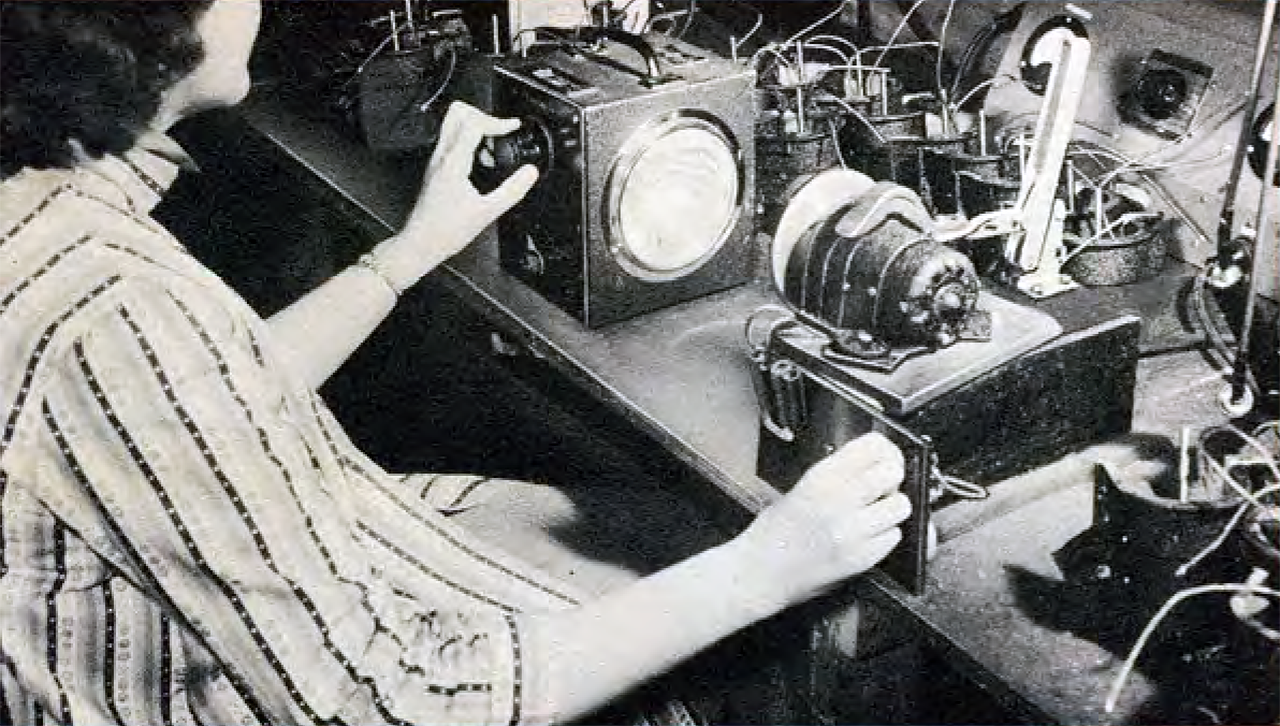
Stroboscope checks Keystone motor during assembly. All projector motors are assembled by Keystone.
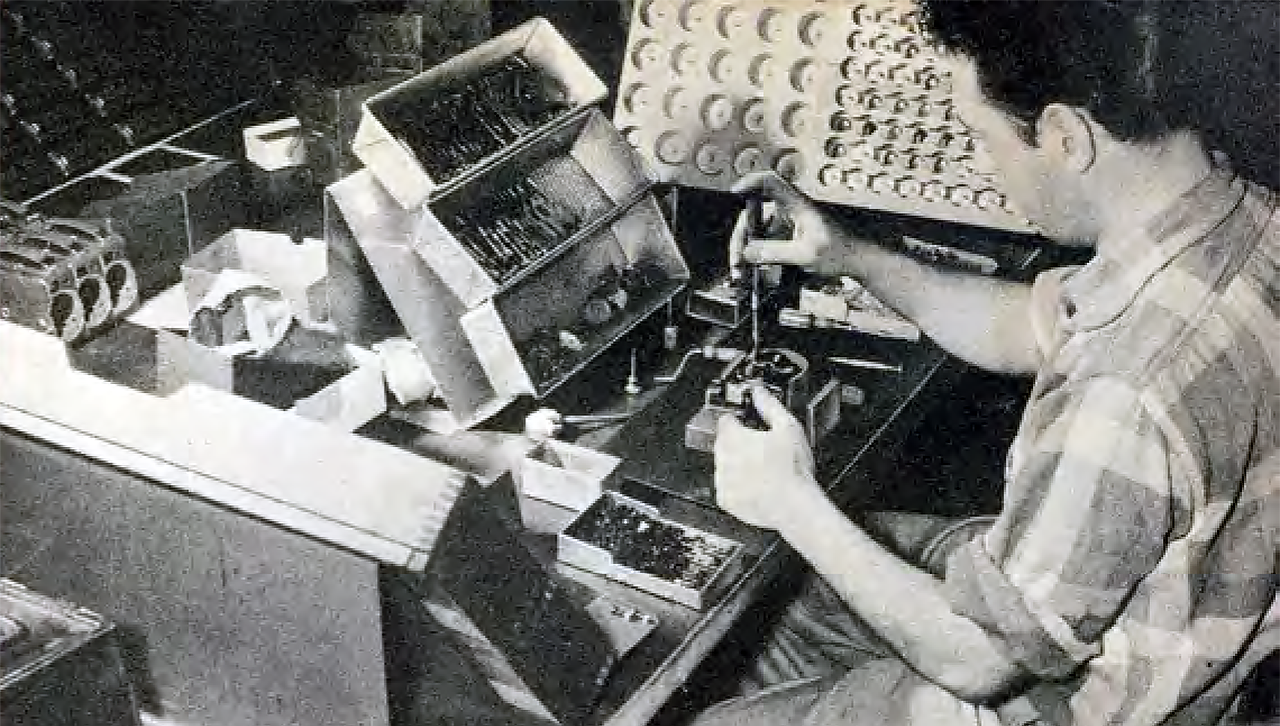
Sub-assemblies are brought together in camera case in one of the first production steps. Tiny screw being driven was produced by Keystone’s own screw machines.
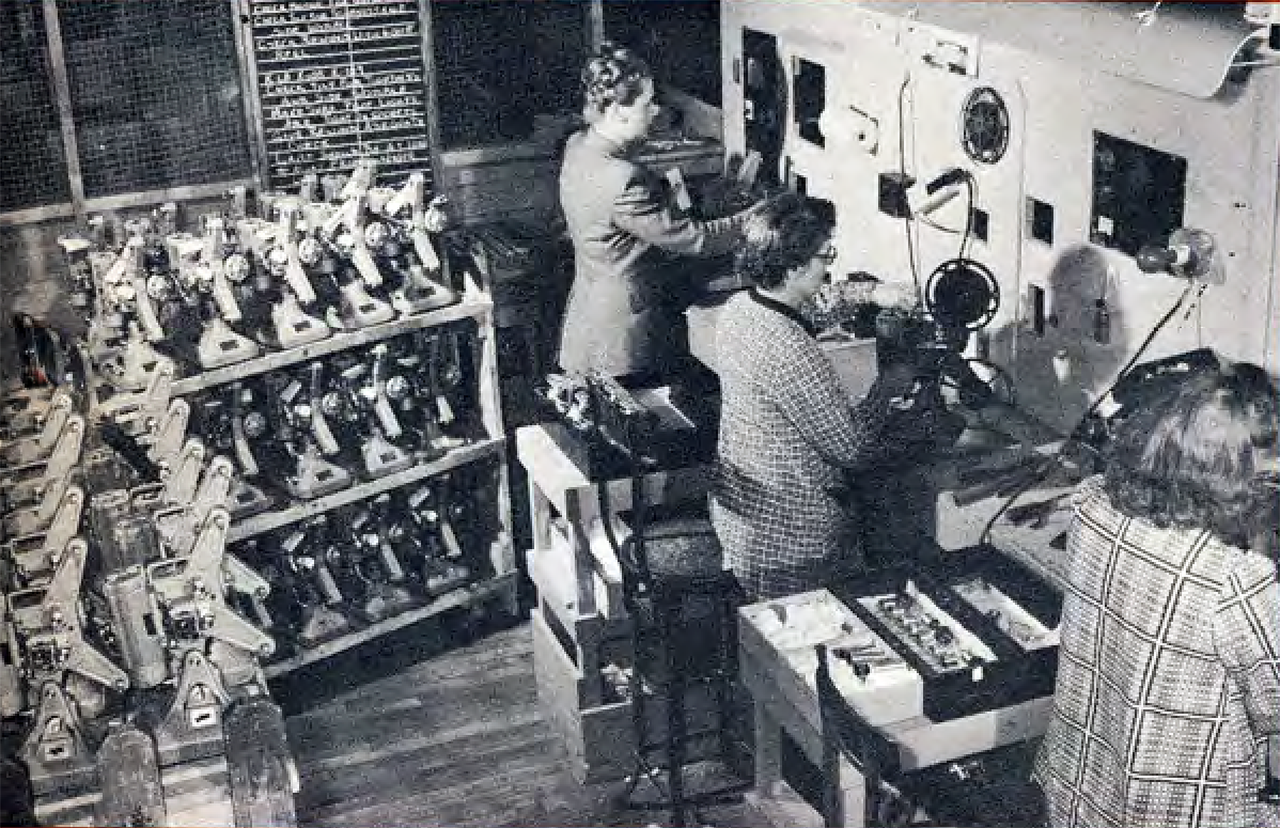
Before a projector is marked O.K. a final darkroom test is made; photo-electric cells measure the evenness of illumination all over the film.
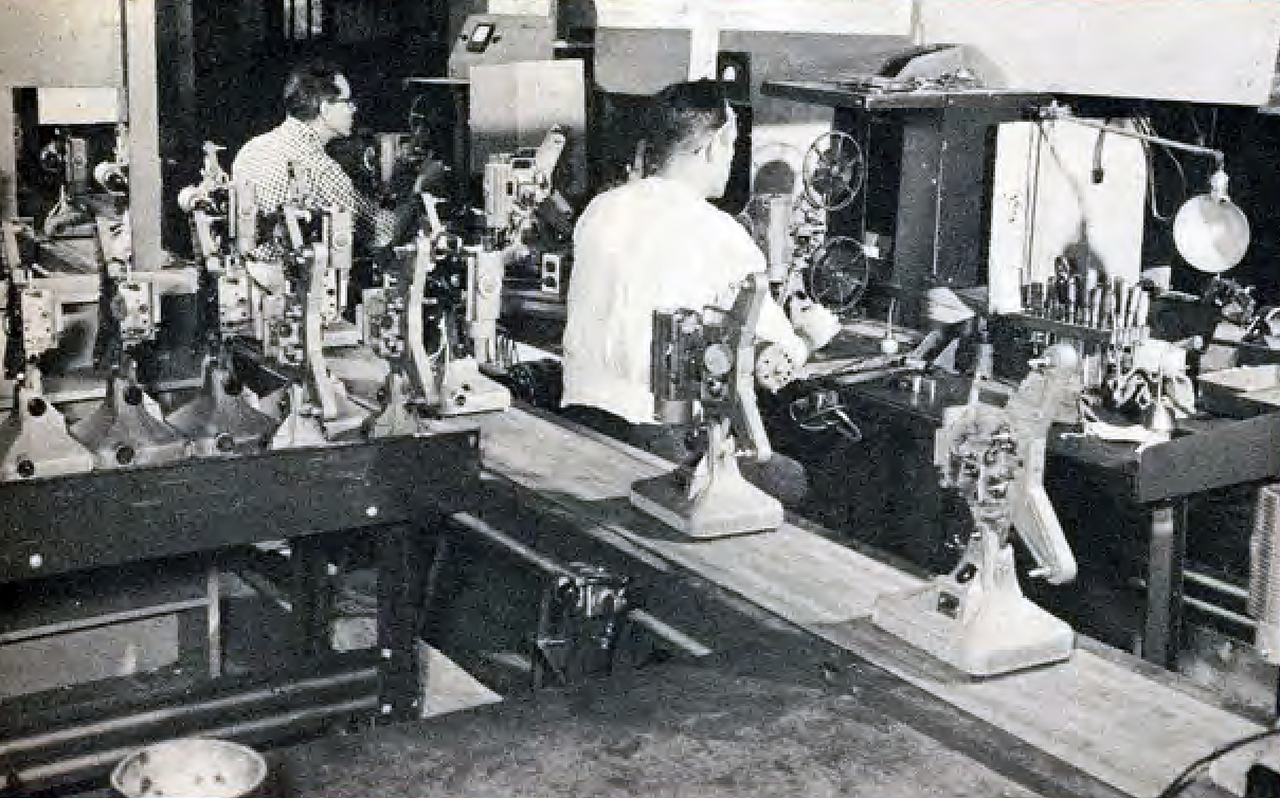
All through production Keystone projectors must pass rigorous tests which include runs with live film.
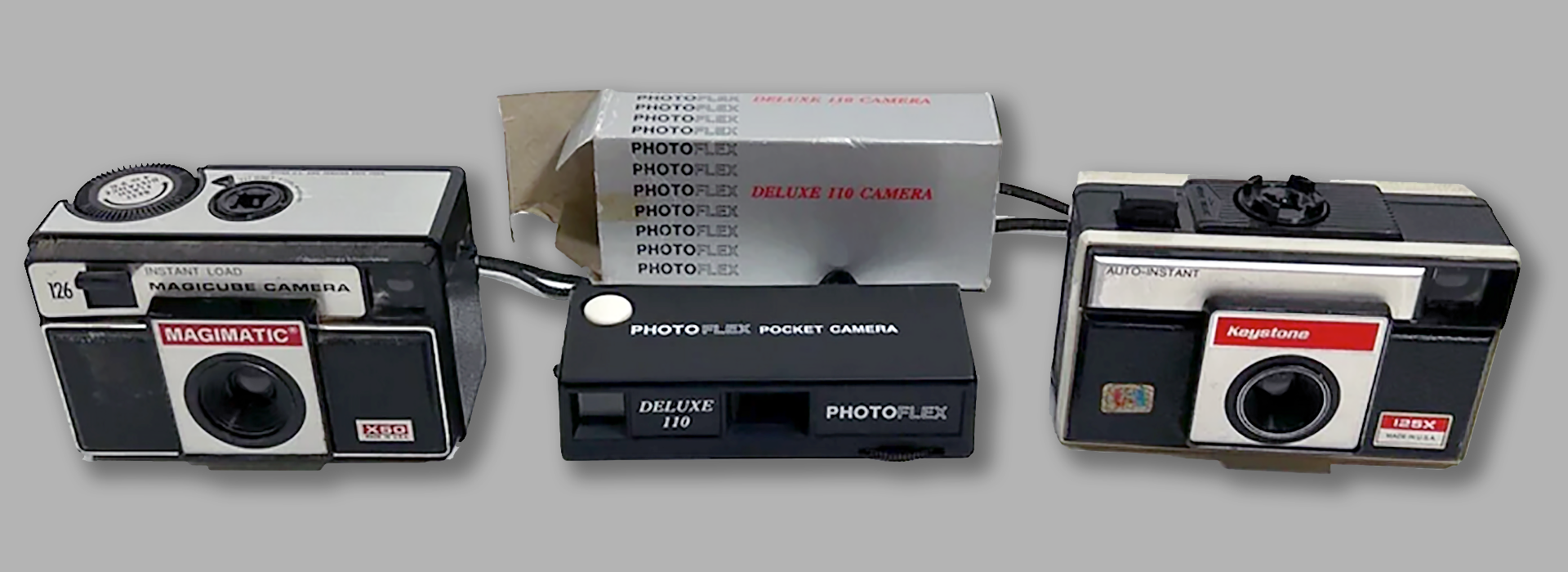
The company provided a.o. following cameras:

- Keystone 465 Slim Line
- Keystone 470PD
- Keystone 470PM Focus Free Message Camera
- Keystone 770
- Keystone Easy Shot 400X
- Keystone Easy Shot 455PN
- Keystone Easy Shot 500
- Keystone Easy Shot 500X
- Keystone Easy Shot 600
- Keystone Easy Shot 700
- Keystone Easy Shot 700X
- Keystone 800
- Keystone ES-P
- Keystone Everflash AF1
- Keystone Everflash AF2000
- Keystone Everflash 3570
- Keystone Everflash 3580
- Keystone Everflash 3590
- Keystone Everflash Funshooter 70
- Keystone Everflash Funshooter 80
- Keystone Regal 35
- Keystone Regency
- Keystone Regency Easy Shot 1
- Keystone Regency Easy Shot 2
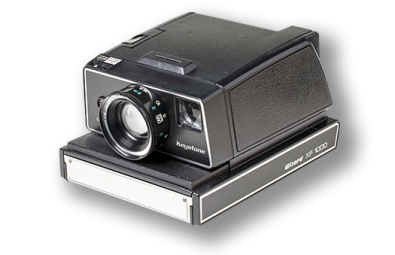

- Everflash 1030
- Everflash 1040 Telephoto
- Everflash 1050
- Everflash 1070

- Keystone 115X
- Keystone 225
- Keystone 445X
- Keystone 465X
- Keystone Everflash 10
- Keystone Everflash 20
- Keystone Everflash 30
- Keystone Everflash 40
- Keystone Auto-Instant 125X
- Keystone Auto-Instant 145X
- Keystone K 1010
- Keystone K 1020 SLR Auto-Instant Reflex (SLR)
- Keystone 125 Flash Sweep
- Keystone 725EF
- Keystone 825EF

- Keystone 106
- Keystone 305
- Keystone 310
- Keystone 405
- Keystone 410
- Keystone 309ES Sensitron
- Keystone 310M Tele Motor
- Keystone Fun Shooter 2
- Keystone Fun Shooter 30
- Keystone Pocket Everflash 120
- Keystone Pocket Everflash 130
- Keystone Pocket Everflash 140
- Keystone Pocket-Matic 10
- Keystone Pocket-Matic 101
- Keystone Pocket-Matic 20
- Keystone Pocket-Matic 202
- Keystone Pocket-Matic 303
- Keystone Pocket-Matic 404
- Keystone Twin Lens 409
- Keystone XR33
- XR44 Telephoto Camera
- Keystone XR76
- Keystone XR106
- Keystone XR108
- Keystone XR207
- Keystone XR308 Telephoto
- Keystone Zoom 66
- Keystone XR608 Zoom Everflash
(Zavod Arsenal)
COMPANY NAMES:
1764-2009: Kiev-Arsenal;
2009: company closed.
COMPANY ADDRESSES:
1764-2009: The Pechersk Fortress, Tsitadel’na Street, Kyiv, Ukrain.
Arsenal is known best for cloning some pretty good cameras: Hasselblads, Contaxes, Nikons and Pentacon Sixes. The company also created one of the most original of all cameras: the Kiev-10. Of all Soviet camera manufacturers, Arsenal has the largest cult following, given their product complement of cheap, yet usable, medium format equipment.
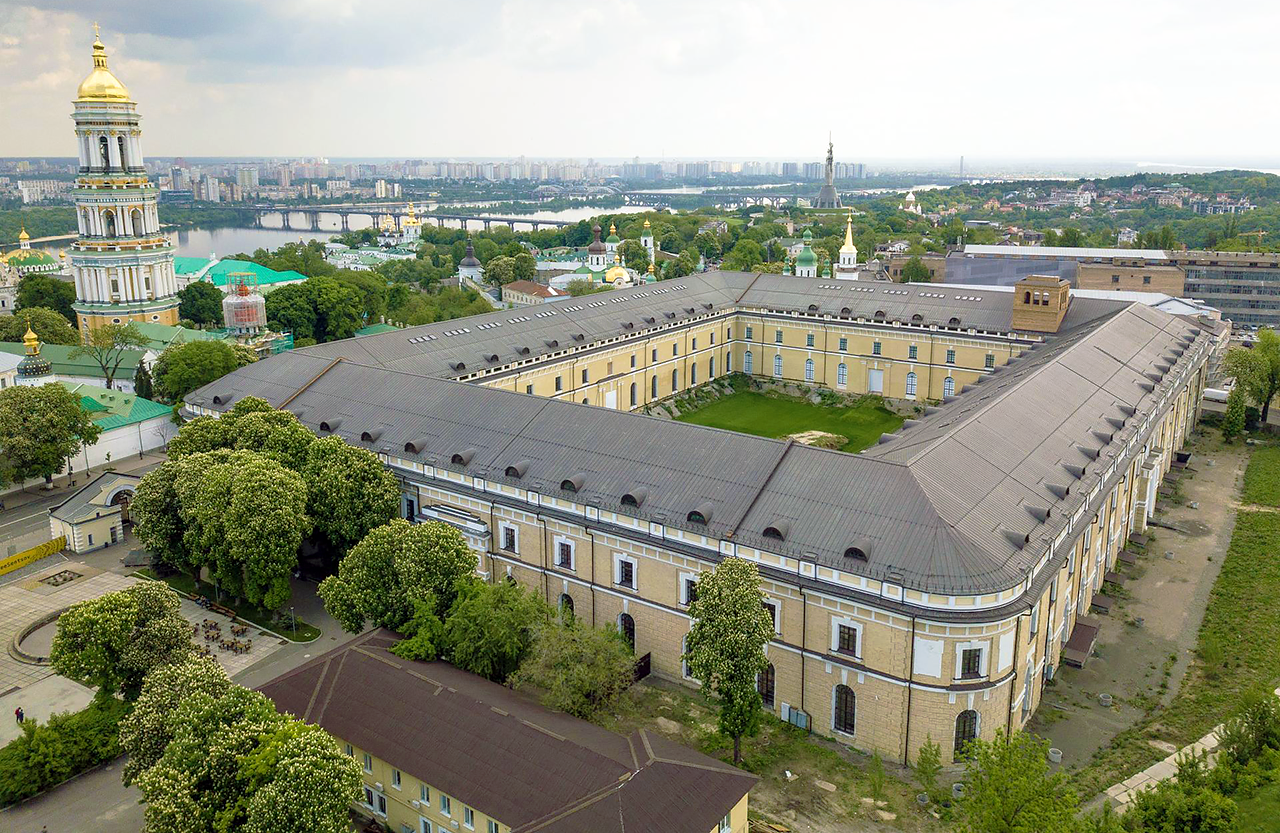
General view of the Mystetskyi Arsenal with the Lavra Monastery visible in the background
Kiev Arsenal is a Ukrainian company founded in 1764 under the rule of Empress Catherine II, as a repair and production facility of the Russian army inside a fortress compound in the Pechersk district of the city, which was originally built by Peter the Great.
Commonly referred to as the Arsenal Factory, it’s one of the most storied and famous industrial factories in the former Soviet Union as well as modern day Ukraine. When it comes to photography, Arsenal is perhaps best known for its Kiev-line of rangefinder, viewfinder, SLR, and sub-miniature cameras.
In January 29, 1918, the workers of the factory organized an armed pro-Bolshevik mutiny known as a Kiev Arsenal mutiny or a January Rebellion against Tsentral’na Rada, the Ukrainian assembly that declared the independence of Ukraine.
While the civil production lines were added to the factory starting from 1918, the factory produced mostly the military related products throughout its history. In the 1920s, 1930s and during the World War II the factory mainly produced the artillery, anti-tank and anti-aircraft guns.
In summer 1941, immediately after the outbreak of the war between the Soviet Union and the axis powers, the factory was quickly evacuated to the Russian city of Perm in the Ural Mountains far away from hostilities. The factory buildings in Kiev suffered heavy damages from German bombings. The relocated “Arsenal” continued to play a major role in the arming of the Nazi-fighting Red Army. It wasn’t until after the Great War ended that the company returned to Kiev as Завод Арсенал (Zavod Arsenal or “Arsenal Factory” in English) and production of civilian products began.
After the War
After the Third Reich’s defeat in World War II, the Allies occupied Germany and began carting off German technology. The Soviets stormed facilities like the Zeiss factory in Dresden, commandeering machinery and schematics alike to send back to the Arsenal Factory in Kiev.
 After simplifying some of the designs for cheaper production, Arsenal began manufacturing approximations of foreign cameras from companies like Zeiss Ikon (under the name Kiev 4A), Hasselblad (under the name Kiev 88), and Nikon (under the name Kiev 19).
After simplifying some of the designs for cheaper production, Arsenal began manufacturing approximations of foreign cameras from companies like Zeiss Ikon (under the name Kiev 4A), Hasselblad (under the name Kiev 88), and Nikon (under the name Kiev 19).
Furthermore, Arsenal also designed their very own cameras like the peculiar looking Kiev-10, one of the most innovative cameras to ever be produced in the Soviet Union.
During the Cold War arms race, Arsenal developed dramatically, becoming an important manufacturer of the military-related products and employing tens of thousands of people. The factory mainly specialized in optical components for the Soviet military and space programs.
 The factory also produced the professional grade photographic cameras “Kiev” but civil production played only a minor role in factory output. Tens of thousands of people where employed at the “Arsenal”
The factory also produced the professional grade photographic cameras “Kiev” but civil production played only a minor role in factory output. Tens of thousands of people where employed at the “Arsenal”
After the beginning of the perestroika, the military orders did drop drastically and the Arsenal factory fell into a crisis. The management attempts to convert the factory by concentrating more on the consumer optics and other civil products did little to help the factory to emerge from the crisis. Comparatively insignificant figures of civil production sales could not support the employment of military-specialized workers in such numbers and maintain the gigantic premises.
Unfortunately, the original Arsenal Factory closed its doors in 2009 and Arsenal appears to have stopped manufacturing consumer cameras. However, many of the factory’s optical engineers are now working for another Ukrainian company called Arax who are still repairing cameras and lenses originally designed and manufactured by Kiev Arsenal. Arax cameras are generally considered to be much higher quality versions of the original Kiev designs, and when coupled with vintage Carl Zeiss Jena glass (made for the Pentacon Six mount), can make beautiful photographs.
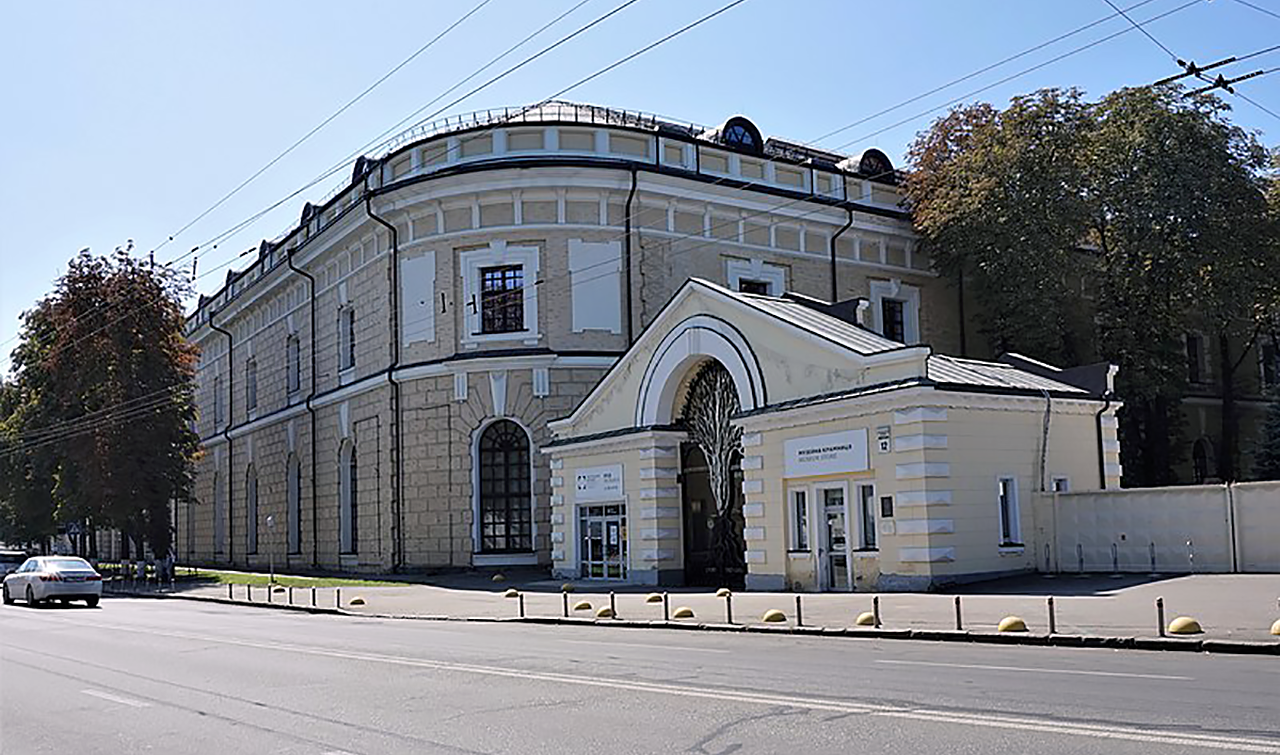
The large fortress-looking brick structure of the Arsenal factory, situated on the Tsitadel’na Street, is poorly maintained. The process of converting the building to a civil use is underway.
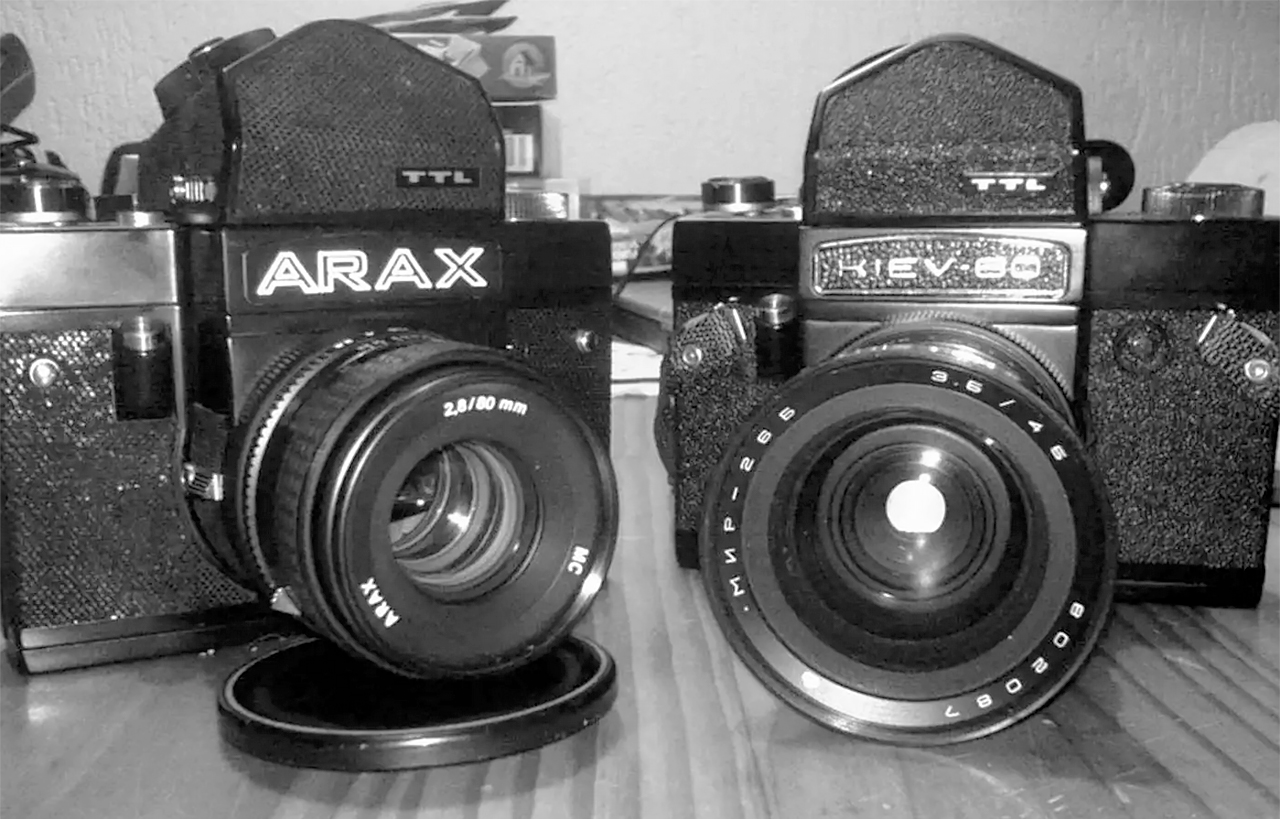
Kiev 60 and Arax 60 side-by-side.
A little bit more about the production
After the WWII had ended, the Soviet Union demanded new sets of Contax tools from the original toolmaker in Dresden and then ordered a fair number of trial cameras to be made with Zeiss trademarks and coated lenses from these 1946 in post-war East Germany. With this successful, everything together with German instructors was transferred to Kyiv. Missing specialists were in a few cases recruited in West Germany.
Any still available parts went in the same direction. In fact, removing the front of some very early Kiev cameras, one could see that the metal was originally stamped with the Contax name, then pressed out and re-stamped as Kiev.
By the early 1950 all the parts for Kiev cameras were produced in Ukraine. The Arsenal factory produced all Kiev (Cyrillic: Киев) cameras.
The Kiev camera, like Zeiss Ikon Contax, is a full frame 35mm rangefinder camera with a long rangefinder base and combined rangefinder-viewfinder. It has a metal “window blind” shutter, which runs vertically. Shutter speeds range from 1/2s to 1/1250s + B.
The four digit serial numbers (first two digits represent the production year, and four additional digits represent the actual serial number) and research suggest production of less than 5,000 cameras annually.
Kiev medium format cameras can generally be divided into two families. The Kiev brand of medium format cameras started, when the Arsenal factory decided to try copying the Hasselblad 1600F around 1956–57. These cameras used a screw-type lens mount similar to the original Hasselblad mount, however, there are mixed reports on compatibility between the two.
Most film backs are not compatible between Kievs and Hasselblads due to different gear mechanisms. However, Kiev viewfinders are compatible with the Hasselblad 1600F and 1000F, and even current Hasselblad V-system models.
The other family of Kiev medium format cameras are based on Pentacon Six and probably inspired by Zenit 70. Those cameras look like enlarged 35mm SLRs.
They use the same breech-lock lens mount as Pentacon Six, allowing them to use all the lenses made for that system, including, but not limited to, lenses made by Meyer Optik Görlitz, Carl Zeiss Jena, Schneider Kreuznach (for the Exakta 66), Kilfitt and others in addition to lenses made by Arsenal Factory. These cameras have a simpler frame-advancement mechanism than the Pentacon Six but it is often poorly adjusted at the factory resulting in incorrect frame spacing.
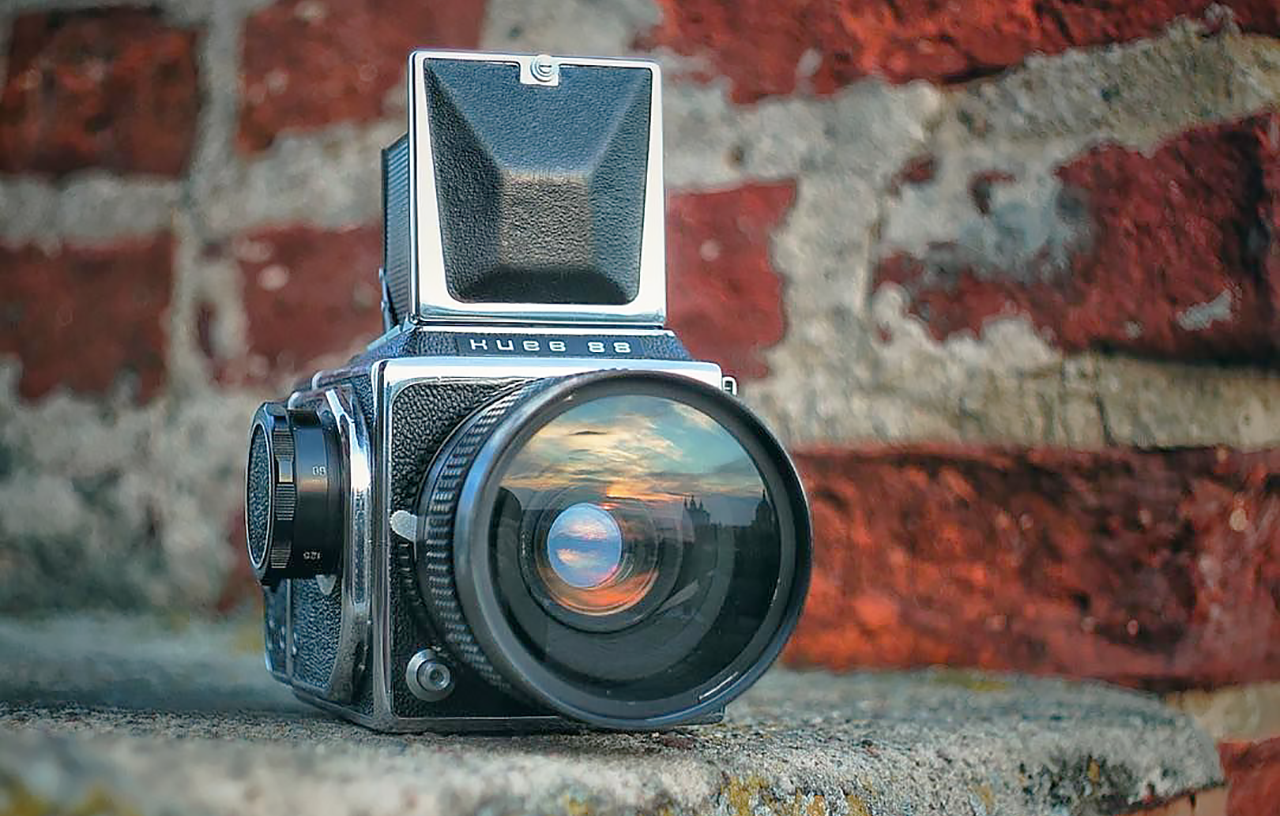
The most well known Arsenal camera is the Kiev 88 (derived from the original Salyut). The Kiev 88 especially suffers from reports of horrible quality control, and is often sold pre-refurbished by companies for around $500 USD. The Kiev 60 is also a medium format SLR, but looks like a big traditional SLR with a fixed back. Finally, the Kiev 4 is a 35mm rangefinder, but it’s a Contax copy rather than a Leica copy.
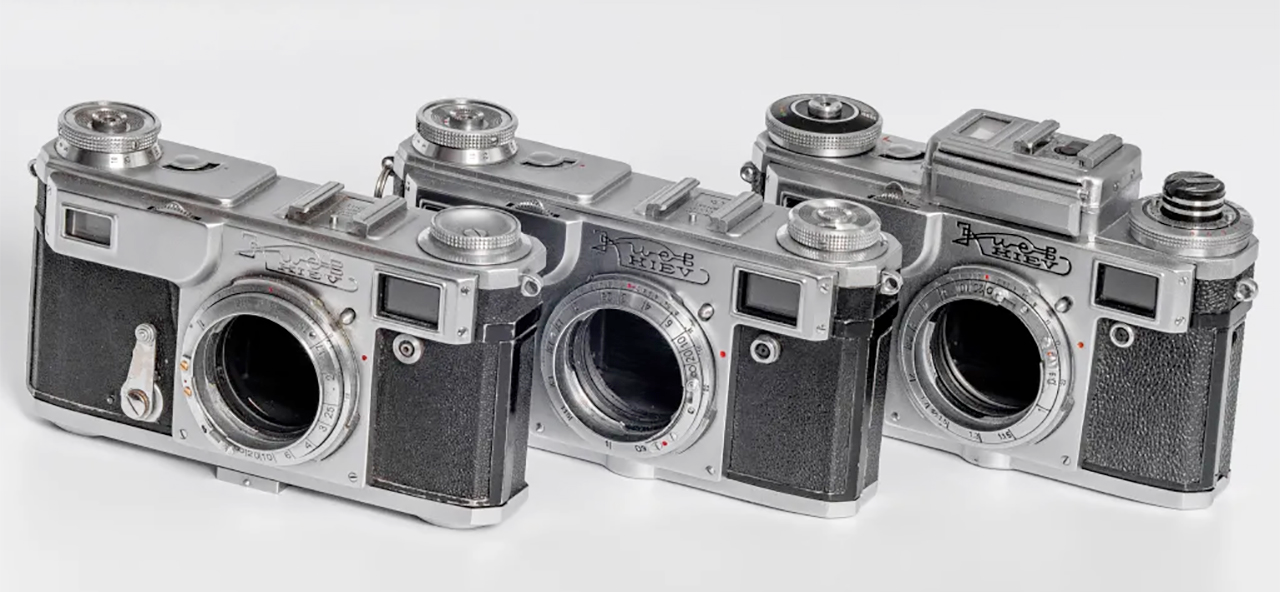
Kiev 2a (Left) vs Kiev 4a (Centre) vs Kiev 4 (Right)
- Kiev-II (2)
- Kiev-2A
- Kiev-III (3)
- Kiev-3A
- Kiev-4
- Kiev-4A
- Kiev-4AM
- Kiev-4M
- Kiev-5
- Kiev 35
- Kiev 35A
- Kiev Exxell Automatic
- Kiev-10
- Kiev-15 TEE
- Kiev-15 TTL
- Kiev-17
- Kiev-17M
- Kiev-18
- Kiev-19
- Kiev-19M
- Kiev-20
- Kiev-30
- Kiev 30 M
- Kiev 303
- Kiev Vega
- Kiev Vega 2
- Arax
- Kiev 6C
- Kiev 60 TTL
- Kiev 80
- Kiev 88
- Kiev 88CM
- Kiev 88C
- Kiev 90
- Salyut
- Salyut-S (C)

The Arsenal factory also made Mir and Arsat lenses, which were good Zeiss copies. Their ubiquitous quality-control problems notwithstanding, the Ukrainian lenses are quite good, and some of them are outstanding.
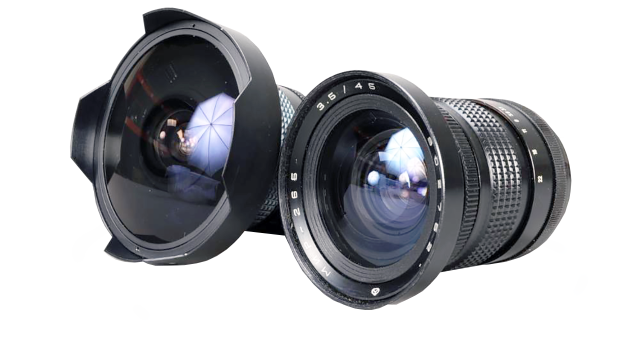
A Kiev Arsat 30mm f/3.5 Fisheye Lens and Mir 26b 45mm f3.5 wide angle Lens fisheye lens
Four Kiev cameras from the delivery program
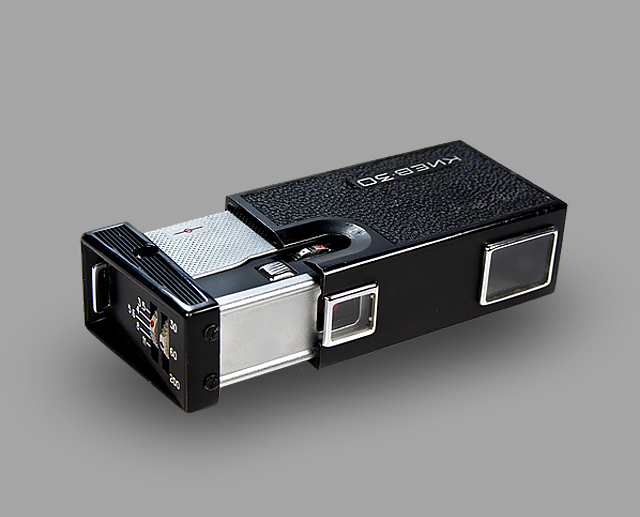
The Kiev-30 is a subminiature camera. For transport in the vest pocket it is collapsible to 3/4 of its size. It was the first Kiev subminiature camera that uses cassettes with unperforated film to achieve a larger frame size, but even Minolta 16 cassettes may fit.
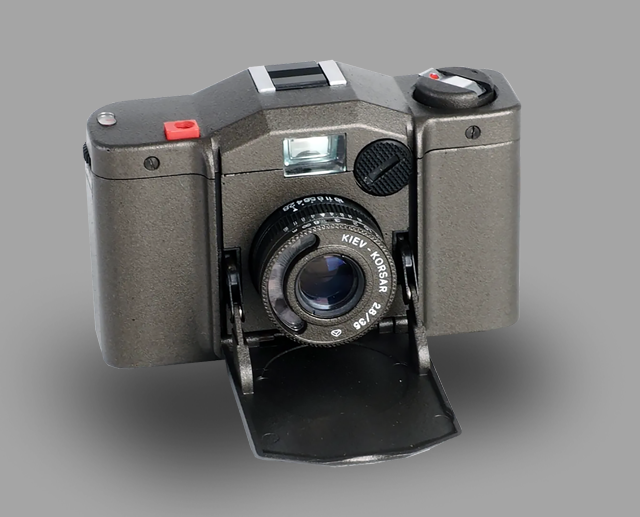
The Kiev 35A is a compact minature 35 mm camera with a fixed lens. It was manufactured between 1985 and 1991. It’s a near exact copy of the Minox 35 EL, that became a popular camera for inconspicious (covert) photography during the Cold War.
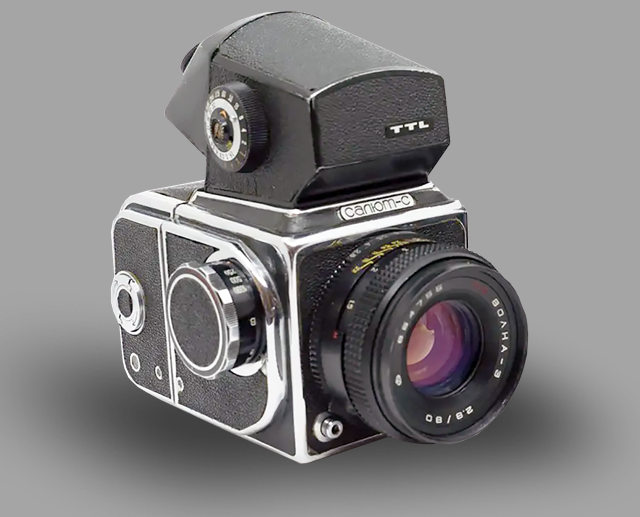
Salyut-S (or Salut-C) is a medium format SLR film system camera, produced between 1972-1980, quantity 30.000. Film format: 120 roll, picture size 6x6cm. The name appears as Салют-С in Cyrillic, thus the model is sometimes called the Salyut-C.
FOUNDER: Russian Government
COMPANY NAMES:
1942: Krasnogorsk Optical Works; 1942: Krasnogorsk Mechanical Plant (KMZ); 1976: PO KMZ (PO = Proizvodstvennoe Obyedinenie = Production Union); 1979: PO KMZ imeni S. A. Zvereva; 1993: S.A. Zverev Krasnogorsky Zavod JSC (Joint Stock Company); 2005: closed camera production except the Horizon Panoramic Cameras.
COMPANY ADDRESS:
Улица РечнаЯ (River street) 8, Krasnogorsk, Moscow 143403, Russia.
Krasnogorsky Zavod is located in the Russian town of Krasnogorsk, thirty kilometres from the Red Square. The KMZ plant (translated into english Krasnogorsk Mechanical Plant) was officially founded on the base of the evacuated optical-mechanical plant No. 69 in February 1941 as a defense factory, to supply the army with optical apparatus like sights and rangefinders. In total, in the period 1942-1945, the plant produced more than 400,000 various devices for the needs of the Soviet army.
During the Second World War German forces came within close range of Moscow, but ground to a halt somewhere near Krasnogorsk. By that time the plant had long been evacuated, like so many others, to the suburbs of Sverdlovsk, a town in the mountains of Ural. In 1944 the factory moved back to Krasnogorsk.
After the end of World War II, KMZ began manufacturing photographic lenses based on specifications obtained from the Carl Zeiss factory in Jena when the Red Army captured it. Furthermore, KMZ developed a civil optics branch for peaceful products like theatrical binoculars, video projectors, and cameras. One of its first products was an opera glass for the Bolshoy Theatre.
In 1946, the factory started production of the Moscow 1 medium format plate cameras, which were copies of Zeiss Ikonta. In 1947 the first FED-Zorkis were produced from leftover FED parts, which were copies of the Leica II camera, the first ZK and BK lenses were manufactured out of seized Zeiss products for Zavod Arsenal in Kiev, and the first Zeiss Ikontas were assembled in Krasnogorsk: the Moskvas.
By 1949 it made some design changes, and thus production of the Zorki began. In 1952, KMZ created an SLR based on the Zorki, and thus the Zenit was born, which later became the most popular SLR cameras in the world. Like the Zorki, it had a 39 mm screw mount (ZM39), but due to its positioning, Zorki lenses with an M39 mount could not be used, as they could not focus except at close range.
The 1950’s offered Zenits, Iskras and Moskvas. Later eras brought essentially more of the same: though there were quite some experimental models, most of the cameras produced at KMZ were Zenit or Zorki derivatives.
After several modifications and improvements, a completely new version of the ZENIT was introduced in 1962; ten years after the first ZENIT model saw the light of day. It became known as the ZENIT-E, a camera with a hinged back door that resembled a western Praktika. A variant of this camera, the Zenit-ES, was used, for example, with the KGB Photo Sniper camera.
Dealing with two functions
Like most State factories in the Soviet Union, KMZ had both a military and a civil role. The civil role focused on cameras, lenses, binoculars, laser equipment, night vision devices, medical-optical apparatus, and etcetera.
The more important defense tasks involved making areal cameras for ground observation, telescopes for stellar observation, aiding the Russian space program not only by optical products (for instance the camera that made the first picture of the dark side of the moon), but also by testing facilities, making tank sights, artillery sights, aircraft parts, et cetera.
In the special workshop at KMZ, a range of espionage cameras was made for the KGB and other intelligence agencies of the Warsaw Pact. Some popular examples of such cameras are the F-21 (Ayaks), also known as the button camera, the KGB Photo Sniper and the Tochka-58 range of subminiature cameras, which were known in the west as the necktie cameras.
In September 1976, KMZ was renamed to PO KMZ, PO standing for “Proizvodstvennoe Obyedinenie”, a Production or Industrial Union. A PO engulfed more than one factory: it was the name for an entire line of factories and suppliers. That’s why plants as Vilieka, Rostov and Valdai are known as “KMZ’s sister factories” and not as separate plants: they were cogs in the PO KMZ machinery. In 1979, the government renamed KMZ “PO KMZ imeni S. A. Zvereva”, the PO KMZ in the name of S. A. Zverev.
KMZ was more than a small workshop on a single site; it was a huge conglomerate plant with many sub-suppliers (for example UOMZ and ROMZ). KMZ kept many employed, as was in line with the communist ideal of banishing unemployment: in its heyday, KMZ ran a hospital, two culture palaces, one or two colleges, a stadium, an electric plant, a pump station, kolchozes and many more. KMZ also owned many of the houses in Krasnogorsk. The town of Krasnogorsk housed some 100.000 people and certainly one third of those were employed by KMZ. It seems fair to say that KMZ dominated the town.
In 1991, when the communist system was abolished, most State factories had their problems in switching over to a competition-driven capitalist system, and KMZ was no exception. Suddenly companies needed to make profit. The markets opened up for foreign products and the Ruble inflated rapidly. For KMZ’s workers, it meant either seeking another job or being content with a lower wage.
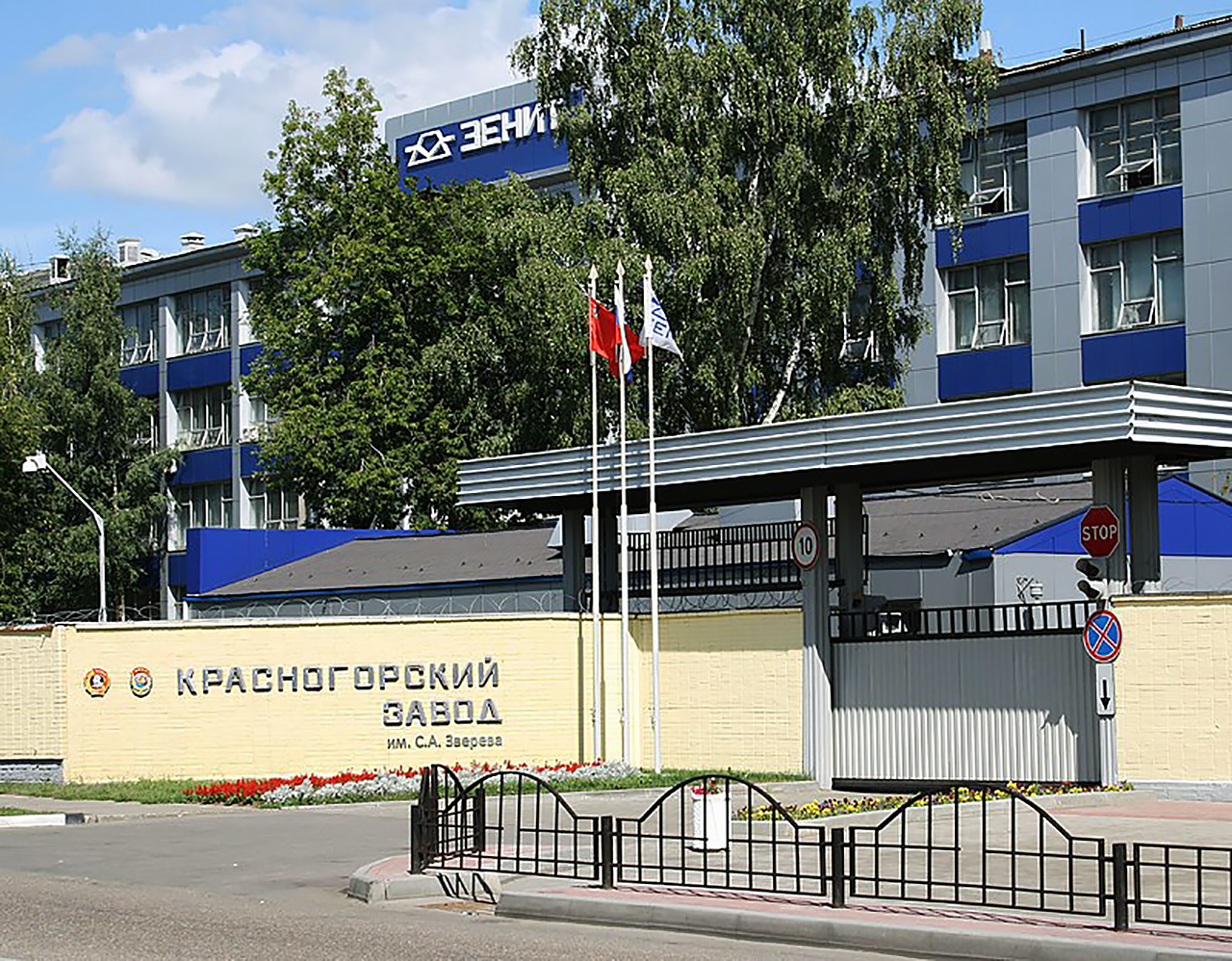
Krasnogorsky Zavod main building

The KMZ logo has changed quite a few times over the years. The original logo, that was used when the factory was started in 1942, consisted of a simple dove prism. In 1949 a refracted light ray, with an open arrow at the end, was added to the prism. At some point, probably around 1970 a closed arrow replaced the open arrow. In its present form the logo consists of a dove prism with a thick reflected light ray, sometimes combined with the name ZENIT or ЗЕНИТ.
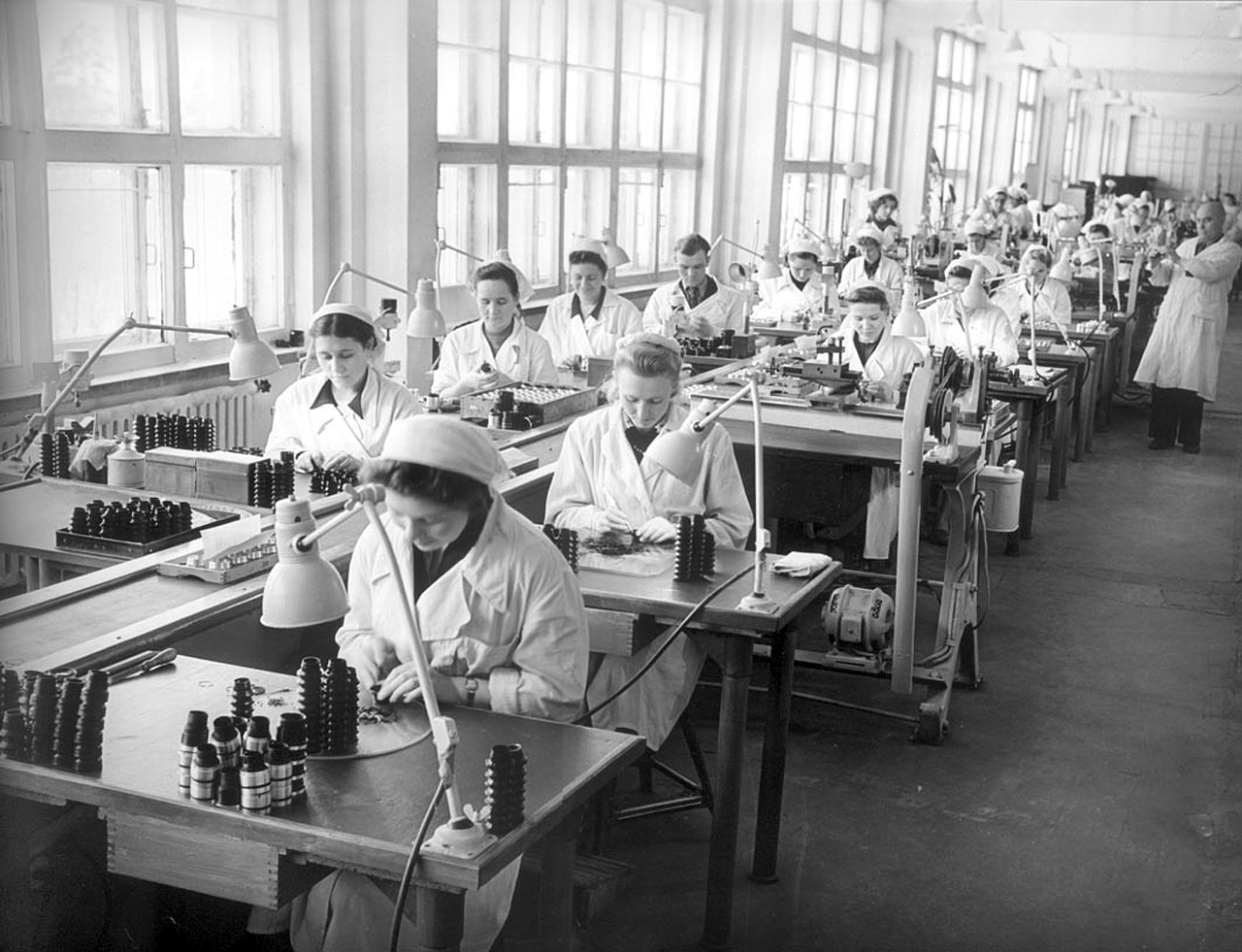
The image above shows the lens assembly line at KMZ in Krasnogorsk in 1956. The KMZ-ZENIT factory is still located at this address today.

In 2010 the Krasnogorsk plant presented a prototype of a digital panoramic camera, the Horizon D-L3 at the Photokina International Exhibition. The new camera had nothing in common with non-digital Horizons. The camera used three Zenitar lenses, an optical viewfinder, and three 5-megapixel sensors in order to take three pictures at once. The camera’s viewing angle was 45 degrees vertically and 120 degrees horizontally, and the camera weighed about 900 grams.
Surviving in a capitalist world
For KMZ, the position was unenviable: not used to producing economically, the market was flooded with better and cheaper Japanese compacts, and their product lineup was a hardly competitive line of Zenit-E descendants.
Krasnogorsky Zavod responded by at first canceling some of its products, like for example the Krasnogorsk-3 16mm cine camera and the Russar 20mm (both of which had potential), and then by developing new ones: the cheaper -12 reflexes like the 212k, the 312m, and recently the 412dx. KZ further focused itself on niche products, like their Horizon-202, gyro-stabilized binoculars, night vision devices, the Zenitar 16mm fisheye, high-speed film cameras, radar devices, and others.
In 1993, KMZ was privatized and renamed to S.A. Zverev Krasnogorsky Zavod JSC (Joint Stock Company), but kept trading as KMZ under the ZENIT brand. The company is still in business today and has specialized in special cameras and laser range finders for weapons and armored vehicles.
KMZ was considered one of the most advanced photo factories in the USSR. But despite this, the cameras were still not perfect, and could hardly compete even with simple European or Japanese cameras. But it was very common for everything that was produced in the USSR.
The fact is that at the very start of the Union of Soviet Socialist Republics, many people worked in factories and research institutes who lived and studied in pre-revolutionary Russia. But every year these people became less and less, and rather incompetent people, completely brought up by the Soviet Union, replaced them.
In 2005 KMZ closed its camera division but continued production of the Horizon panoramic cameras, which were based on military artillery optics. A digital model, the Horizon D-L3, developed jointly with Silvestri, was shown at Photokina in 2010, but does not appear to have been sold.
Since 2008, the KMZ plant (as much of the former-Soviet optical industry) is part of the Shvabe holding company, itself owned by Rostec, a state-owned multi-industry corporation. Krasnagorsk’s recent activities include development of electro-optical devices for military, aviation, space and remote sensing applications, and analytical devices.
The plant’s website includes camera manufacture in its stated activities, but with no details, and it is not clear that cameras are currently made there. The site does state that production of lenses recommenced in 2012.
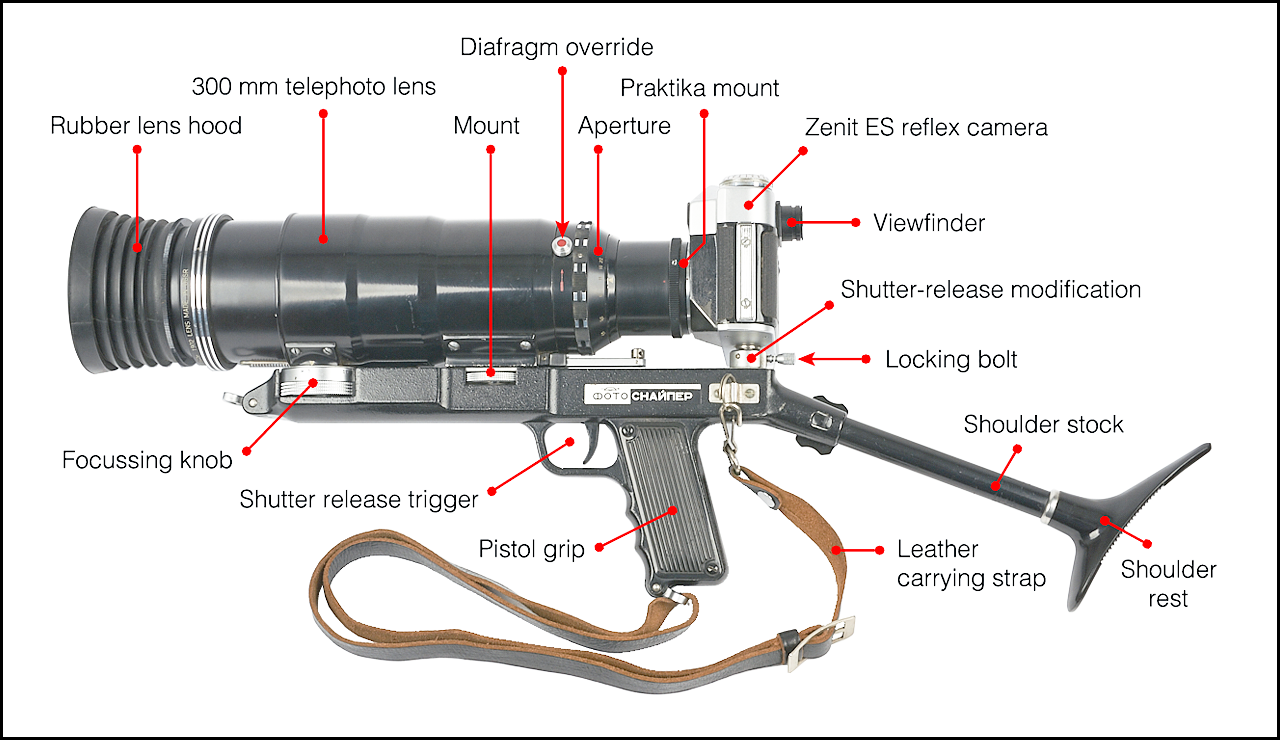
The Photo Sniper was an observation camera, produced from 1965 onwards by the special workshop of KMZ. The camera was used by the KGB’s 2nd Chief Directorate (counter intelligence), the KGB’s 7th Directorate (surveillance), the Border Guards and by East-European intelligence services like the East-German Stasi. The Photosniper consists of a modified Zenit E-type camera with Praktika mount (or equivalent), and a 300 mm telephoto lens, mounted on a long boom with a pistol grip.
and the mounting of the Zenit cameras in the KMZ factory.
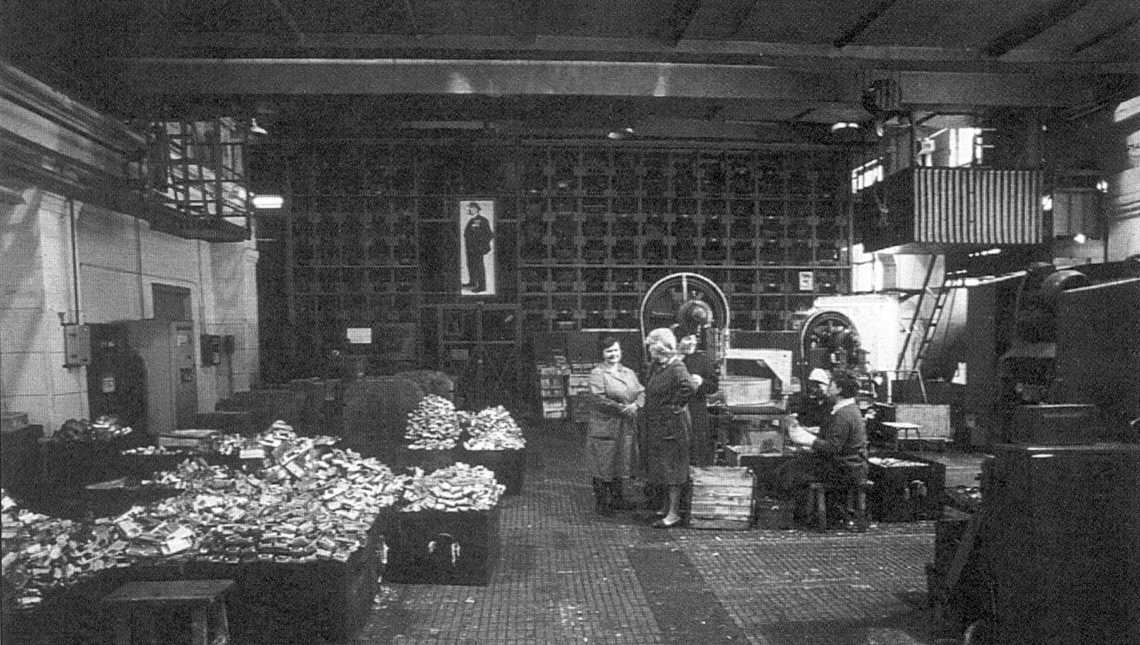
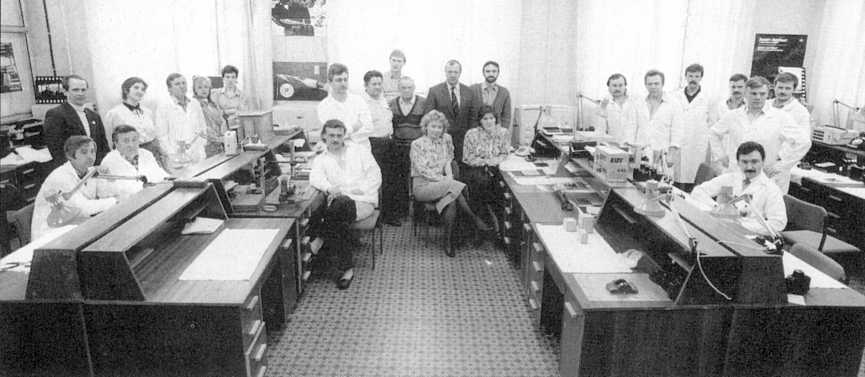
⇑ Production department of the KMZ Horizon with in the middle (with tie) Nicolay Tarasov 3), the “boss”. To his left — P.A. Tikhomirov, one of the people responsible for the Horizon’s production.
⇐ At the Zenit plant, under “father” Lenin’s all-seeing eye. The floor is actually made of aluminium bars!
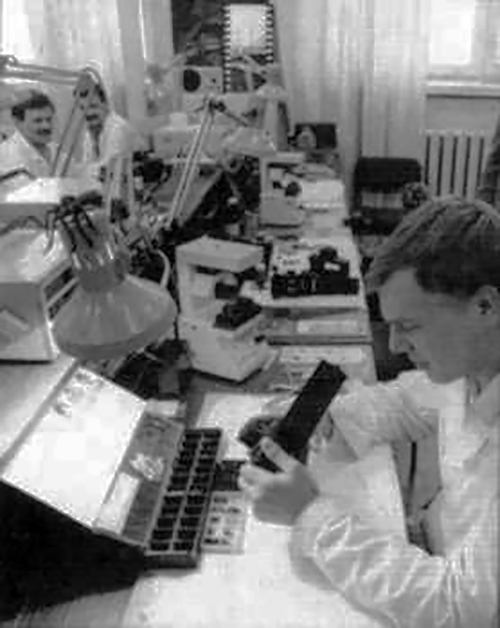
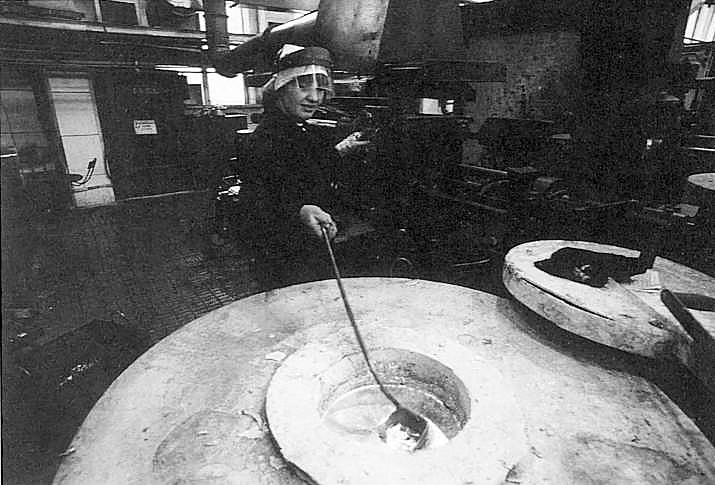
⇑ Hand-pouring of molten aluminium alloy in some die cast machines.
⇐ Every camera is being integrally assembled by just one person, and subsequently checked four times.
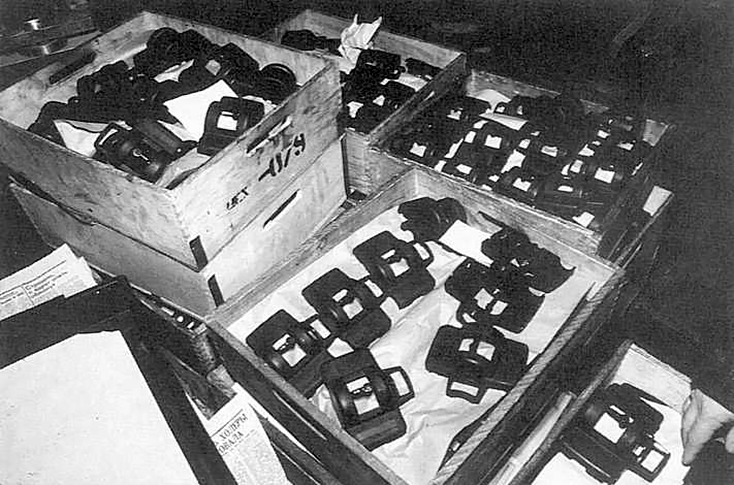
⇑ Unfinished plastic casings for the Horizon awaiting assembly.
Polishing of the lenses. The staff here consists mainly of women. ⇒

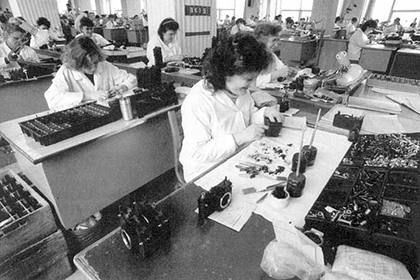
⇑ KMZ’s department where the Zenit single lens reflex cameras are being built.
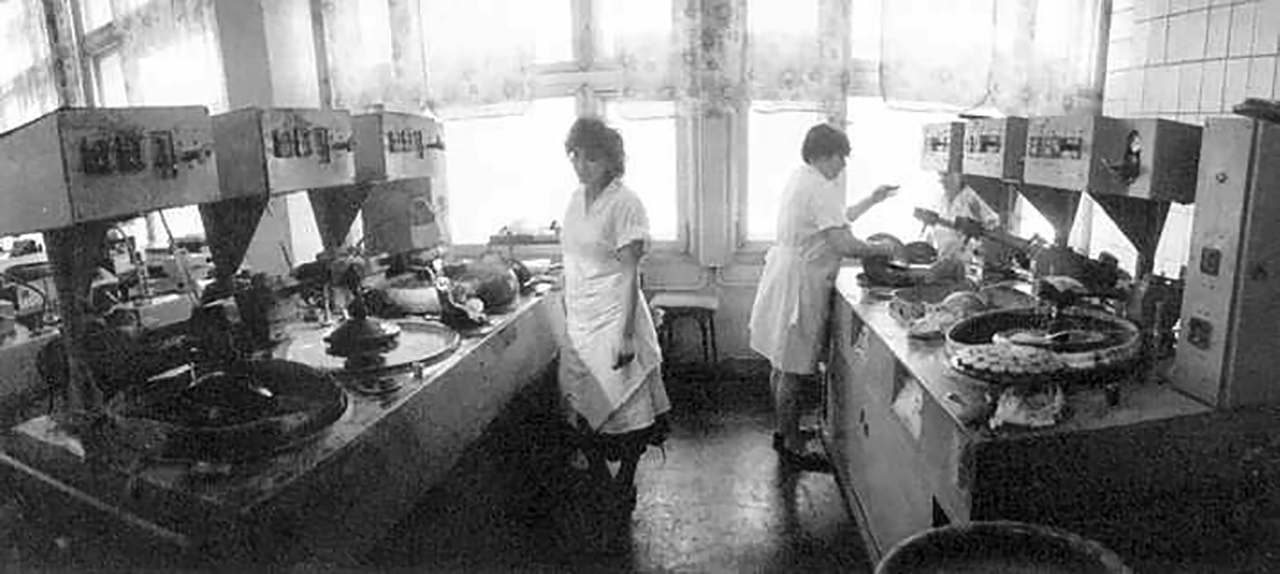
⇑ Manufacturing of lens parts for the Zenit lenses
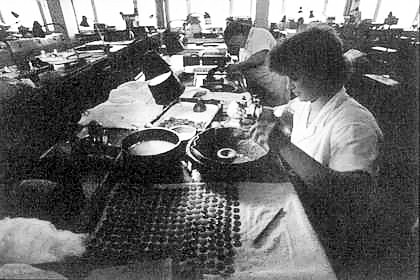
⇑ Each lens element is checked for quality and consequently either used or rejected.
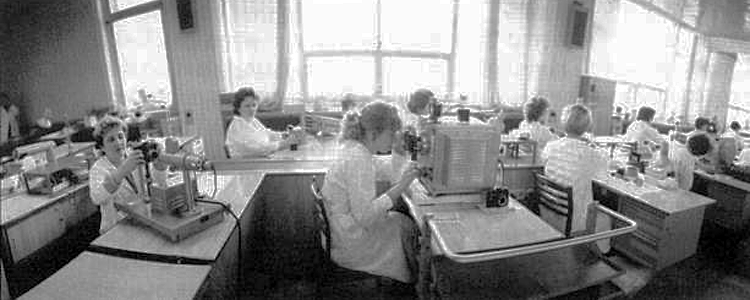
⇑ KMZ assembly hall. Last checks of the Zenit-122
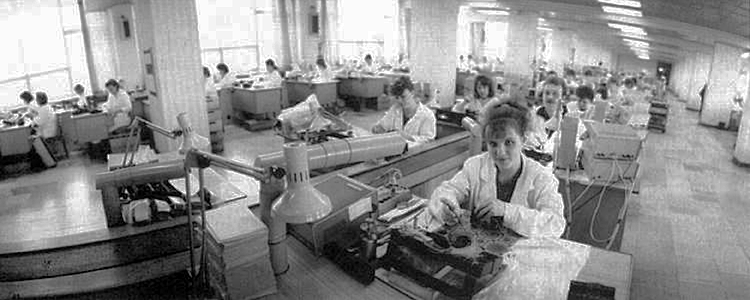
⇑ KMZ assembly hall for the Zenit-122
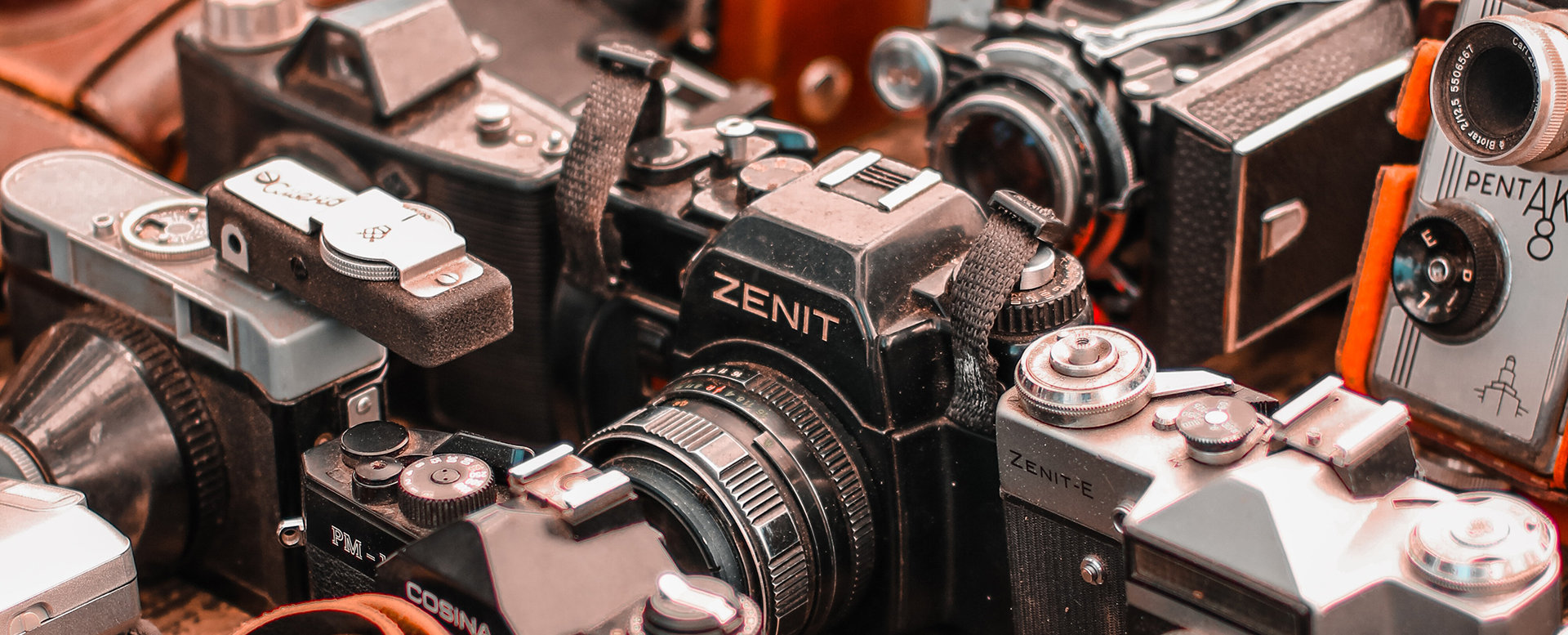
The company provided a.o. following cameras and lenses:
For a complete camera program go to: http://www.zenitcamera.com/catalog/cameralist-eng.html
- Kristall
- Kristall-2
- Kristall-2 with lightmeter Start
- Zenit (84 types) Simple cameras; cameras for nonperforated film; cameras with a central shutter; cameras without TTL; cameras with TTL;
- 510
- 520
- 610
- 620
- Universal turret finder (28,35,50,85 and 135mm)
- Filters
- Lens hoods
- Droug
- Kadr
- Kometa
- Rodina
- Zorki
- FT-2
- Horizont
- Horizon 202
- Horizon 205 pc
- Horizon S3pro
- Panofot-D3
- Panofot-D2
- Zenit Photosniper
- Astra
- Isaev’s stereo-camera
- Moskva-1
- Moskva-2
- Moskva-2A
- Moskva-3
- Moskva-4
- Moskva-5
- Moskva-6
- Iskra
- Iskra-2
- Iskra-3
- Narciss
- Narciss-2
- ZENIT-APS (with Haking)
- Saljut
- Festival
- Zenit-70
- FT
- PanArt-S3
- PAN-120
- Panorama
- Horizont
- Juncor (Juncor = JUNior CORrespondent)
- Foton
- Moment
KMZ manufactured lenses under a bewildering variety of model names. Because of the way Soviet industry was organised, some of these lenses were also made by other factories at times.
- Altair
- Amber
- Beam
- Carat
- Centaur
- Gelionar
- Granite
- Helios
- Industar
- Jupiter
- Lanthanum
- Leningrad
- Maisons
- Meteor
- Mercury
- Minitar
- Mir (e.g. Mir-1)
- Orchid
- OF-f2.8/28mm Panorama
KMZ manufactured lenses under a bewildering variety of model names. Because of the way Soviet industry was organised, some of these lenses were also made by other factories at times.
- Orion
- Pentar
- Rubin
- Roussarie
- Signal
- Sputnik
- Tahir
- Tair
- Telemar
- Teletair
- Telezenitar
- Uran
- Uranium
- Variogoir
- Variozenitar
- Vega
- Zenitar
- ZM
- Zodiac
cameras and lenses from the KMZ delivery program
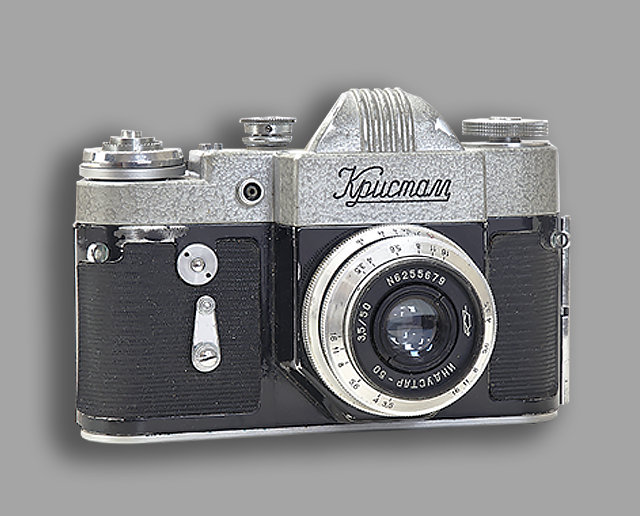
Kristall type 1 is a 35mm film SLR camera, manufactured by KMZ, produced between 1961-62 with quantity 65.433. Кристалл (Кристалл = Kristall), means Crystal, (on the front of the camera Kristall logo is engraved as Cyrillic italics). Kristall belongs to the Zenit series of 35mm SLR cameras. Kristall is the successor of the Zenit 3.
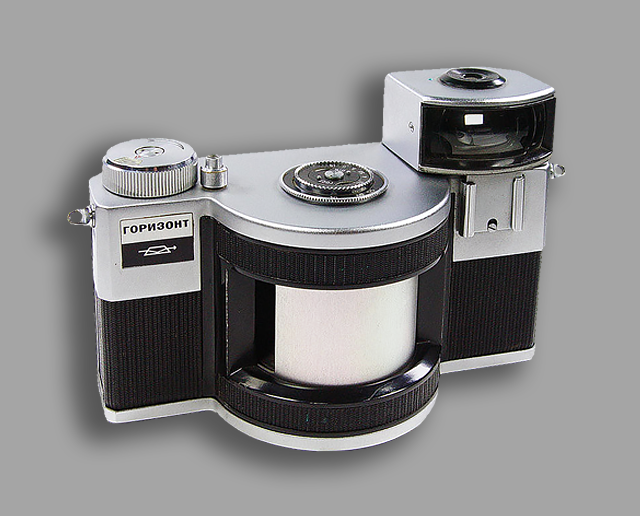
The Horizont Camera, marked in cyrillic Горизонт for the home market, is a sturdy and well built Russian panoramic camera, similar to the Panon Widelux or the later KW Noblex. Some 49,849 were made by KMZ from 1967-1973. The panning 28mm f2.8 lens makes 24×58mm frames on 35mm film, giving a 120° view.
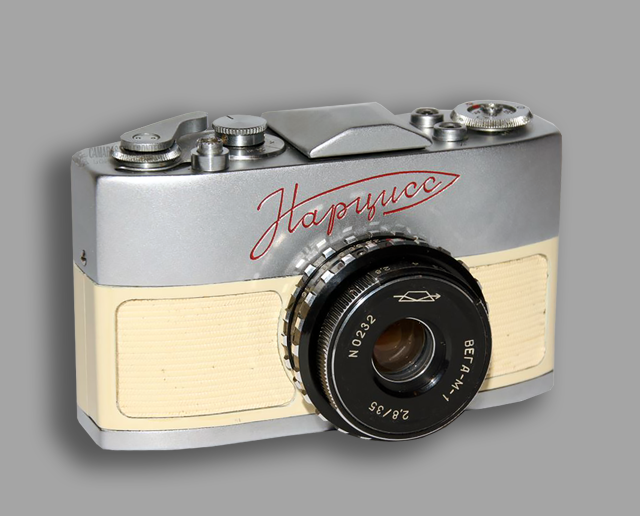
The Narciss was a Russian SLR for 16mm film, made between 1961 and 1965. The film was supplied in (up to) 24-exposure cassettes, into which it was rewound after use, in the same way as 35mm film. Images were 14x21mm. The front had the name engraved in red above the lens; usually in cyrillic, but sometimes in roman capitals (for export models).
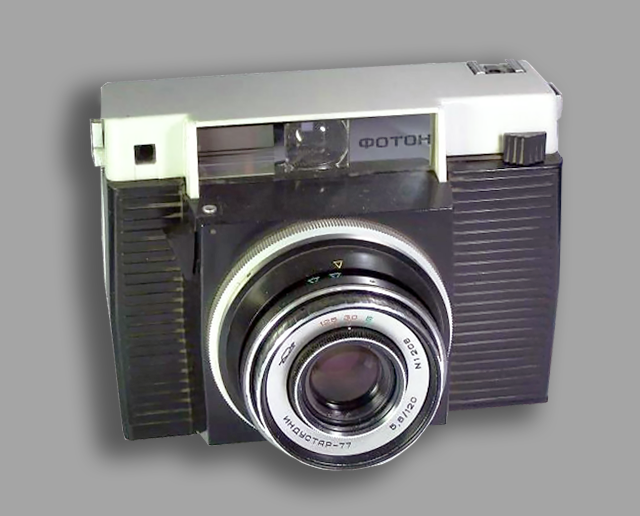
Foton is a medium format rangefinder instant camera produced between 1969-76, with quantity 1,839 units. Foton is a very boxy-looking plastic camera. While it uses the same film, the design of the back is very different from that of Polaroid cameras. It takes 73x96mm images with instant films Moment (USSR) and Polaroid type 42, 47, 48 (U.S.) films.
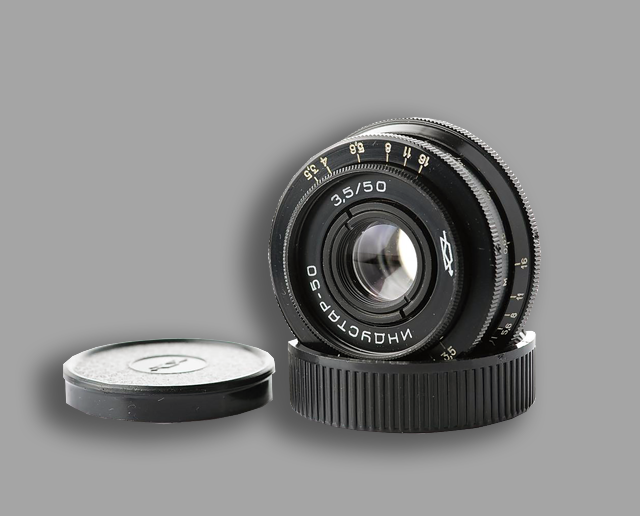
Early KMZ Industar-50 50mm f/3.5 m39 ZTM lens. The m39 ZTM lenses are lenses for early Zenit SLR cameras – flange distance is slightly different from the later adopted common M42 standard. As a result this lens will not quite reach infinity focus(noticable on open apertures), but when stopped down the increase depth of field covers the infinity focus.
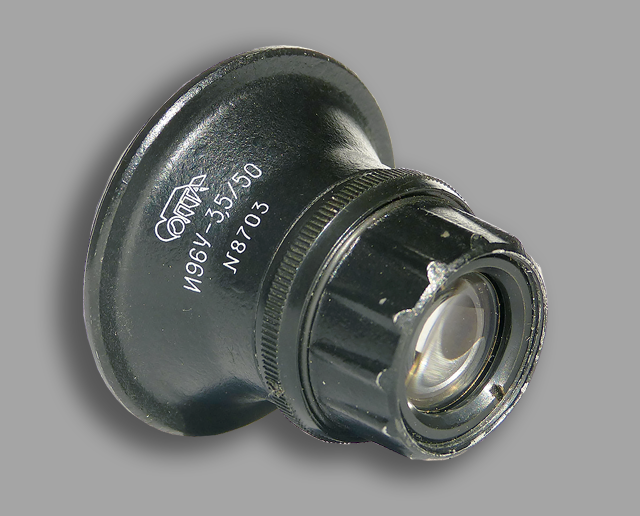
Zodiak-8 3.5/30 (30mm f/3,5) Fisheye Lens for Kiev 88 Mount Medium Format Camera. Zodiac is the name of a family of Soviet ultra-wide-angle photographic lenses of the Fisheye type. All lenses of the family belong to the “diagonal” group and cover an angular field of 180° diagonally across a rectangular or square frame completely occupied by the image.
COMPANY NAMES:
1921: Franz Kochmann Fabrik photographischer Apparate; 1938: Korelle-Werk G. H. Brandtmann; 1947: Korelle-Kamera-Werke; 1948: VEB WEFO, Werkstätten für Feinmechanik und Optik; 1951: VEB Welta-Kamera-Werke.
COMPANY ADDRESSES:
1921: Blasewitzer Straße 64-66, Dresden A 16; 1935: Trinitatis Straße 42, Dresden A 16; 1938: Augsburger Straße 3, Dresden A 16.
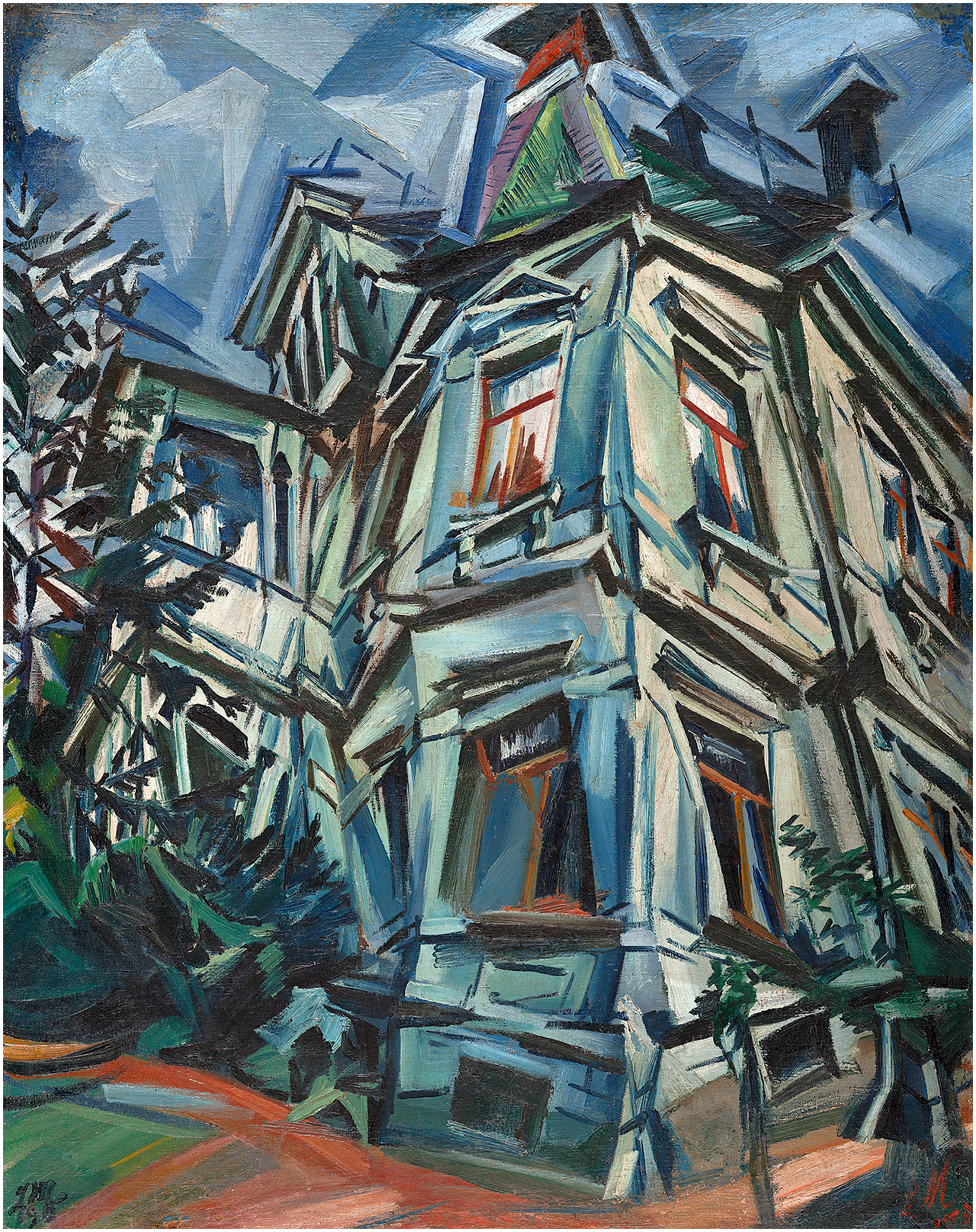
The Corner House (Villa Kochmann, Dresden) – Oil on canvas mounted on panel. 97.2 x 78 cm, painting by Ludwig Meidner
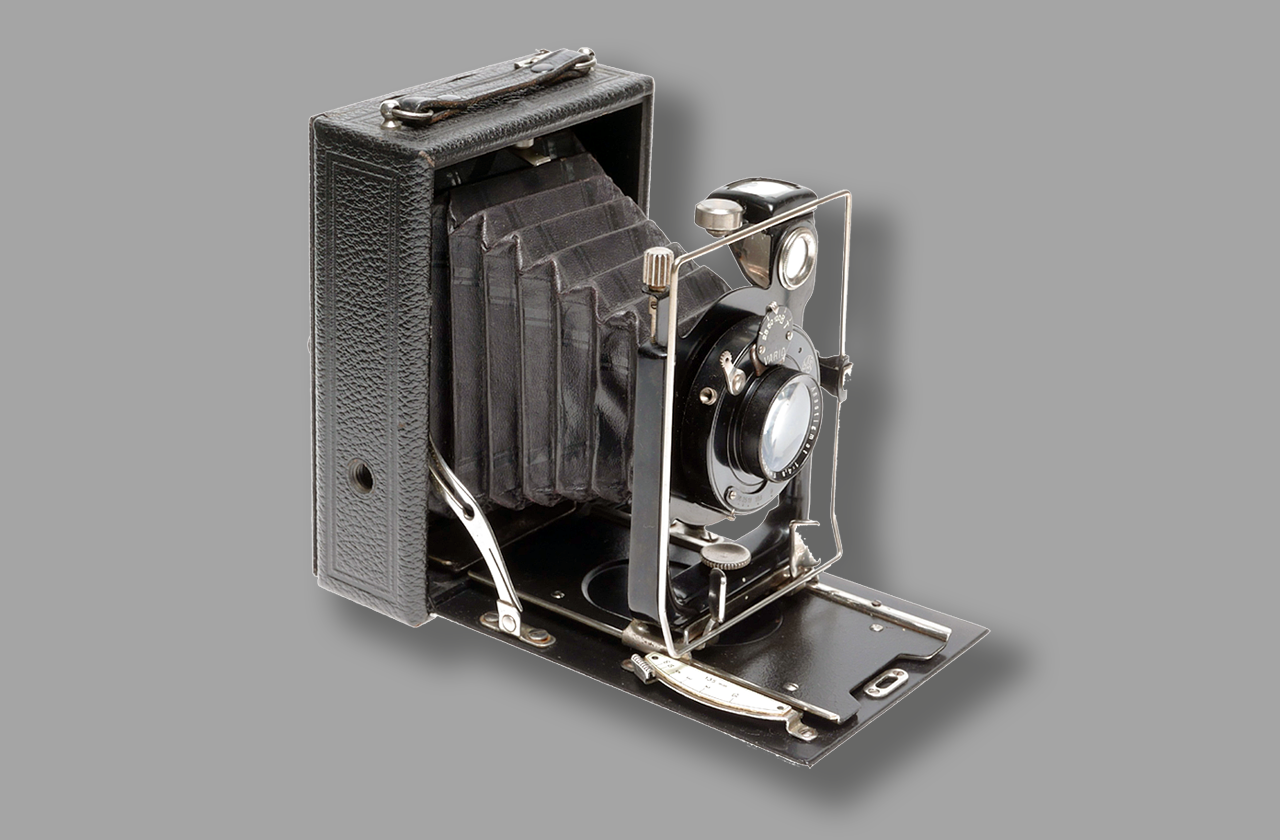
Franz Kochmann ENOLDE 9×12 cm Folding Camera.
 From an early age, Franz Kochmann was interested in what was then a groundbreaking reproduction technique and art form: the creation of permanent images through exposure to light, known as photography. Kochmann had both the foresight and the financial means to make this invention even more successful.
From an early age, Franz Kochmann was interested in what was then a groundbreaking reproduction technique and art form: the creation of permanent images through exposure to light, known as photography. Kochmann had both the foresight and the financial means to make this invention even more successful.
Based on his own ideas and patents, Kochmann was soon developing, improving and producing cameras. He founded the Franz Kochmann Fabrik photographischer Apparate in 1921, and, after first camera construction attempts and patents, he started production of folding cameras.
He was a friend of famous German painters, had a collection of their paintings and named his first labeled camera series Enolde after the most famous of them, Emil Nolde.
The first reflex camera by Kochmann was offered in 1923. It was improved as the Enolde Reflex, launched in 1924. The same Enolde brand was used for various folding plate cameras, and later rollfilm cameras. The next main developments were the Korelle viewfinder folding cameras, issued in various formats from 1931 onwards. The company’s major success was the Reflex-Korelle 6×6 SLR, released in 1935.
Franz Kochmann was keenly interested in art and he purchased paintings from artists who were then not well known nor widely recognized. However, by 1932 many of these artists became recognized by the art world. Unfortunately, they also came to the attention of the Nazis and the then Director of the Dresden Gallery, Herr Hans Posse. Posse was Hitler’s choice to head a commission that was responsible for the theft of many pieces of art from throughout Europe. It became Posse’s job to seize art work from artists like Kokoschka who Hitler had deemed to be degenerate.
Posse is merely described as the curator of the Dresden Gallery, the Venice Biennale, and an agent for several galleries located in Nazi-dominated countries. Actually, Hans Posse was a discredited Nazi criminal who clearly does not deserve to be represented as a respected historical figure of the art world.
In 1938 Franz Kochmann and his family (who were Jewish) were driven to flee from the Nazis and Germany. All other members of Kochmann’s family were arrested from 1938 and then transported to concentration camps. None of them survived.
Soon after Kochmann fled Germany, his art collection, his company, his identity were taken from him. The Kochmann Fabrik was seized and renamed Korelle-Werk G. H. Brandtmann.
Precisely how the “re-organization” of Kochmann’s company was accomplished is not clear. It is known that by late 1939, controlling interest in the Korelle Werke was secured through the German government by G.H. Brandtman & Alfred Ernst Peters and production of the high quality Reflex-Korelle went on.
For a very brief time during 1939 immediately before the onset of WWII, the Reflex-Korelle II was marketed in the United States through an agreement between the “restructured” German company and Burke & James Inc. in Chicago who had previously marketed the Korelle cameras for Kochmann.
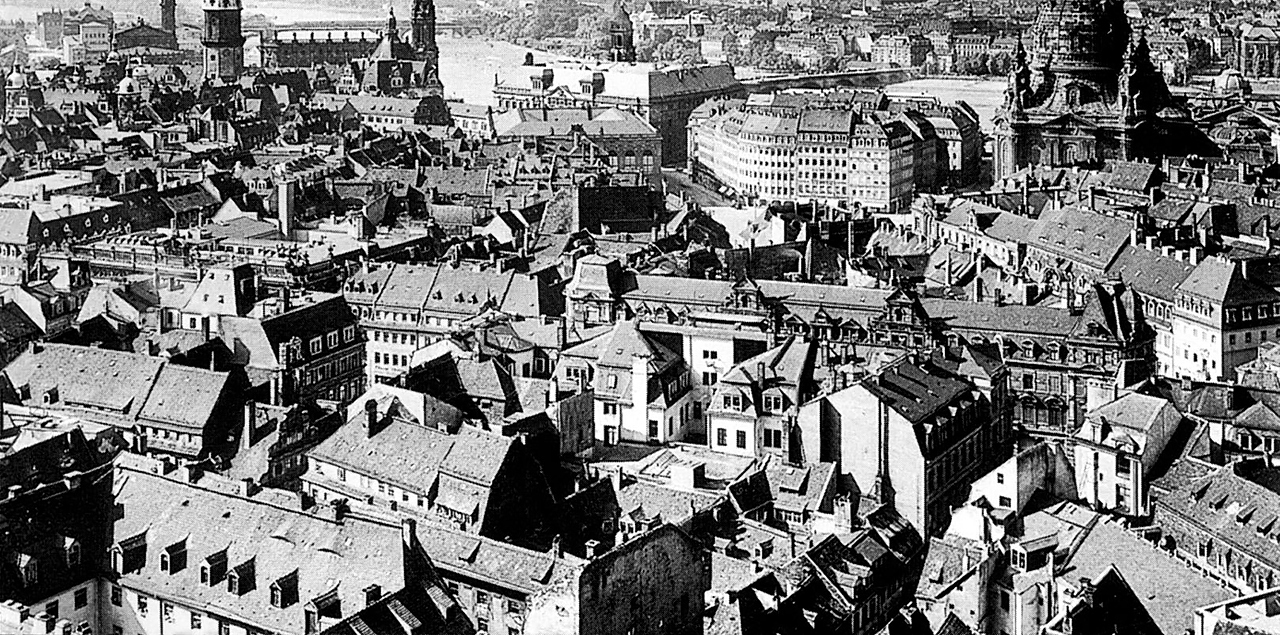
Aerial view of the city of Dresden in the thirties.
By 1942, allied bombing had destroyed the Korellewerke facilities. At the end of World War II the company burnt down when the city of Dresden was bombed severely by the Allies.
The company temporarily restarted makeshift production in temporary facilities in 1945, before it was seized the same year by the Soviet Military Administration in East Germany. In 1946 the company was expropriated. In 1947 the resulting Korelle-Werke restarted production in new facilities in Dresden. However, the production of the pre-war Reflex-Korelle failed due to the inadequate production conditions.
This was also the main reason for the company being taken over by the state-owned VEB WEFO in 1948. The VEB WEFO originated from the small enterprise “Lorenz, Max Pfau, Werkstätten für Feinmechanik, Optik und Spritzguss”, since 1938 in Dresden. The Lorenz facilities were destroyed in February 1945. After the war, the company was seized and expropriated, and later emerged as the VEB Wefo, having about 60 skilled workers in 1948. The merger of VEB WEFO with the Korelle-Kamera-Werke was meant to better support the production of a 6×6 SLR.
 The Meister-Korelle, a development of the Reflex-Korelle, was launched by VEB WEFO in 1950.
The Meister-Korelle, a development of the Reflex-Korelle, was launched by VEB WEFO in 1950.
The Meister-Korelle was a medium format 6×6 manual focus SLR camera with a proprietary screw mount made from 1950 to 1952. It was the spiritual predecessor of the Pentacon Six as Welta later became part of VEB Pentacon which rejected the notion to continue the production of the Maister-Korelle and instead developed the Praktisix cameras that later down the line were superceded by Pentacon Six system SLRs.
Technical shortcomings with the Meister-Korelle, e.g. with the film transport, however hindered production. As the Meister-Korelle was meant to be the production backbone of VEB WEFO, this meant there was no more reason for the company to exist as an independent entity.
Both the production of the Meister-Korelle and the VEB WEFO itself therefore ended by the 1951 takeover by VEB Welta-Kamerawerke, which produced the last Korelle-cameras until 1952 in its plant in Niedersiedlitz. No more than 2500 Korelle-cameras were produced between 1947-1952.
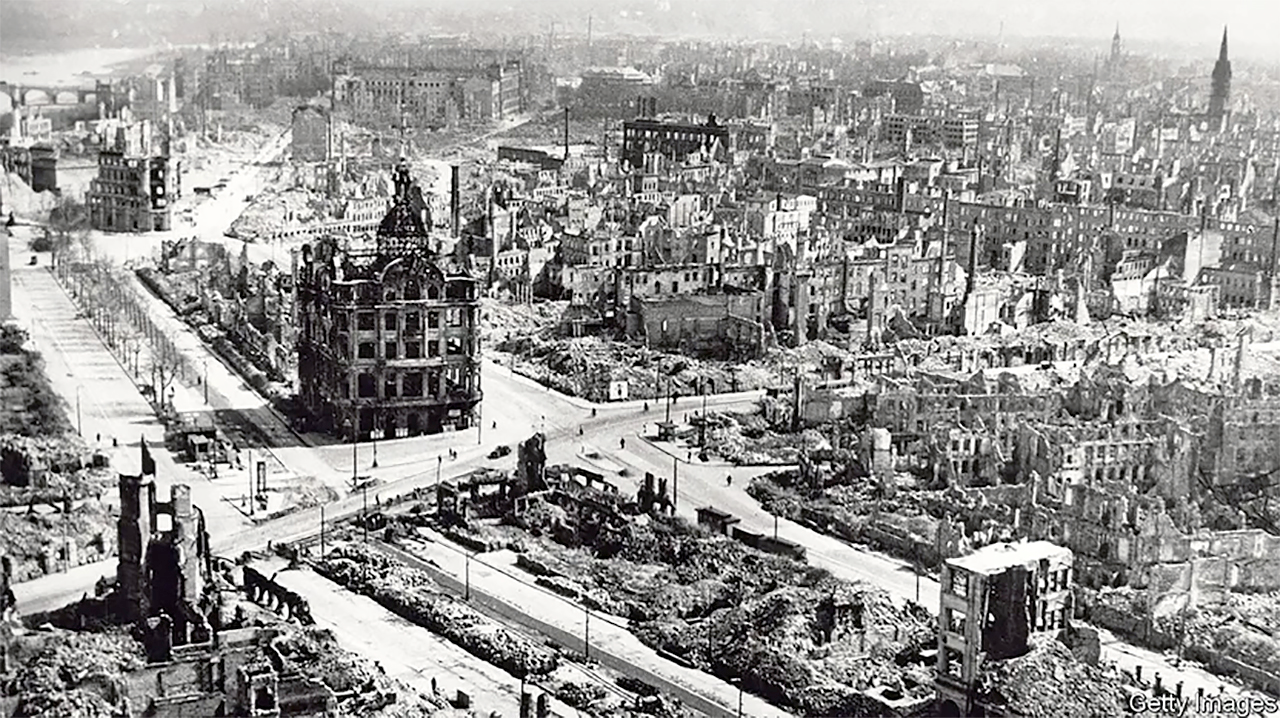
After the Bombing of Dresden, February 13th 1945.
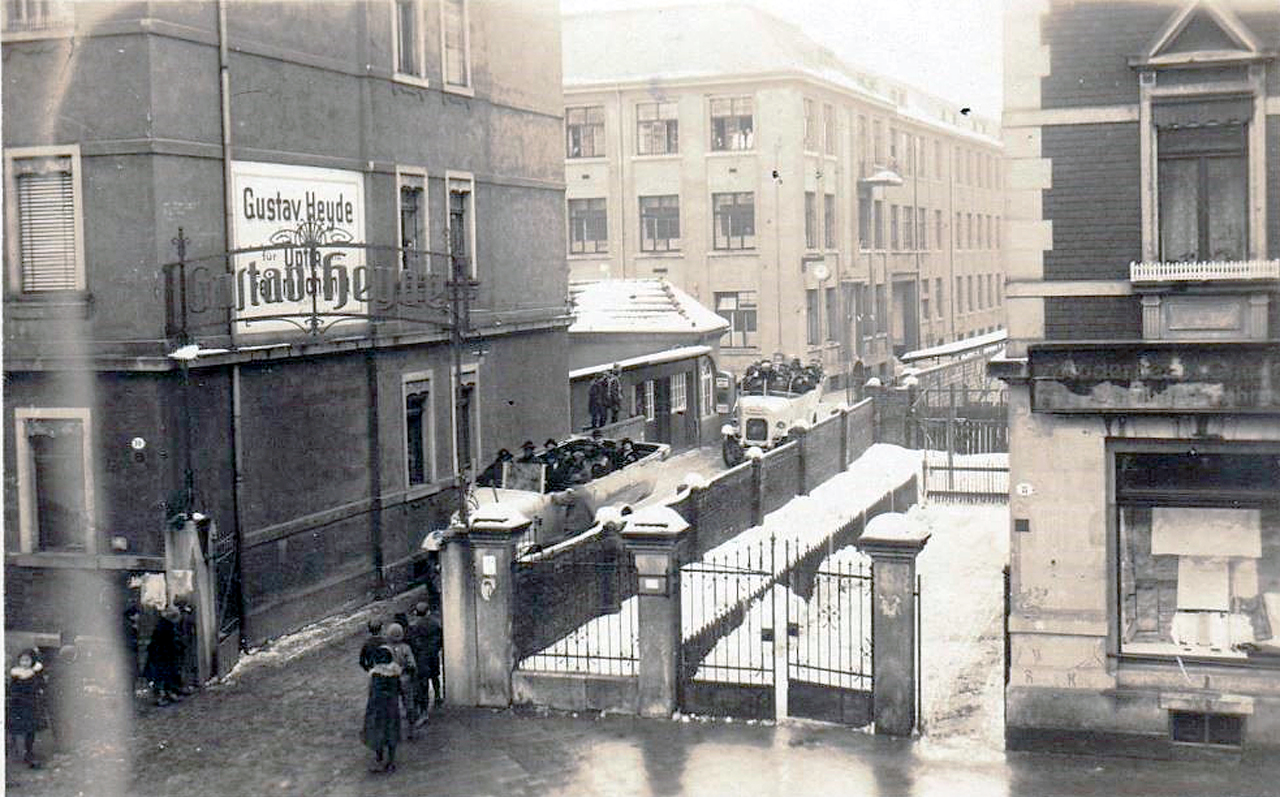
G. Heyde, Workshops for Precision Engineering and Optics (WEFO)
Dresden N23, Kleistrasse 10
After the war, Franz Kochmann stayed in his Dutch exile where he became camera constructor of the Dutch camera manufacturer Vena, creating, among other things, on the design of several camera series, some of which were successful, such as the Venaret. This box camera resembled the design of his famous pre-war Reflex-Korelle.
Samuel Naarden and Evert Verlegh founded the Optische en Fotografische Apparatenfabriek Vena N.V. in Amsterdam in 1940. The former had already made optical lenses for the Oude Delft company.
It is known that camera production was delayed until 1947 due to the fact that many Jewish employees had been deported to concentration camps and never returned. The appearance of the Kochmann designed cameras from Vena in 1947 may have been related to that delay though it is not yet known whether Kochmann was associated with the Dutch manufacturer during the years of WWII.
However, these models were comparatively simple and inexpensive, and the quality could not be compared to the cameras manufactured by Kochmann in Dresden.
The Venaret is technically designed as a slightly better 6×6 box camera with attached telescopic viewfinder, “leather covering” with laminated paper in black or turquoise. As a result, Franz Kochmann was unable to build on his former great technical and economic success.
Venaret production began in 1948. A total of around 20,000-30,000 cameras were made of these examples. Unfortunately, the Venaret did not reach the technical sophistication previously achieved by the Reflex-Korelle models of the 1930’s and the Vena Company filed for bankruptcy in 1951. The reason for this was better quality and cheaper prices abroad.
The similarities between the Korelle and the Venaret produced in Holland cannot be denied and make it clear that Franz Kochmann was able to defy the adverse blows of fate and continued to try to implement his visions.
This Reflex-Korelle camera has a sad story behind it, one of a talented and energetic man who had his world and his future taken from him. Franz Kochmann died on June 25, 1956 as a result of a tragic traffic accident in Utrecht. His wife, Clara Cleve Sprotte-Kochmann, survived him by more than 20 years and died at the age of 96 on April 15, 1971.
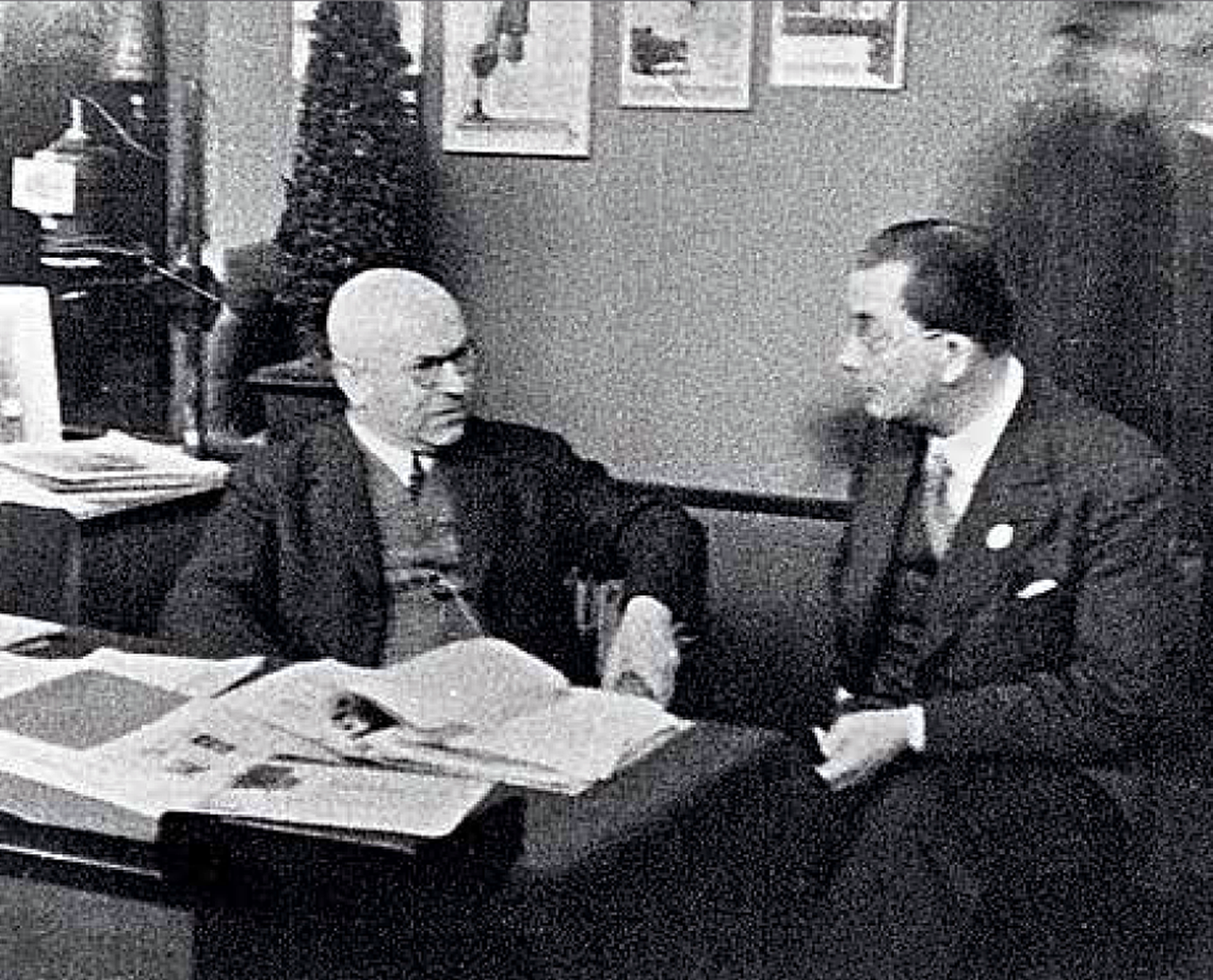
Franz. Kochmann at work in his office, 1930
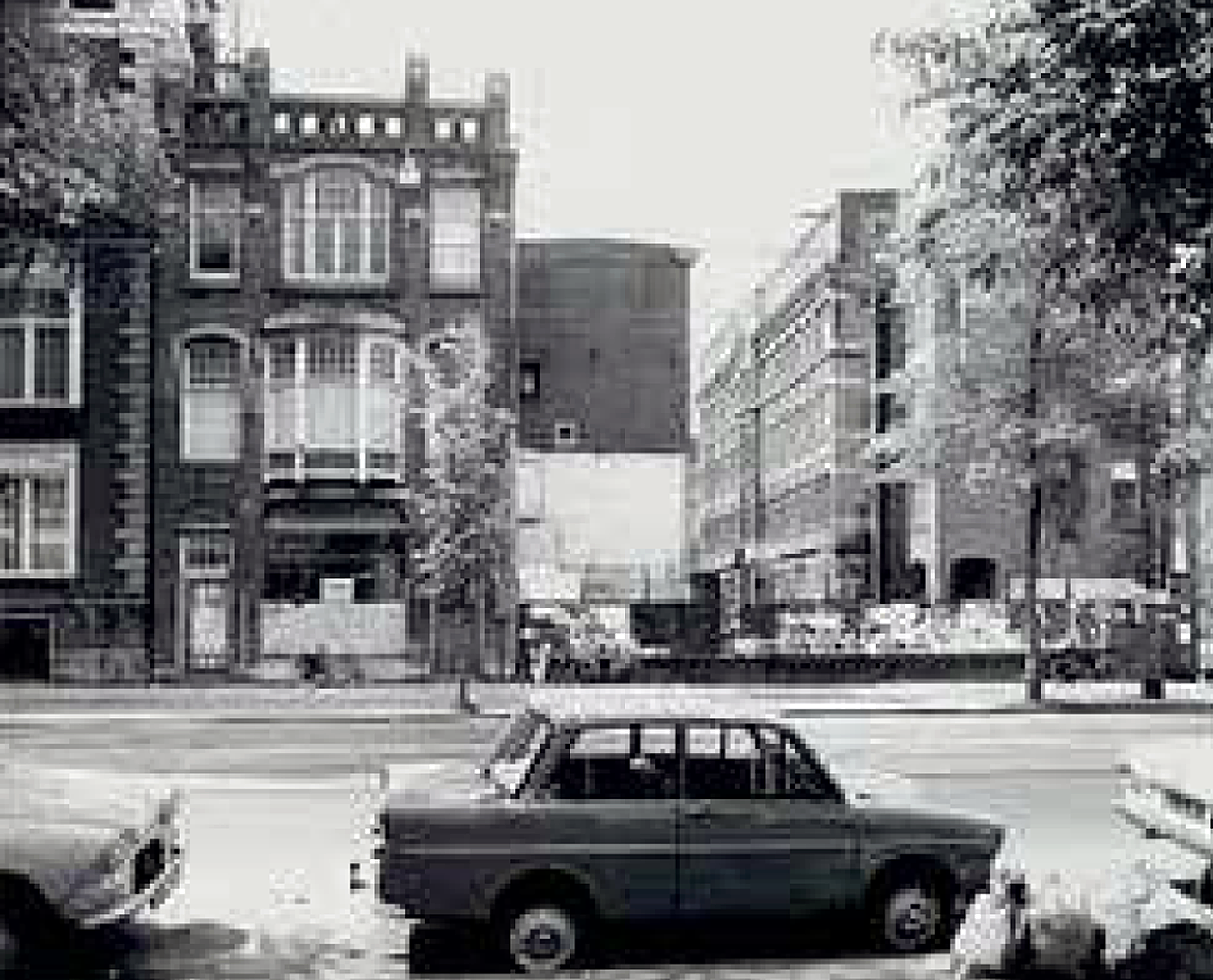
The Vena company in the city of Amsterdam
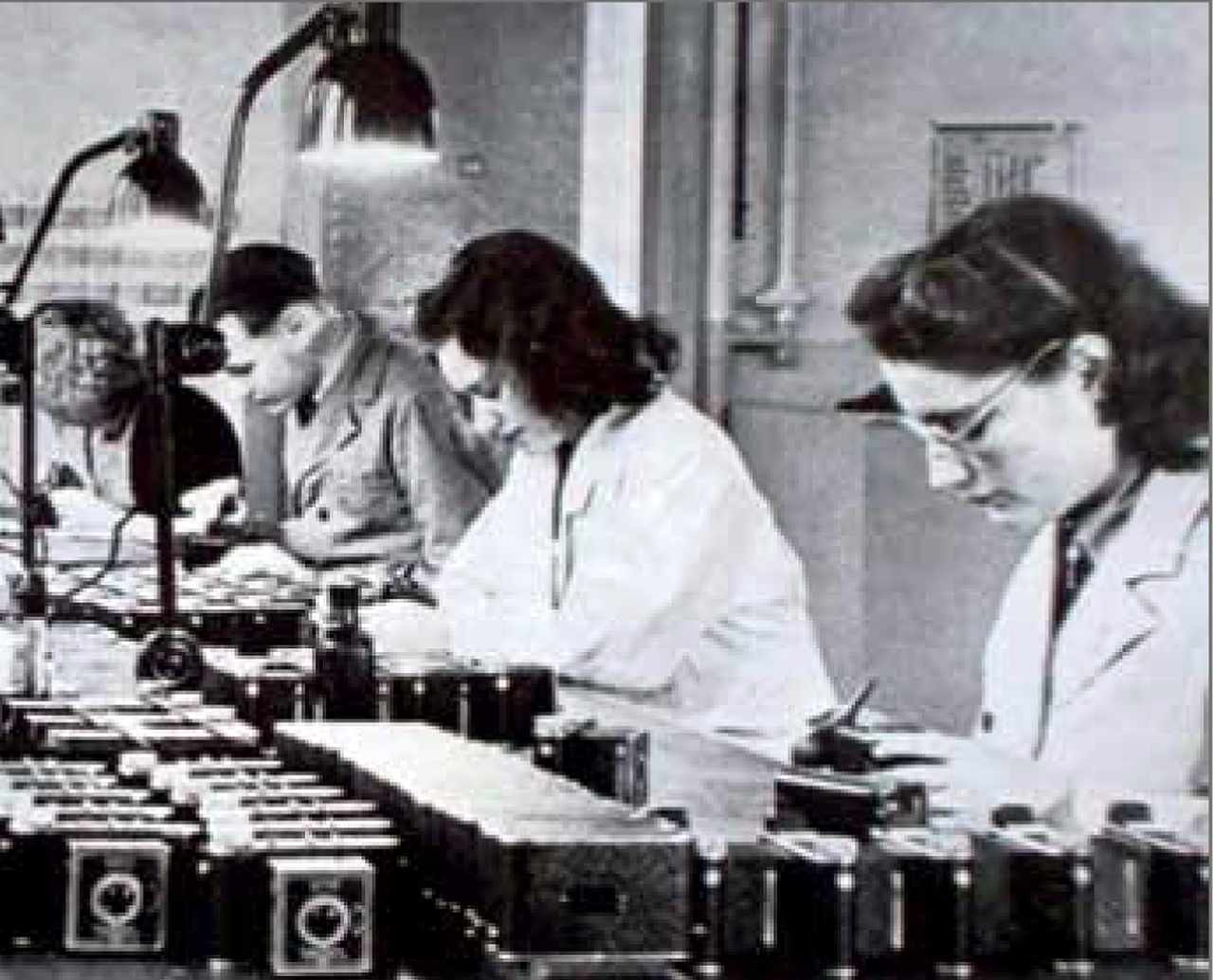
Assembly line of Venaret cameras in Amsterdam
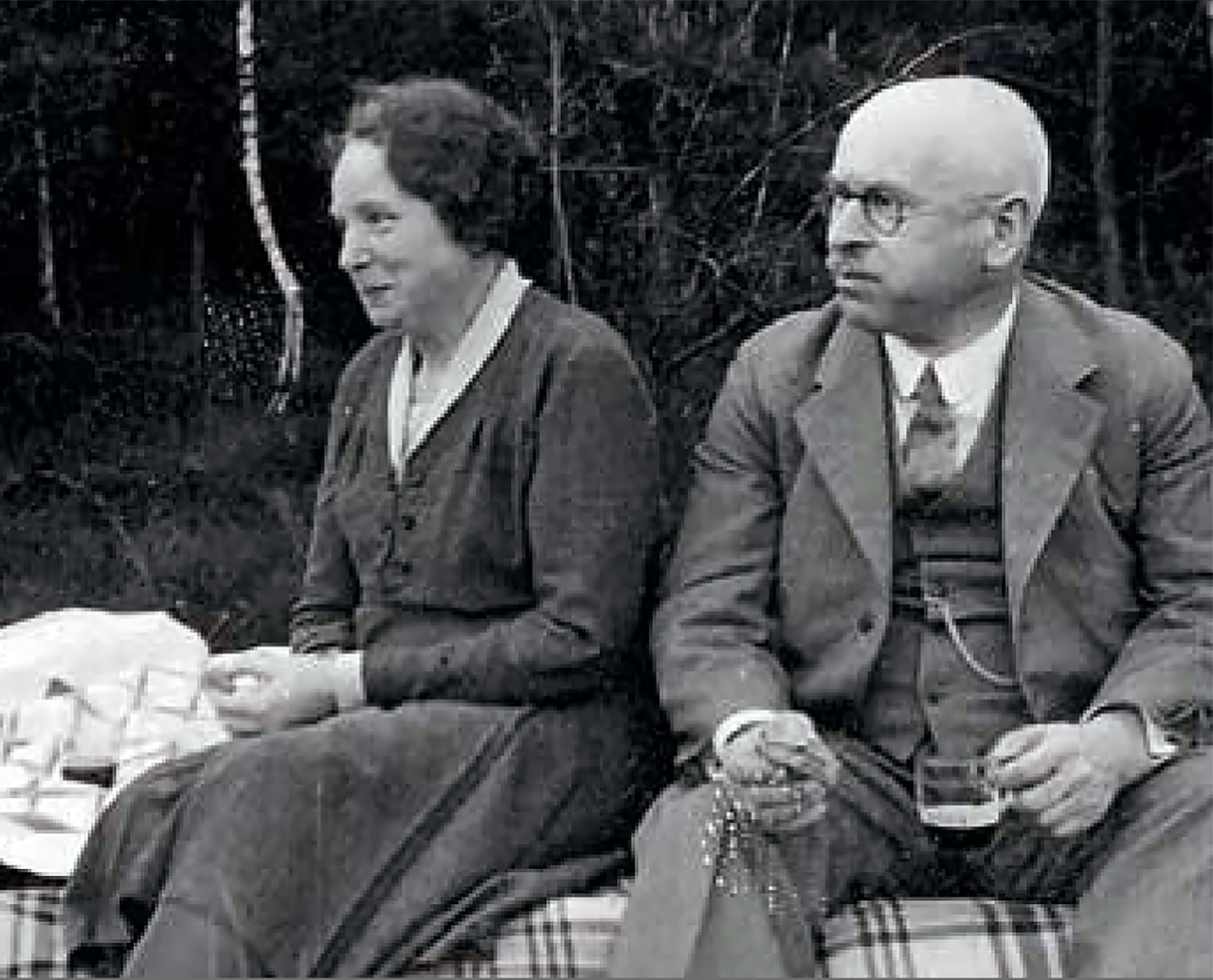
Franz and Clare Kochmann at a picnic, 1930
- 1924: Enolde Reflex (SLR)
- 1930: Enolde plate cameras
- 1930: Enolde rollfilm cameras
- 1931: Korette and Korelle (3×4)
- 1931: Korelle (4×6.5)
- 1932: Korelle K (18×24mm)
- 1932: Korelle P (4.5×6)
- 1933: Korelle (4.5×6) and Korelle (6×6)
- 1934: Korelle (6×9)
- 1935: Reflex-Korelle (6×6 SLR; several models, by Kochmann and later Korelle-Werk)
- 1939: Sport-Korelle 66 (by Korelle-Werk)
- 1948: Venaret (6×6 SLR by Vena, Amsterdam)
- 1950: Meister-Korelle (6×6 SLR by WEFO, after Korelle-Werk was nationalised, and finally by Welta)
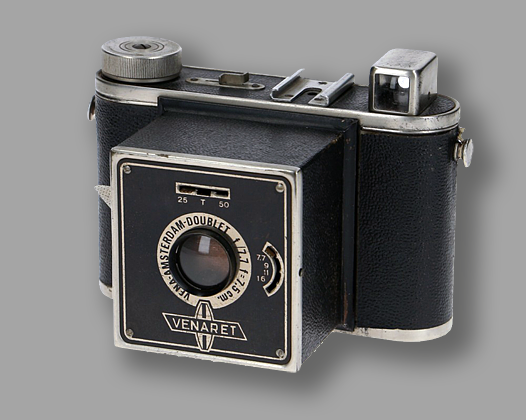
The Venaret is a simple box style camera that takes 6×6 pictures on 120 film. It was made by Vena in Amsterdam, Netherlands, around 1949.
FOUNDERS: Sugiura Rokuemon and his son Sugiura Rokusaburō
(Konishiroku)
COMPANY NAMES:
1873: Rokusaburo Sugiura begins selling photographic and lithographic materials; 1879: Konishi Honten; 1902: Rokuoh-sha; 1921: G.K. Konishiroku Honten; 1936: K.K. Konishiroku; 1943: Konishiroku Shashin Kōgyō K.K.; 1946: Konishiroku Photo Industry Co., Ltd.; 1972: K.K. Yamanashi Konica; 1983: K.K. Konica Denshi, Konica Electronics; 1987: Konica Corporation; 2003: Konica Minolta Electronics Co., Ltd.; 2006: The merged company closed down its photo imaging division, which produced colour film, colour paper, photo chemicals and digital minilab machines.
COMPANY ADDRESSES:
1879: Nihonbashi district of Tokyo; 1902: Rokuosha Factory in Shinjuku, Tokyo.
Konica was a major producer of 35 mm film and related products, including film development processors and printing technology. While never equal to giants like Kodak or Fuji, the recognized quality of Konica film ensured general presence on the market. Originally Konica film and paper was sold under the brand name of “Sakura” meaning Cherry Blossom in English. The company merged with Japanese peer Minolta in 2003, with the new company named Konica Minolta.
 The company originated as a drugstore called Konishi-ya Rokubei Ten operated by Sugiura Rokuemon. His son Sugiura Rokusaburō entered the company (the biggest pharmacy trader in Tokyo at that time) and expanded its activities by selling photographic products beginning in 1873 (pre-dating Kodak in the photography business).
The company originated as a drugstore called Konishi-ya Rokubei Ten operated by Sugiura Rokuemon. His son Sugiura Rokusaburō entered the company (the biggest pharmacy trader in Tokyo at that time) and expanded its activities by selling photographic products beginning in 1873 (pre-dating Kodak in the photography business).
Sugiura Rokusaburō took the name of Sugiura Rokuemon VI in 1879. He gave the original shop to his younger brother and launched a new shop, Honten Konishi Rokuemon abridged as Konishi Honten in the Nihonbashi district of Tokyo.
In 1882, Konishi launched a project to produce photography related materials in Japan: those products were imported at that time. Artisan subcontractors, such as Hasegawa Toshinosuke and Tōjō Kamejirō, produced early cameras. The company founded a manufacturing branch called Rokuoh-sha in 1902, and released the “Cherry Portable Camera” in 1903, the first Japanese camera to have a brand name.
The factory of Hasegawa Toshinosuke became the wood workshop of Rokuoh-sha in 1906. New products were released respectively, and Konishi Main Shop became the leading camera company in Japan. Most of the camera production was still assumed by other subcontractors, many of which were merged into Rokuoh-sha in 1919.
The company became G.K. Konishiroku Honten in 1921. The name Konishiroku was taken from the abbreviation of their names, Konishi Rokuemon. Konishiroku founded the Konishi College of Photography in Tokyo in 1923. It introduced the Pearlette in 1925, which would be the first mass-produced Japanese camera, under the supervision of Yamada Kōgorō.
 On November 11, 1928, the company that would be known as Minolta in later years opened its first factory in present-day Nishinomiya City, Hyogo Prefecture. The founder, Kazuo Tashima, who worked for an ad agency in Tokyo after graduating from university, returned to his hometown after Tokyo was hit by the Great Kanto Earthquake.
On November 11, 1928, the company that would be known as Minolta in later years opened its first factory in present-day Nishinomiya City, Hyogo Prefecture. The founder, Kazuo Tashima, who worked for an ad agency in Tokyo after graduating from university, returned to his hometown after Tokyo was hit by the Great Kanto Earthquake.
During a visit to Europe, he discovered the great possibilities of optical equipment, which made him decide to start a company upon his return to Japan. In those days, there was no subcontracting system, and each small component was produced in-house under the guidance of engineers invited from Germany.
Kazuo Tashima establishes Nichi-Doku Shashinki Shoten (Japan-Germany Camera Company, later known as Minolta Co., Ltd.) to produce cameras in Japan, and launched its first camera product, Nifcalette, the following year.
In 1929, it launched the Sakura rollfilm, the second rollfilm brand in Japan. In 1931, it released the first Japanese camera lens commercially available, called Hexar; this name was again formed after the number “six”.
The company changed status again in 1936 and became K.K. Konishiroku. The cameras and lenses were still marked as made by the manufacturing branch Rokuoh-sha. In April 1943, the retail and wholesale activities were stopped and the company was reorganized as Konishiroku Shashin Kōgyō K.K., based in Yodobashi, Tokyo; the name Rokuoh-sha was abandoned around that time. The company name was translated after the war as Konishiroku Photo Industry Co., Ltd.
In 1940 the first Japanese-made color film, Sakura Natural Colour Film, is announced, and launched in 1941. This colour film was the result of eleven years of persistent efforts for technical improvement that had been underway since the introduction of Sakura Film, the first internally developed film of Konica in 1929.
The name Konica was originally that of a 35 mm rangefinder model presented in 1947. Similarly to “Leica”, “Yashica” and many others, the name “Konica” was constructed by abbreviating the name of the manufacturer and attaching “ca” (for “camera”) as a suffix. Konica was also the name after which they would name their own company in 1987.
In August 1960, Konishiroku bought all the shares of Taisei Kōki, a minor camera maker in Itabashi, Tokyo. This moved to Tsuru, in the prefecture of Yamanashi, in 1968, and became K.K. Yamanashi Konica in 1972, then K.K. Konica Denshi, Konica Electronics in 1983, and is today Konica Minolta Electronics Co., Ltd.
Konica’s single lens reflex cameras pioneered auto-exposure in cameras with focal-plane shutters and fully interchangeable lenses. The Konica Autoreflex of 1965 used an external light meter cell to set the lens diaphragm automatically after the user selected a shutter speed. With the Autoreflex T of 1968, Konica improved this design into a through-the-lens meter, using the same automation system. (The user could also set the exposure manually on these cameras). Other camera makers eventually adopted auto-exposure as well, but Konica was the first.
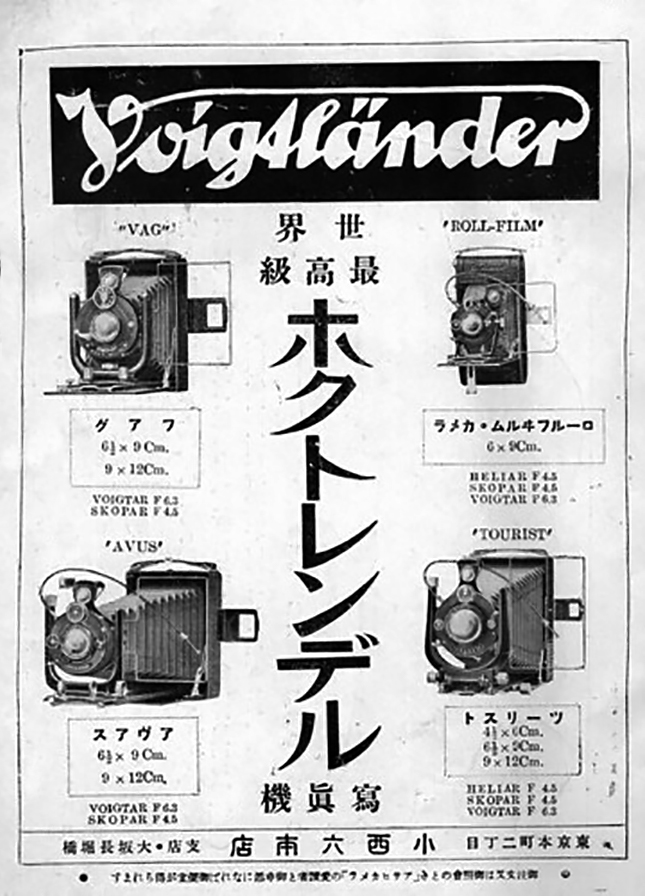
Advertisement in Asahi Camera February 1930, for Voigtländer cameras imported by Konishiroku Honten.
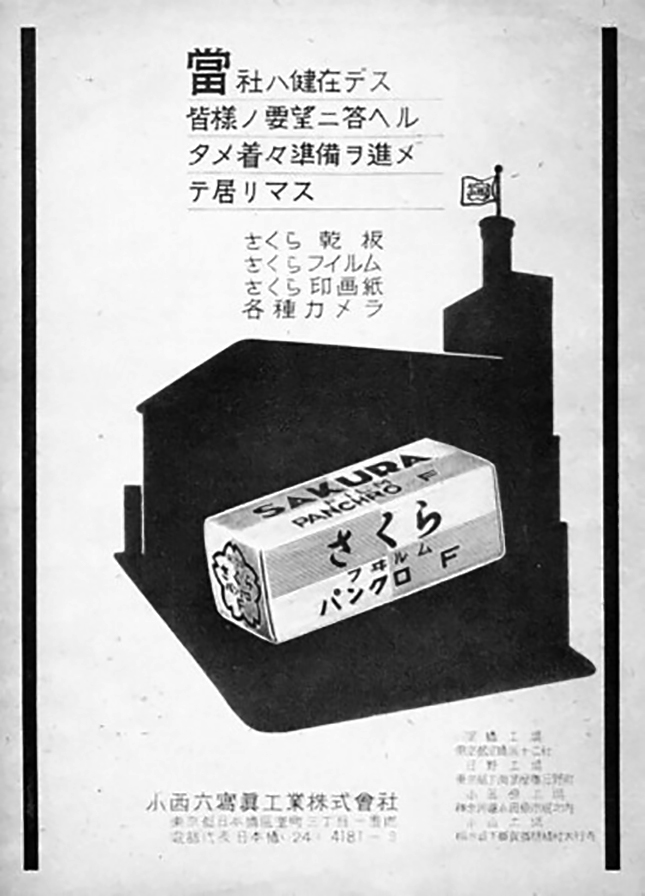
Advertisement for Sakura Panchro film in Ars Camera January 1946. This is the earliest postwar advertisement by Konishiroku
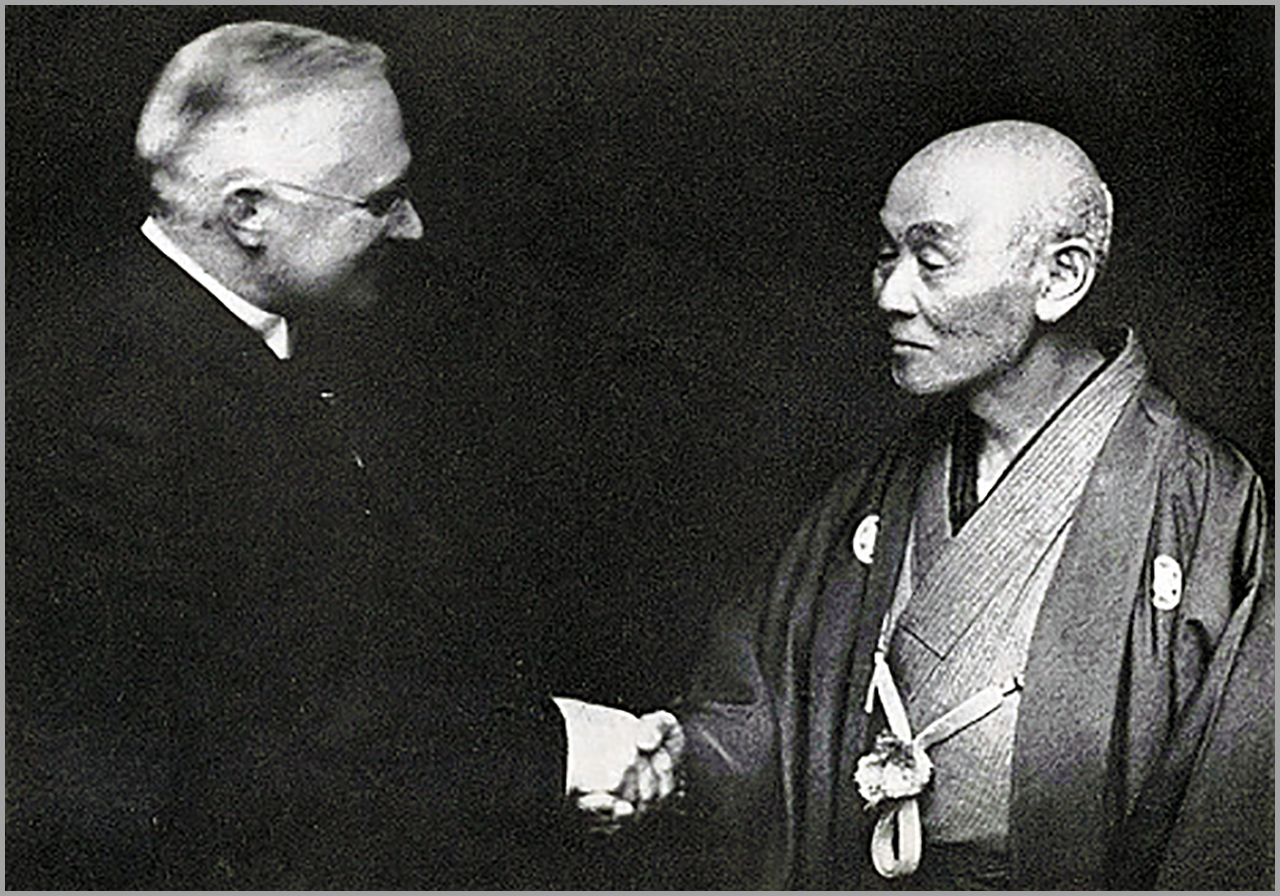
George Eastman shaking hands with Rokuemon Sugiura.
Consistent efforts to maximize ease of operation led to the development and launch of the C35EF, the world’s first 35mm camera with built-in flash and auto exposure functions, in 1975. This product was designed to meet the basic needs of general users for a camera that would allow them to take photos at any time without the complicated process of adjusting exposure settings. This product was a phenomenal success and heralded the popularization of cameras.
The C35EF was followed in 1977by the Konica C35AF, the world’s first 35mm compact autofocus camera. It was developed through dedicated R&D efforts to prevent defocusing, which, according to a market survey, was responsible for thirty-six percent of failed photos. With its autofocus function, this camera allowed users to take clear photos easily and freely just by pressing the shutter button.
The Konishiroku Photo Industry Co., Ltd. changed its name to Konica Corporation in 1987, and all the company’s products are offered under the “Konica” brand. In 1994 Minolta Camera Co., Ltd. is renamed Minolta Co., Ltd.
In 1990’s Konica signed its first major contract with Los Angeles County providing leasing of copiers to the Los Angeles Superior Court. This resulted in a major shift in the industry that had sold only copiers before. The County initial order of 250 copiers required Konica to redirect all of it inventory throughout North America to the County.
On 5 August 2003, Konica merged with Minolta to form Konica Minolta. In 2006, Konica Minolta exited the photography business. In March 2006, the merged company closed down its photo imaging division, which produced colour film, colour paper, photo chemicals and digital minilab machines. Its digital SLR camera section was transferred to Sony, which currently known as the Sony Alpha line. Dai Nippon purchased Konica’s Odawara factory site and continues to produce paper under its own brand, while Seapac acquired the Konica chemical factory.
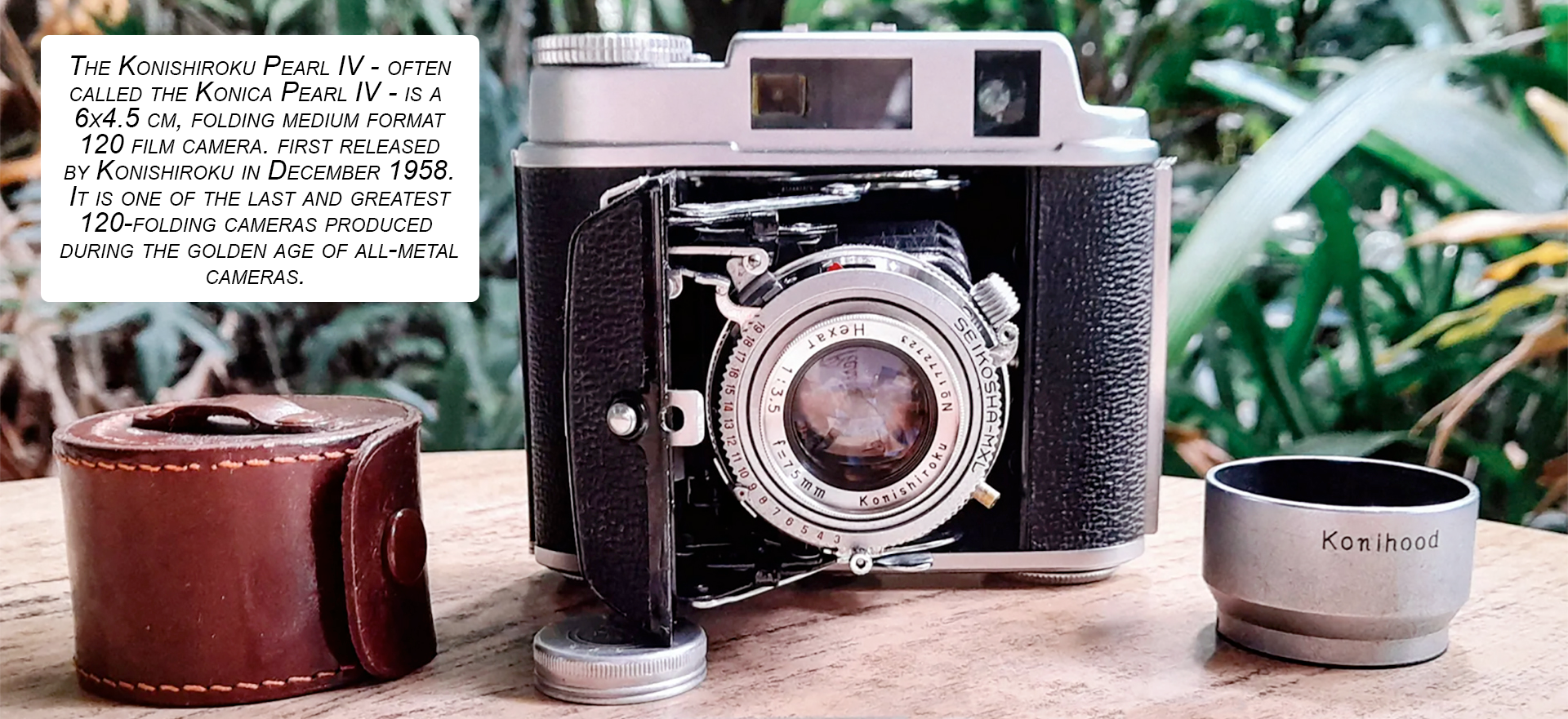
The company provided a.o. following cameras:
- Rubikon (1936?) Prototype of Konica I, development stopped by WWII, a few made after war
- Rubicon (1936?) An X-ray camera that uses 35mm X-ray film, same chassis as Rubikon/Konica I
- Konica “I” (1946) Konishiroku’s first 35mm camera to see full production. Several variants (lenses, shutters, viewfinder, flash mount).
- Konica II (1950)
- Konica IIB (1955) (Variants with f3.5 and f2.8 lenses)
- Konica IIB-m (1956)
- Konica IIA (1956) First model to use the superb 48mm f2 Hexanon lens.
- Konica III (1956) Variants with Konirapid-S & Seikosha MXL shutters, most with 48/2 lens, rarer version w/48mm f2.4 Hexanon
- Konica IIIA (1958) Variants with 48/2 & 50/1.8 Hexanons
- Konica IIIM (1959) Variants with Copal MXV & Seikosha SLV shutters, all with 50/1.8 Hexanon. Built-in meter, 1st Konica w/hot shoe (non-standard)
- Konilette 35 (1959) Inexpensive 35mm with scale focus, Konitor 45/3.5 lens.
- Konica S (1959) with exposure meter. Lens variants: 45/2.8 Hexar, Hexanon 48/2, 48/1.8
- Konica L (1960) Hexar 45/2.8 lens, Seikosha L shutter, interesting fold down film door.
- Konica S II (1961) only offered with Hexanon 48/2
- Konica S III (1963) new chassis, similar to Auto S, also uses 47/1.9 Hexanon same as Auto S
- Konica EE-Matic (1963) AE only, selenium metering cell (no battery). Also sold as Wards xp500/500a.
- Konica Auto S (1963) First CdS-metered, auto exposure camera. Also sold as Wards am450/am550, Revue Auto S.
- Konica EYE (1964) Half frame camera. Also sold as Wards EYE.
- Konica Auto S2 (1965) Also sold as Wards am551.
- Konica EE-Matic S (1965) Downgrade of orig. EE-Matic, no rangefinder. Also sold as Wards xp400.
- Konica EE-Matic 260 (196?) A version of EE-Matic using 126 film. Also sold as Wards cp301 & Wards 260.
- Konica EE-Matic Deluxe (1965) Primary upgrade, wider ASA range for meter, improved lens. Wards xp501.
- Konica EE-Matic Deluxe “New” (1965) Improved film take-up spindle, easier loading. Wards xp501a.
- Konica Auto SE (1966) Wind-up “motorized” film advance. Great lens! Wards ep504, Revue Auto SE. First Konica with a standard hot shoe.
- Konica Auto S1.6 (1967) Faster f1.6 lens. Hot shoe.
- Konica EE-Matic Deluxe 2 (1967) Sold also as Wards rf450.
- Konica Auto S 261 (1967) A 126 film version of Auto S line, CdS metered. Wards cp302, Wards 261.
- Konica C35 (chrome version) (1967) best seller compact camera. “Journey” nickname, for small size, portability.
- Konica Electron (1967)
- Konica C35 (black version) (1967)
- Konica C35 Flashmatic (Japan) (1968) “C35 Automatic” (export). Chrome & black versions.
- Konica C35 E&L (Japan) (1969) C35 economical model. No rangefinder. “C35 V” (export)
- Konica Auto S3 (export) (1973) Great little camera based upon the C35 line. Fast lens. AE only. “C35 FD” in Japan. Auto S3 produced in black only. C35 FD produced in chrome, too.
- Konica C35 EF (1976) first model with built-in flash. “Pikkari”
- Konica C35 AF (1977) First autofocus camera, “Jasupin”, 1,000,000 sold.
- Konica C35 EF “New” Self-timer added.
- Konica C35 EFP (1977)
- Konica C35 EF3 (1981) “Color Pikkari”
- Konica C35 AF2 (198?)
- Konica C35 EFJ (Japan) (1982) “Konica POP” (export markets)
- Konica C35 MF (1982) Auto focus. “Jasupin Super”. C35 MD-D, version with date back.
- Konica C35 AF3 (1983) Auto focus. Last “C35”
- Konica MG (1983) Also MG-D variant with date back.
- Konica EFP2 (1984)
- Konica MR70 (1985)
- Konica AA-35/Recorder (1985) Half frame, various colors. Recorder: Japan. AA-35: Export markets.
- Konica EFP3
- Konica MR70 LX
- Konica Off Road/Genba Kantoku/MS-40
- Konica Z-Up 70 & Z-Up 70 VP
- Konica Z-Up 80 & Z-Up 80 RC
- Konica Tomato
- Konica Kanpai Voice activated camera.
- Konica Big Mini
- Konica Z-Up 28W
- Konica MT-100
- Konica Jump Auto
- Konica Aiborg
- Konica Big Mini Neo
- Konica Off Road 28WB Wide & 28HG
- Konica Big Mini Nou 135
- Konica Big Mini BM S-100
- Konica Big Mini F
- Konica Z-Up 60
- Konica Z-Up 90
- Konica Z-Up 110
- Konica Z-Up 120
- Konica Z-Up 130
- Konica Z-Up 135
- Konica Z-Up 140
- Konica Z-Up 150
- Konica Hexar (1991) (autofocus)
- Konica Hexar RF (2001)
The first series of Konica single-lens reflex cameras used the Konica F lens mount, named after the first camera to use it. This was a bayonet mount, and is not compatible with later Konica lens mounts.
The flange focal distance of the F-mount was 40.5 mm, one of the smallest ever used for a 35 mm SLR. The diameter was 40 mm. It is not identical to Nikon F-mount, which has a much longer flange focal distance of 46.5 mm.
- Konica F (1960-?)
- Konica FS (1962–1964)
- Konica FSW (1962-?
- Konica FP (1963-?)
- Konica FM (1965-?)
- Konica Domirex (1963-?, prototype)
Konica FS-1, world’s first SLR with built-in motor drive.
Konica’s second series of SLR cameras began with 1965’s Auto-Reflex. This line came to an end in 1987 when Konica abandoned the SLR market.
Konica’s AR lens mount kept the same flange-film distance that the earlier Konica F lens mount had (40.5 mm), but it has a larger diameter of 47 mm.
- Konica Auto-Reflex (1965–1968) Known as the Autorex in Japan.
- Konica Auto-Reflex P (1966–1968) Known as the Autorex P in Japan.
- Konica Autoreflex T (1968–1970)
- Konica Autoreflex A (1968–1971)
- Konica Autoreflex T2 (1970–1973)
- Konica Autoreflex A2 (1971–1972)
- Konica Autoreflex A1000 (1972–1973)
- Konica Autoreflex T3 (1973–1975)
- Konica Autoreflex A3 (1973-?)
- Konica Autoreflex T3N (1975–1978)
- Konica Autoreflex TC (1976–1982)
- Konica Autoreflex T4 (1978–1979)
- Konica FS-1 (1979–1983)
- Konica FC-1 (1980–1983)
- Konica FP-1 (1981–1983)
- Konica FT-1 (1983–1987)
- Konica TC-X (1985–1987) Built by Cosina.
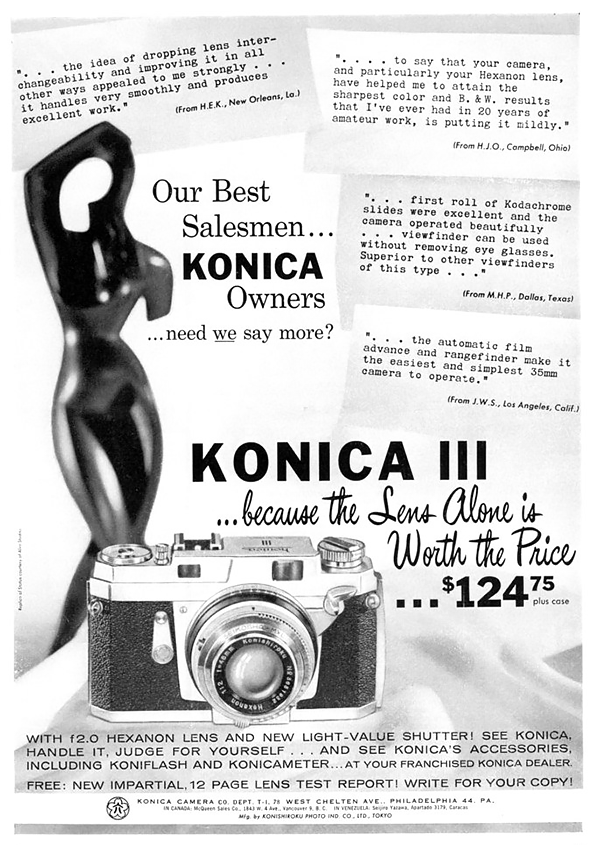
Advertisement 1958 for Konica III camera.
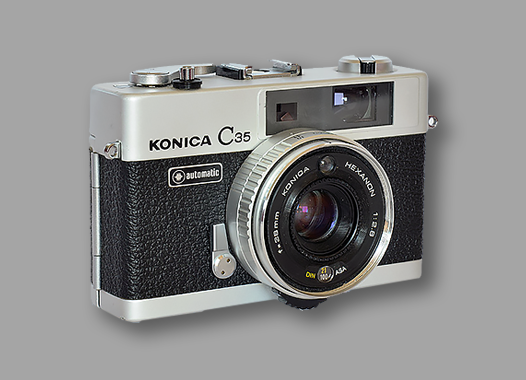
The Konica C35 Automatic was a later version of the C35 rangefinder camera and had “Flashmatic control” and is identified by the “Automatic” badge. When the battery goes dead, it will still function with the shutter speed defaulting to 1/30th of a second and the aperture wide open at f/2.8.
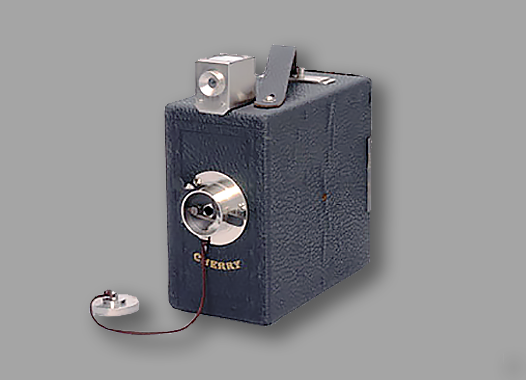
The Cherry Hand Camera is a magazine camera, released by Konishi Honten in 1903. It was assembled in the Kubo factory, a subcontractor for Konishi. The Cherry is historically significant as the first Japanese camera to have an individual brand name.
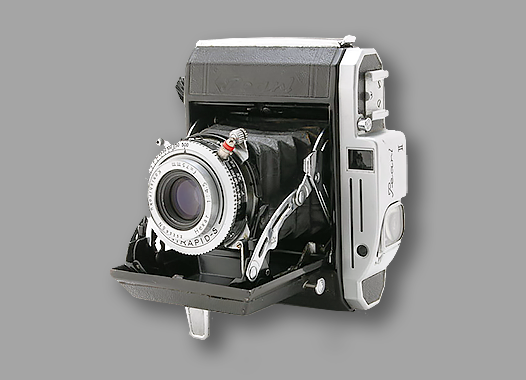
Konica Pearl II Introduced: 1952. Folding Rangefinder camera for 4.5x6cm or half-frames on 120 film. Coupled rangefinder with Pearl II on the top housing. Fitted with a Konishiroku Hexar f3.5/75mm lens with a Konirapid S shutter.
FOUNDER: Hattori Kanesaburo Shoten
COMPANY NAMES:
1894: Fiber wholesaler Hattori Kensaburo Shoten is established in Nagoya; 1912: Reorganized and established as a corporation, Hattori Shoten Co., Ltd.; 1939: Trading division separated and established as Kaneka Hattori Shoten Company, Ltd.; 1943: Name changed to Kofu Sangyo Company, Ltd.; 1960: Name changed to Kowa Company, Ltd.
COMPANY ADDRESSES:
1894: Nagoya; 1912: Suzura-cho, Naka-ku, Nagoya; 1954: 3-4-14 Nihonbashi-Honcho, Chuo-ku, Tokyo 103-8433.
Kowa is a Japanese company, which manufactured cameras from 1954 to 1978. It continued to make binoculars, telescopes and medical optics(among much else), and in 2005 marketed a “spotting scope” with integrated digital camera, thereby again becoming a camera manufacturer of a sort.
Although the origins of KOWA go back to the 19th century, 1894 to be precise, we will not start the detailed description of the company until after the Second World War and limit ourselves to a brief description for the first 50 years. Why? Because the company was originally a textile factory, which only in 1946 attempted to diversify its activities, and created the dependent Kōwa Kōki Seisakusho, meaning Kowa Optical Works.
But, as well on the internet as on Kowa’s own website there is hardly any information to be found about their camera production. Thus, the description of the company and its cameras here is very limited.
The company was founded in Nagoya in 1894 as a textile shop, and entered the spinning industry in 1919. In 1939, the trading and spinning activities were separated, and the trading company was incorporated as Kōwa K.K..
After 1945, the company attempted to diversify its activities, and created the dependent Kōwa Kōki Seisakusho, meaning Kowa Optical Works in 1946. It produced eyeglasses for a short period, then switched to higher value products such as opera glasses, binoculars, rifle scopes or spotting scopes, some of which were bought by the US forces. It also made projection lenses, both regular and anamorphic (for the Cinemascope process), under the Prominar brand name, whose registration was applied for in 1947 and granted in 1948.
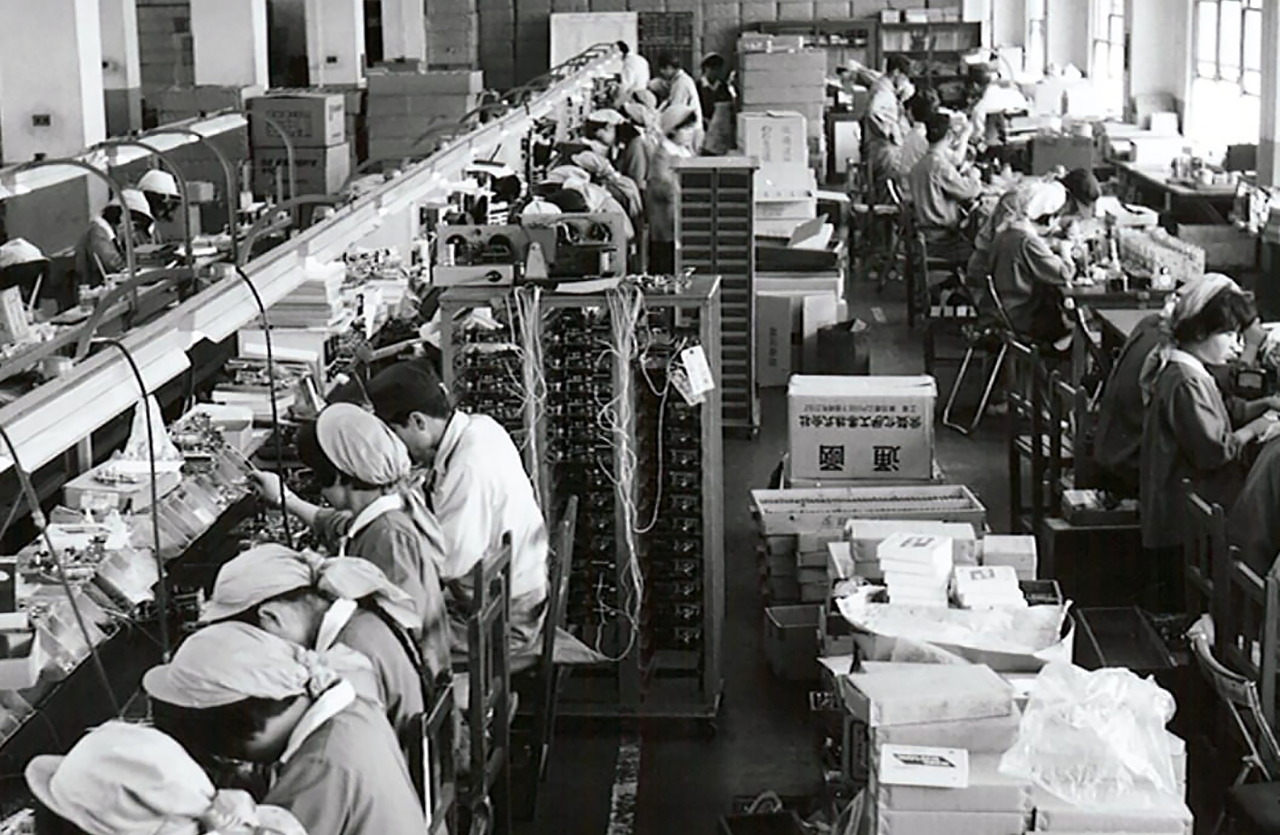
The assembly department of the Kowa factory in 1963.
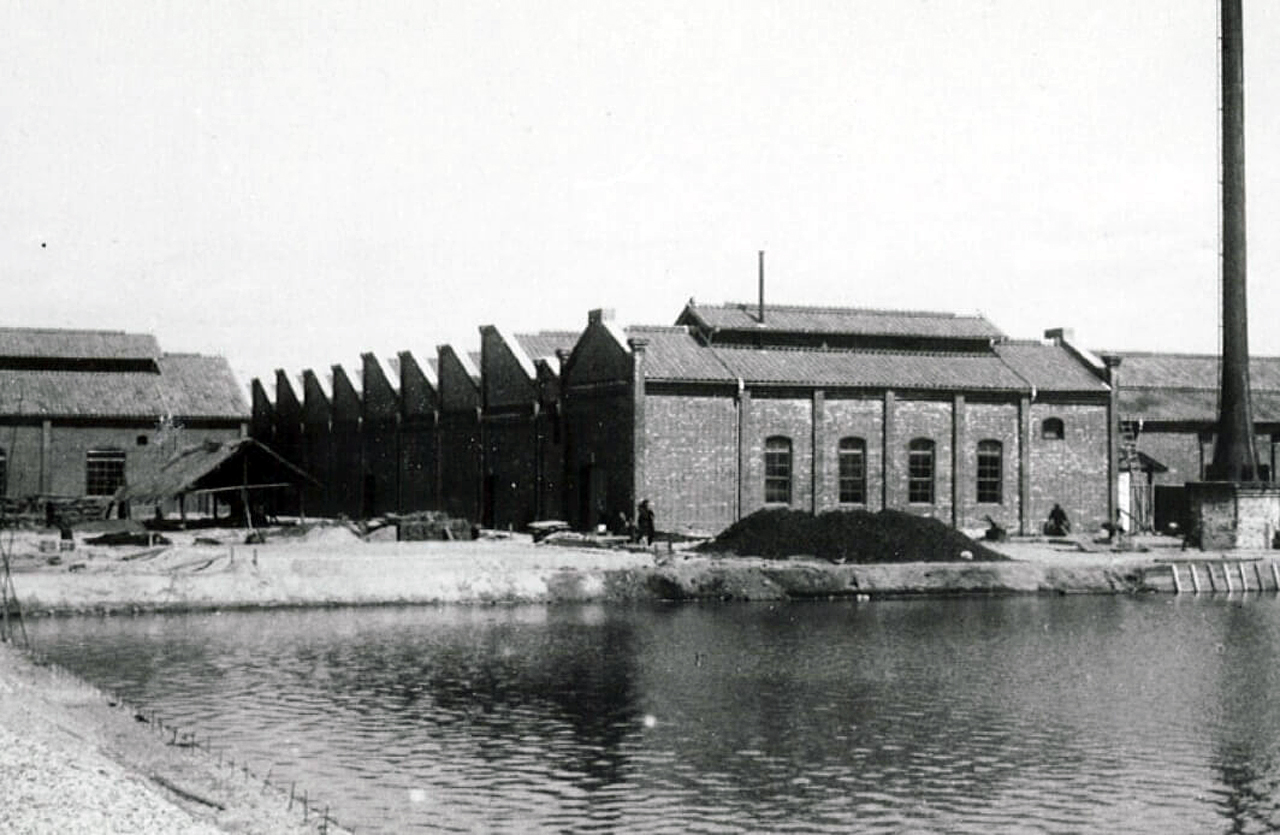
Hattori & Co., Ltd. launched in 1914 cotton cloth manufacturing; e.g. a new Sakurada factory constructed in Naka-ku, Nagoya.
The company entered camera production in 1954 with the Kalloflex 6×6 TLR, then made a series of 35mm cameras with a leaf shutter, some with a fixed wide-angle or tele lens and some with an interchangeable lens. Many of these were rebadged by Graflex as the Century 35 series.
In 1960, Kowa inaugurated a series of amateur 35mm SLR cameras, all with a leaf shutter. The last of the series was the Kowa UW190 (1972), equipped with a fixed ultra-wide-angle 19mm lens. In 1968, the company introduced a more ambitious project: the Kowa Six 6x6cm SLR, which would meet some success as the poor man’s Hasselblad. It was upgraded in 1974 as the Kowa Super 66, which was Kowa’s last camera in the century.
In 2005, Kowa, which had continued to sell equipment for birdwatchers and others, marketed a “spotting scope” with integrated digital camera, thereby again becoming a name on a camera. The product was the TD-1. In early 2009 the company described this as discontinued but still in stock; Kowa was marketing a variety of adapters to mate its spotting scopes with cameras from other manufacturers.
Kowa was known for producing lower-cost models that competed with other manufacturer’s more high-end cameras. While popular, Kowa cameras were not known for their reliability, and repairs were reportedly difficult and expensive. The company is still around in the form of the Kowa Optical Products Company. Current items in their catalog include binoculars and spotting scopes, CCTV lenses, lenses/equipment for the medical field, and their line of Prominar lenses – a small group of focal lengths for micro-four-thirds cameras.
Kowa Company, Ltd., as the core of the Group, is actively engaging in various business fields including the trading of textiles, machinery, and construction materials, in addition to the manufacturing and sales of medicines, medical devices, vision units, energy saving and energy creating products.
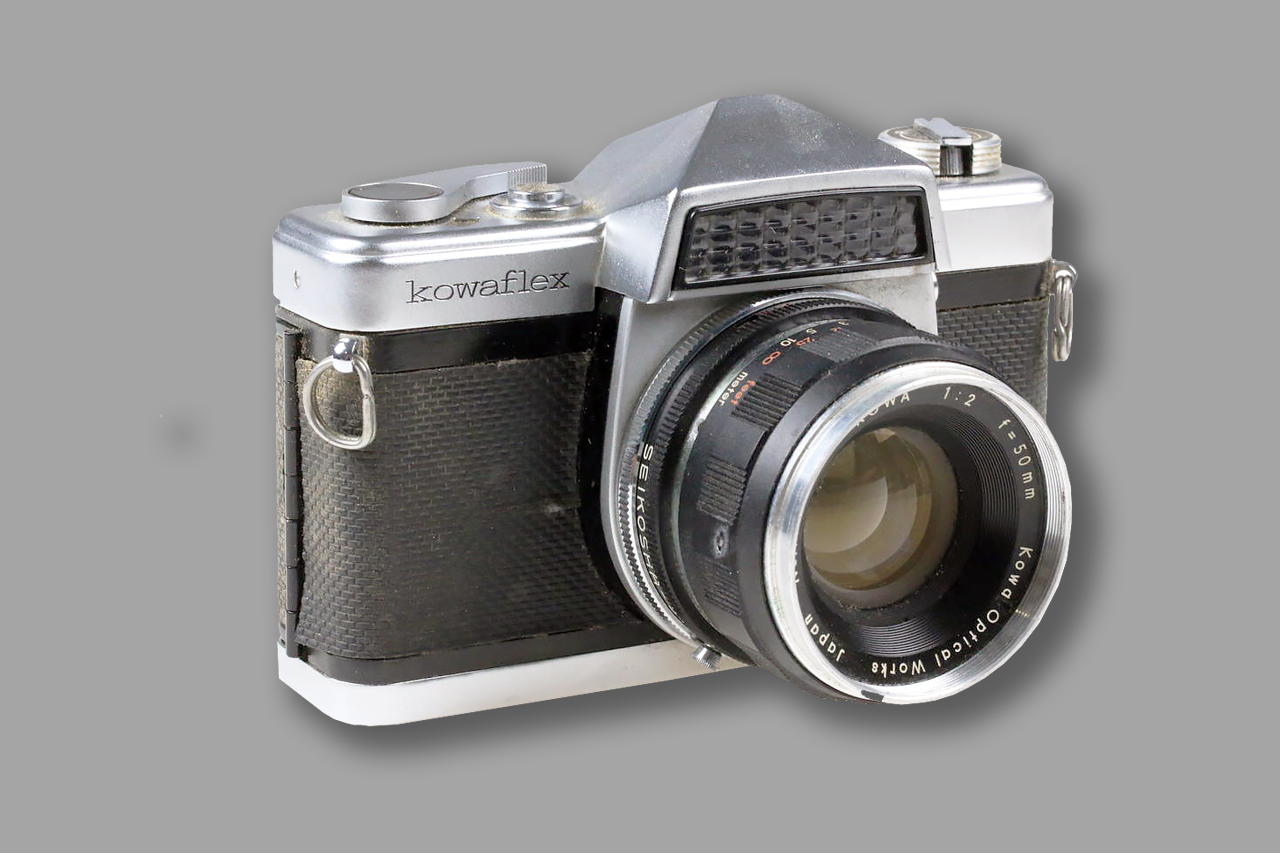
The Kowa E (which appears to have been branded as the Kowaflex E in the USA) was the base model for subsequent Kowa 35mm SLR cameras. It’s a fully manual camera, with an external selenium meter located on the pentaprism housing, and a match-needle pointer in the viewfinder, along with a central split image rangefinder. The lens is a fixed 50mm f/2, and the leaf shutter a Seikosha-SLV with speeds of B and 1-1/500s. Introduced in 1961, and replaced by the Kowa SE in 1964.
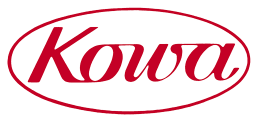
- Kowa SW
- Kowa 35N
- Kowa Kallo 35 (f/3.5, f/2.8, f/2)
- Kallo W (Wide)
- Kallo T85
- Kallo T100
- Kowa Kallo 181/281
- Kowa Kallo 140
- Kowa Kallo 180
- Bell 16
- Ramera or Bell Kamra
- Kowaflex (fixed lens/no light meter)
- Kowa/Kowaflex Model E (fixed lens/external coupled Selenium meter)
- Kowa H (fixed lens/external coupled Selenium meter with auto-exposure system)
- Kowa SE (fixed lens/external coupled CdS meter)
- Kowa SER (interchangeable lens/external coupled CdS meter)
- Kowa SET (fixed lens/internal TTL coupled CdS meter)
- Kowa SETR (interchangeable lens/internal TTL coupled CdS meter)
- Kowa SET R2 (interchangeable lens/internal TTL coupled CdS meter)
- Kowa UW190 (fixed ultra-wide-angle 19mm lens/internal TTL coupled CdS meter)
- Kowa Six
- Kowa Six MM
- Kowa Super 66
- Kalloflex
- Kallovex
- Komaflex-S
- Kowa Kid, also called Kowa Zen-99, Super-Lark Zen-99 or Light Super
- TD-1
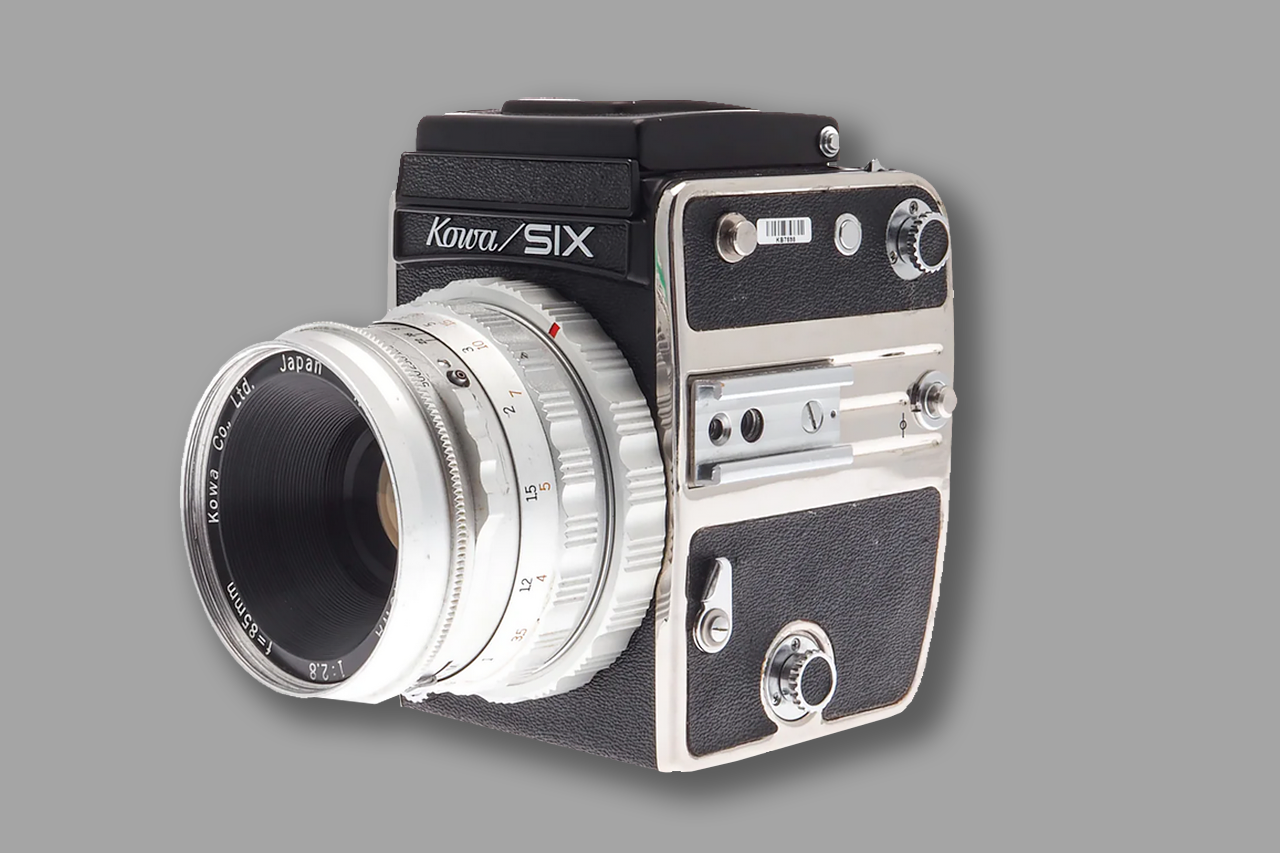
The Kowa Six is an SLR camera for 6×6 cm pictures on 120 film, made by Kowa in the 1960s. The Kowas were designed to compete with 6×6 SLRs like the Bronica S2 and Hasselblad. Unlike these famous models, film is not included in a magazine but in the body itself : the film follows an “L” path, like in the Great Wall DF cameras.
The Kowa six is a well-built, heavyweight camera, 4 lbs./1.81kg with the pop-up finder, but pleasant to handle and to use.

FOUNDING DATE: 1888
FOUNDER: Dr. Rudolf Krügener
COMPANY NAMES:
1888: Dr. Rudolf Krügener, Photochemisches Laboratorium und Fabrik photographischer Apparate Frankfurt-Bockenheim; 1909: Merger to ICA; After the merger, the camera factory in Frankfurt was closed.
COMPANY ADDRESSES:
1888: Frankfurt-Bockenheim; 1907: Furtwangen.
 Rudolf Krügener which had a doctorate in chemistry, led a branch of Agfa in Frankfurt am Main. Since he was handicapped, wearing a self-made leg prosthesis, he developed for himself (with the help of a master mechanic named Krücke) the Dr. Krügenersche Taschenbuch Kamera (Dr. Krügeners’ Pocketbook Camera), one of the smallest cameras of its time, with dimensions of 45x100x140mm it was remarkably small. A novelty was the magazine for 24 plate exposures..
Rudolf Krügener which had a doctorate in chemistry, led a branch of Agfa in Frankfurt am Main. Since he was handicapped, wearing a self-made leg prosthesis, he developed for himself (with the help of a master mechanic named Krücke) the Dr. Krügenersche Taschenbuch Kamera (Dr. Krügeners’ Pocketbook Camera), one of the smallest cameras of its time, with dimensions of 45x100x140mm it was remarkably small. A novelty was the magazine for 24 plate exposures..
The camera was an economic success, which prompted Krügener to no longer have the camera manufactured by Krücke, but to set up his own workshop in Frankfurt-Bockenheim in 1888.
The company traded under Dr. Rudolf Krügener, Photochemisches Laboratorium und Fabrik photographischer Apparate Frankfurt-Bockenheim (Dr. Rudolf Krügener, Photochemical Laboratory and Factory of Photographic Apparatus Frankfurt-Bockenheim). The factory also had its own lens grinding shop and a department for the production of photo chemicals.
 He expanded the company with a plant in Furtwangen. His company produced 100 camera models and kept up with technology. Dr. Krügener favored the film plate format 9×12cm.
He expanded the company with a plant in Furtwangen. His company produced 100 camera models and kept up with technology. Dr. Krügener favored the film plate format 9×12cm.
The next magazine camera was the Simplex, which had a smart plate exchange mechanism inside and an extra lens for the mirror finder. It can be seen as predecessor of the twin lens reflex cameras.
Although he led an economically extremely solid company, he agreed to a merger of his company to form the International Camera Aktiengesellschaft (ICA) in 1909 for personal reasons. After the merger, the camera factory in Frankfurt was closed.
Krügener’s son Walter took over the management of the Furtwangen division, his son Hermann Krügener became a member of the ICA Board of Directors.
His daughter Ruth married the later German photo camera pioneer Hugo Schrader, who had found a job in his company since 1900.
His grandson from this marriage was Goetz Schrader, who continued the Plaubel camera factory founded by his father Hugo.
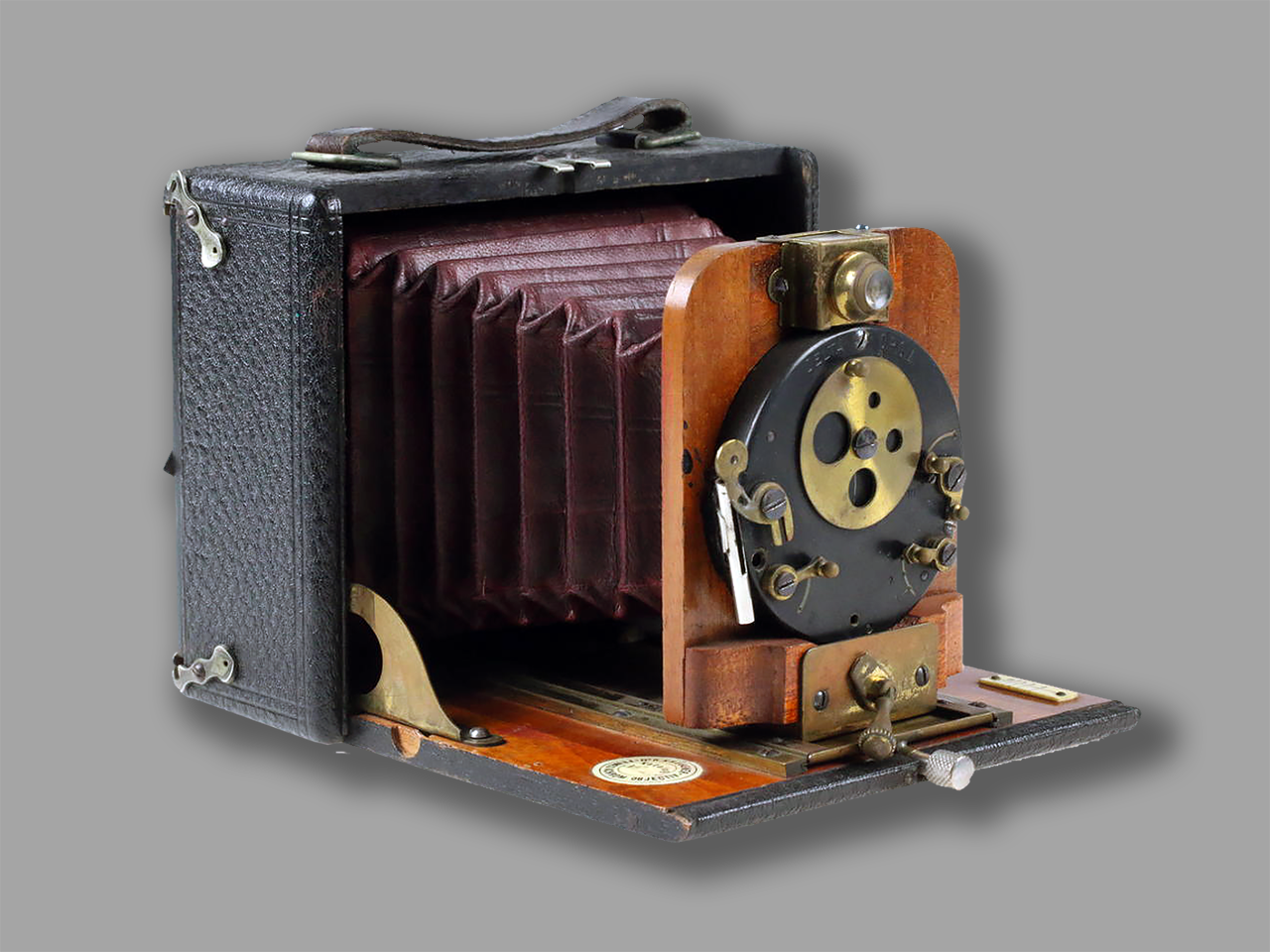
Krügener’s Delta; Leather covered body, leather bellows; For 9 x 12 cm plates held in dark-slides; Brilliant view-finder. Spirit level. Infinity lock; Hooded focusing screen. 6 single metal slides marked Krügener Delta in two pouches. Cover plate for back of camera.
- Dr. Krügenersche Taschenbuch Kamera (1888)
- Perkeo No. 140 (1888/89)
- Simplex Magazin Camera (1889)
- Delta-camera detective camera (1893)
- Magazin-Handkamera (1895)
- Special-Alpha Magazin-Camera (1901)
- Cartridge-Camera (1901)
- Delta (different models from 1898 to 1905
Delta 8×10,5
Delta 9×12
Delta-Teddy (1899) - Helvetia
- Minimum-Delta (1908)
- Teddy (1901)
- Trona
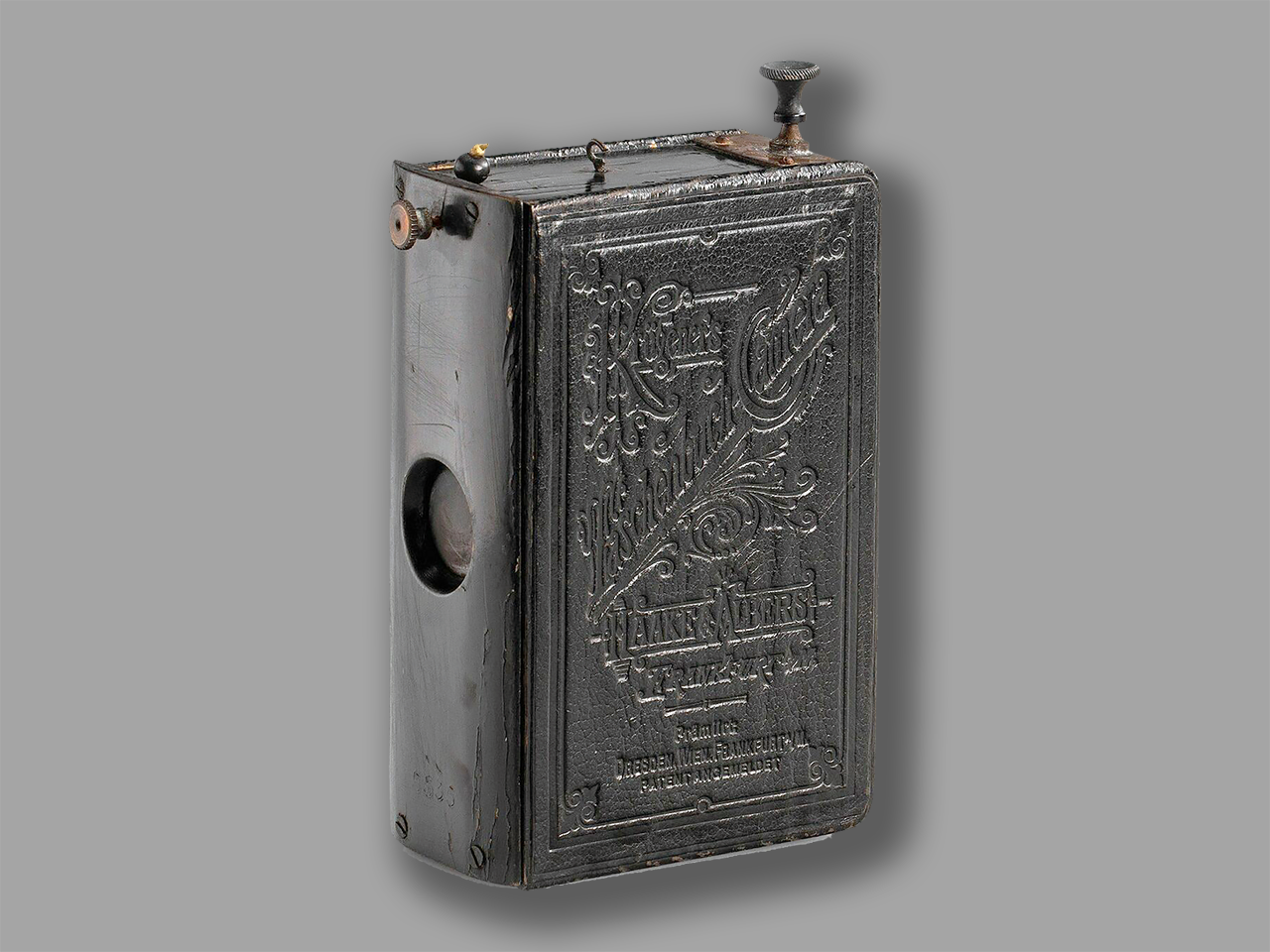
Krügener’s Patent Book Camera 1889; Leather covered wood body; Format 24, 4 x 4 cm plates held in changing mechanism; The most popular of the book cameras, designed by Dr. R. Krügener and manufactured by Haake & Albers of Frankfurt am Main. It was sold by a number of agents throughout the world.
FOUNDERS: Wilhelm Kürbi & Carl Niggeloh
COMPANY NAMES:
1909: Metallwarenfabrik Kürbi & Niggeloh; Kürbi & Niggeloh Bilora GmbH, Kürbi – Otto Tonnes GmbH; 1994: separation of the two divisions of “Photo” and “Custom work”: the Kürbi – Otto Tonnes GmbH concentrates on the photo business while Kürbi & Niggeloh Bilora GmbH concentrates on the production of plastic items; 2012: Bilora GmbH; 2016: Bilora Kundstofftechnik GmbH.
COMPANY ADDRESSES:
1909: Barmen-Rittershausen; 1911: Radevormwald; 2023: Plant 1 – Uelfe-Wuppertal-Straße 1-3, 42477 Radevormwald and Plant 2 – Mermbacher Straße 21, 42477 Radevormwald.
Bilora (Kürbi and Niggeloh) is now a company which deals with tool making, plastic injection molding and finishing and which was one of the leading manufacturers of camera tripods from 1909 to 1991, which have since been produced by licensees. The company produced cameras in Radevormwald from 1935 till 1975. From the first “Box” to the “Bilomatic” were more than one million cameras produced.
Bilora (the name consists of parts of the name KürBI NiggeLOh RAdevormwald), is a German manufacturer of photo accessories and plastic parts (founded in 1909, with Camera production as from 1935).
The history of Bilora GmbH began with the founding of the Kürbi & Niggeloh Metallwarenfabrik on February 1, 1909 in Barmen-Rittershausen. At that time, in addition to the tripods that had just been developed, a number of consumer goods were also produced, such as music stands, extendable pendant lamps, hat stands and postcard stands.
From 1911, products were developed and manufactured in a new factory building in Radevormwald on a total of 1200 m². Over the years, many good ideas in tripod construction have been realized and even a significant camera production has been established.
From 1935 to 1975 there were also cameras from the company with names like Bellina, Bella, Boy and Bonita. A million cameras were sold from the inexpensive BILORA standard box alone, and working models can still be found among collectors today.
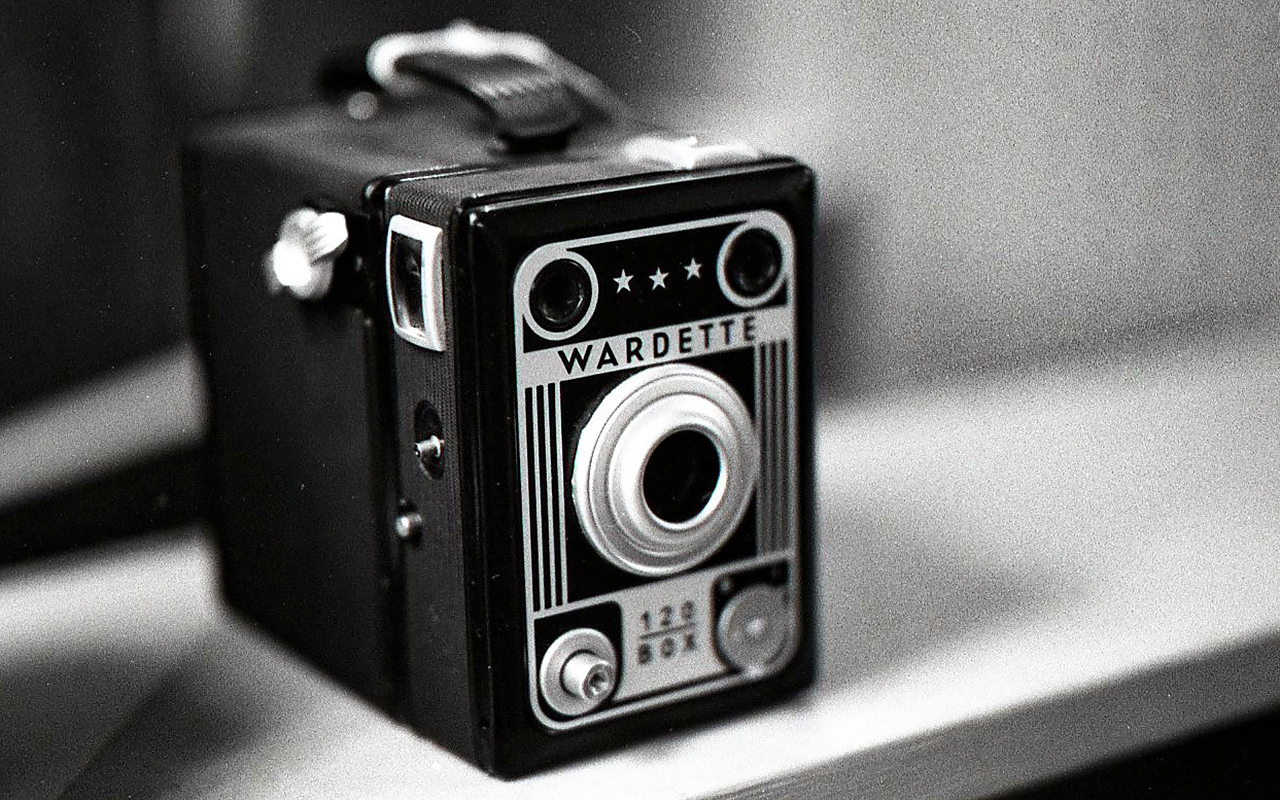
The Wardette is a metal box camera sold by Montgomery Ward during the mid to late 1950s. The camera was manufactured Bilora, based on their Stahl-Box camera. While camera production ceased during WWII, it recommenced after the war and, in 1949, they introduced the Stahl-Box (Steel Box). This Stahl-Box would make the trip across the Atlantic to North American markets under the name Wardette.
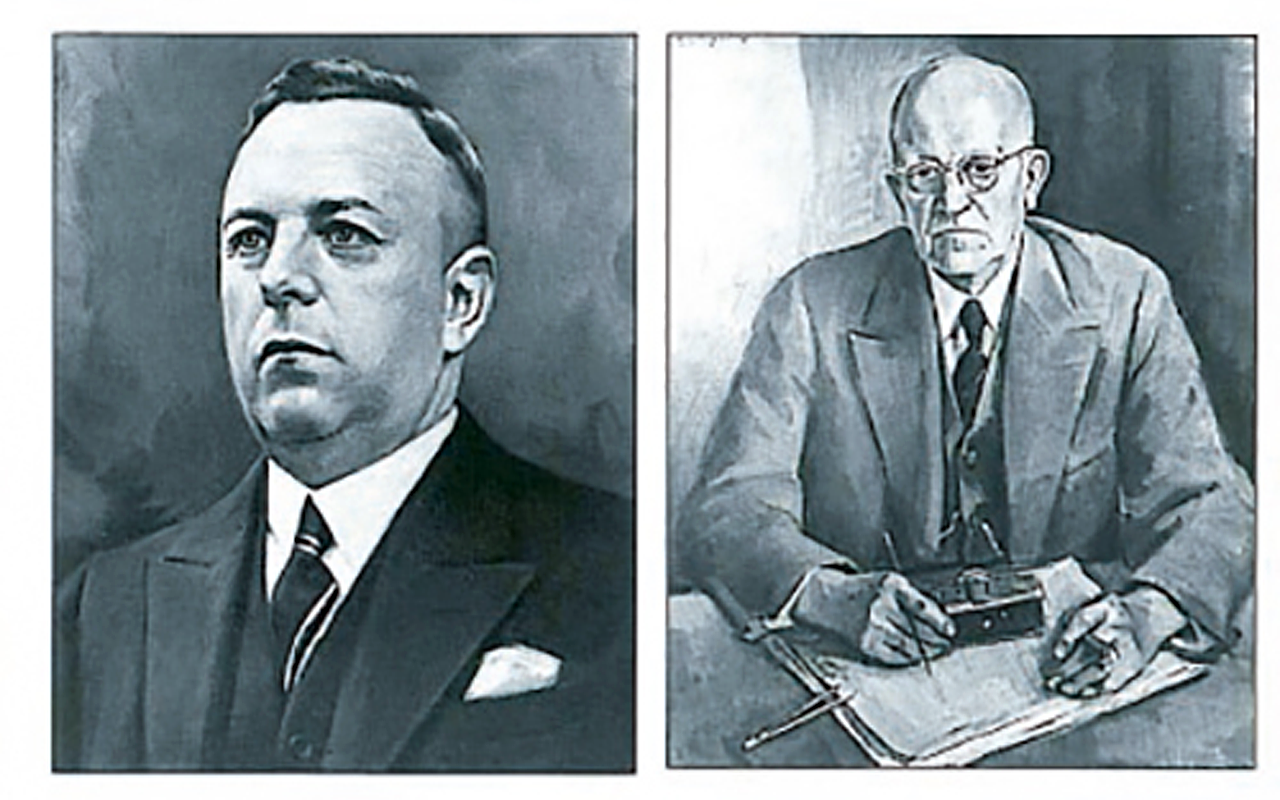
Bilora company founders and namesakes: Wilhelm Kürbi and Carl Niggeloh.
In 1936, BILORA launched the Bilora box. The interesting feature of this box was the double exposure lock, which at the time had the fewest cameras.
In the same year, BILORA entered into a contract with Voigtländer for whom the Voigtländer box was built. The production sites soon became too small and the decision was made to expand and hire new employees.
However, as early as 1939, with the outbreak of the Second World War, production had to be changed because cameras and tripods were not “material essential to the war” in the eyes of the Nazis. Instead, antennas and telescopic antennas had to be produced. The experience in tripod construction was definitely an advantage..
After the Second World War, air pumps and jet regulators for water taps were first manufactured at BILORA. It wasn’t until a year later, in 1946, that camera production started again, but for the time being only for the British Rhine Army.
After the currency reform in 1948, all articles could be sold to the population again without restrictions and the demand soon exceeded the production capacity. At that time, the Wardette box was created especially for the American market, with a stars and stripes design.
Although Bilora was one of the leading manufacturers of tripods, camera production has long been part of the company’s history. These were manufactured between 1934 and 1975, when over 30 different models were produced, such as the Box series (including the Gevabox from Gevaert, later Agfa-Gevaert), the Boy cameras, various Bella models (including the Geva 66 from Gevaert), Bilomatic cameras (also released as the Zeiss Ikon Ikomatic, Yashica Minipak, and Revue-Matic) and the lesser-known Bellina, Bonita and Radix.
This also includes for example the contract production of the “Ansco-Lancer”. This camera was built in 1955 and is the least likely to be found in our latitudes. Because this camera was specially produced on behalf of the company Agfa-Ansco for export to the USA.
At Christmas 1949 the BILORA Boy came onto the market. The special thing about it was its beautifully designed plastic housing and the hand-painted white ring around the lens.
Almost everyone can still remember the “camera hits” of the Bilora company: Bella, Boy and Box. At that time, these inexpensive small-format cameras made photography a kind of popular sport. For example, a Bilora standard box 6 x 9 cm cost DM 13.50 in 1954 and the Bilora Boy 4 x 6.5 cm DM 12.00. Over 1,000 pieces were built each day, each copy being checked by hand and was polished to a high gloss before packaging.
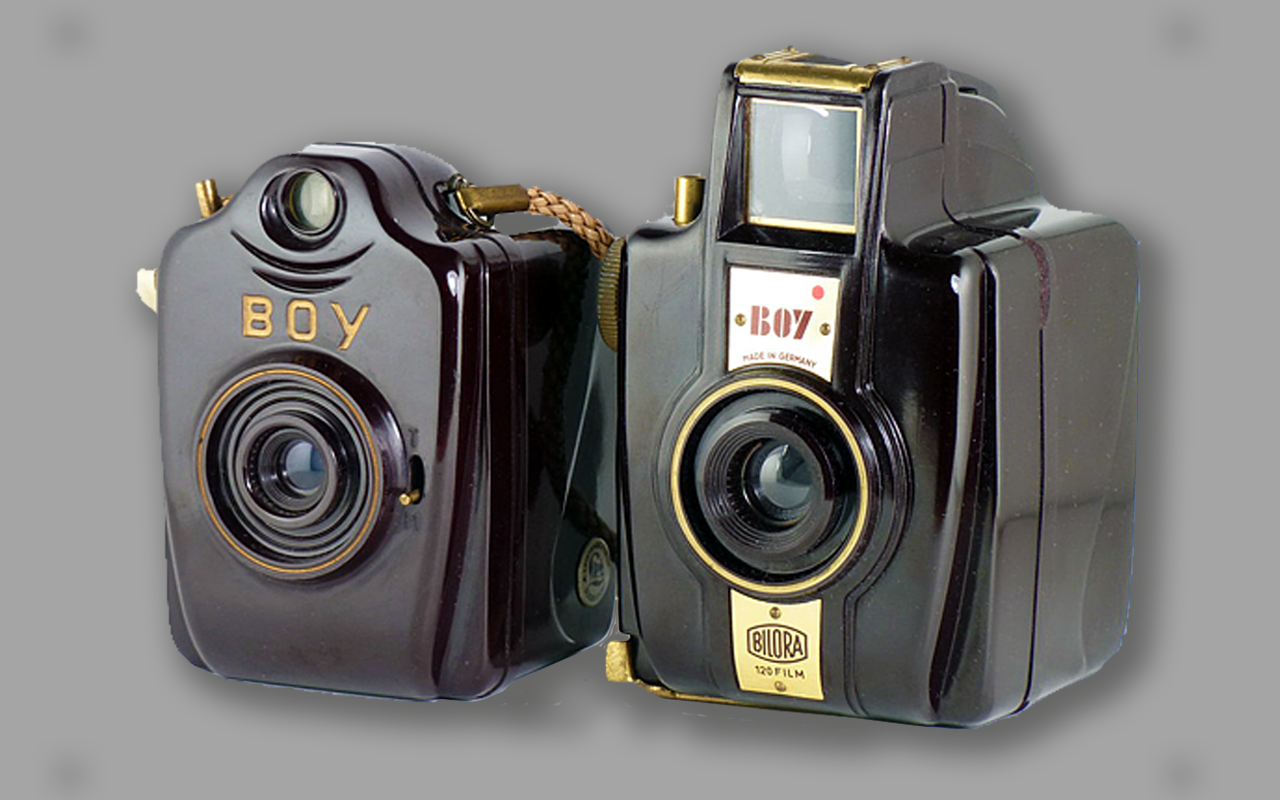
Two Boy cameras from the early days of Kirby and Niggeloh made from the (then) new plastic material Bakelite.
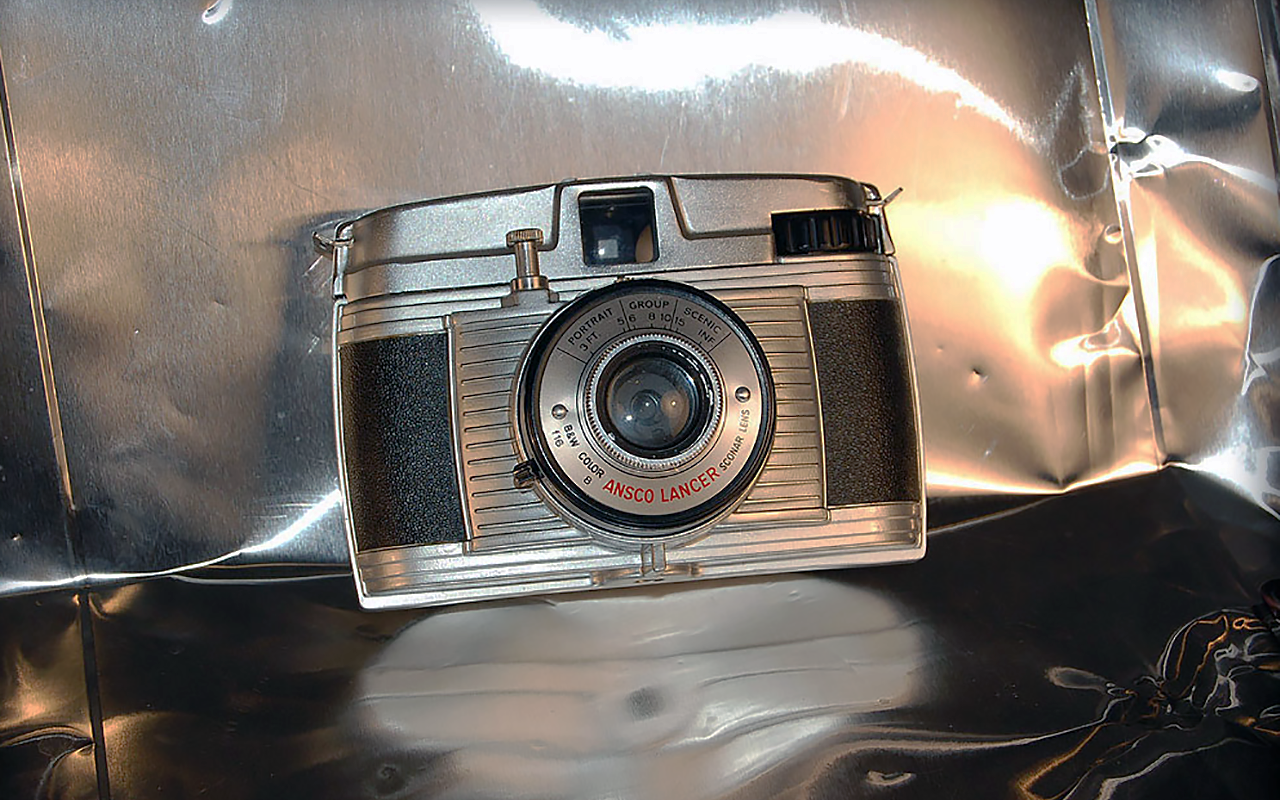
The Ansco Lancer was made in Germany by Bilora for Ansco, and is a rebadged Bella – being almost identical to the Bella 46-2. It made 12 4x4cm exposures on 127 film.
Goodbye to camera manufacturing
The great success BILORA had with the Boy in Germany was also registered in America and soon the first major order was placed: 250,000 Boy boxes had to be produced. In America they were then sold as a tower box.
In 1951, BILORA launched the first Bonita Box 66. She was actually a hermaphrodite. On the one hand, it was a two-eyed camera, on the other hand, it contained the technology of a box camera.
 In 1952, a box was even developed for science: the Microbox. Already in 1956 a big anniversary could be celebrated: the 1,000,000. 6 x 9 box rolled off the assembly line produced for Agfa, Zeiss Ikon and Yashica.
In 1952, a box was even developed for science: the Microbox. Already in 1956 a big anniversary could be celebrated: the 1,000,000. 6 x 9 box rolled off the assembly line produced for Agfa, Zeiss Ikon and Yashica.
The BILORA Boy was upgraded again in 1957. It received a large viewfinder and a flash connection and was now called Blitz-Boy or Luxus-Boy.
Plastic (camera) accessories have also been manufactured since the 1960s, which was quite special at the time. The camera production ended in 1975. From then on, the focus of Bilora was on the production of tripods, camera accessories and plastic processing. There were also the no less famous tripod models such as Perfect, Stabilo Rotax, Biloret and Monaco. The range has been expanded to include new tripod models for amateurs and professionals.
In July, 1961 the first automation for synthetic parts was installed, because it was recognized that plastics would play an increasingly important role in the future. Years later the fabrication building was too small again and a second building was built in the commercial area of the place, with a surface of 12,000m². Since that time production and stock keeping were settled there.
In 1978 the company was expanded to include a second plastics processing plant. In 1991, this plant was expanded to over 4000 m² of production space and 3500 m² of assembly and storage space.
 In 1988, the course was set in order to be able to offer an even larger selection of accessories in a constantly changing photo market.
In 1988, the course was set in order to be able to offer an even larger selection of accessories in a constantly changing photo market.
The well-known FOTIMA range of photo and video bags could be offered exclusively for the German market and the entire selection of items was to increase steadily over the coming years.
In order to implement a concept of continuity, flexibility and value for money even more intensively than before, photo sales were spun off as a subsidiary in 1994: Kürbi-Otto Tönnes GmbH with the owners Kurt-Eduard Kürbi and Hartmut Reck. In order to be able to react even more flexibly to customer requests, the company changed location within Radevormwald in 2008. The new, larger and more modern hall offered more space for the constantly growing program.
In October 2011, Carsten Reck, one of the shareholders’ sons, took over the management of the company. From August 2012, the company trades as BILORA GmbH and then moved to new premises in Remscheid on April 1, 2014. Kürbi & Niggeloh BILORA becomes BILORA Kundstofftechnik GmbH in 2016. The change of its name underlines the focus of the core business – tool making, plastic injection molding and finishing.
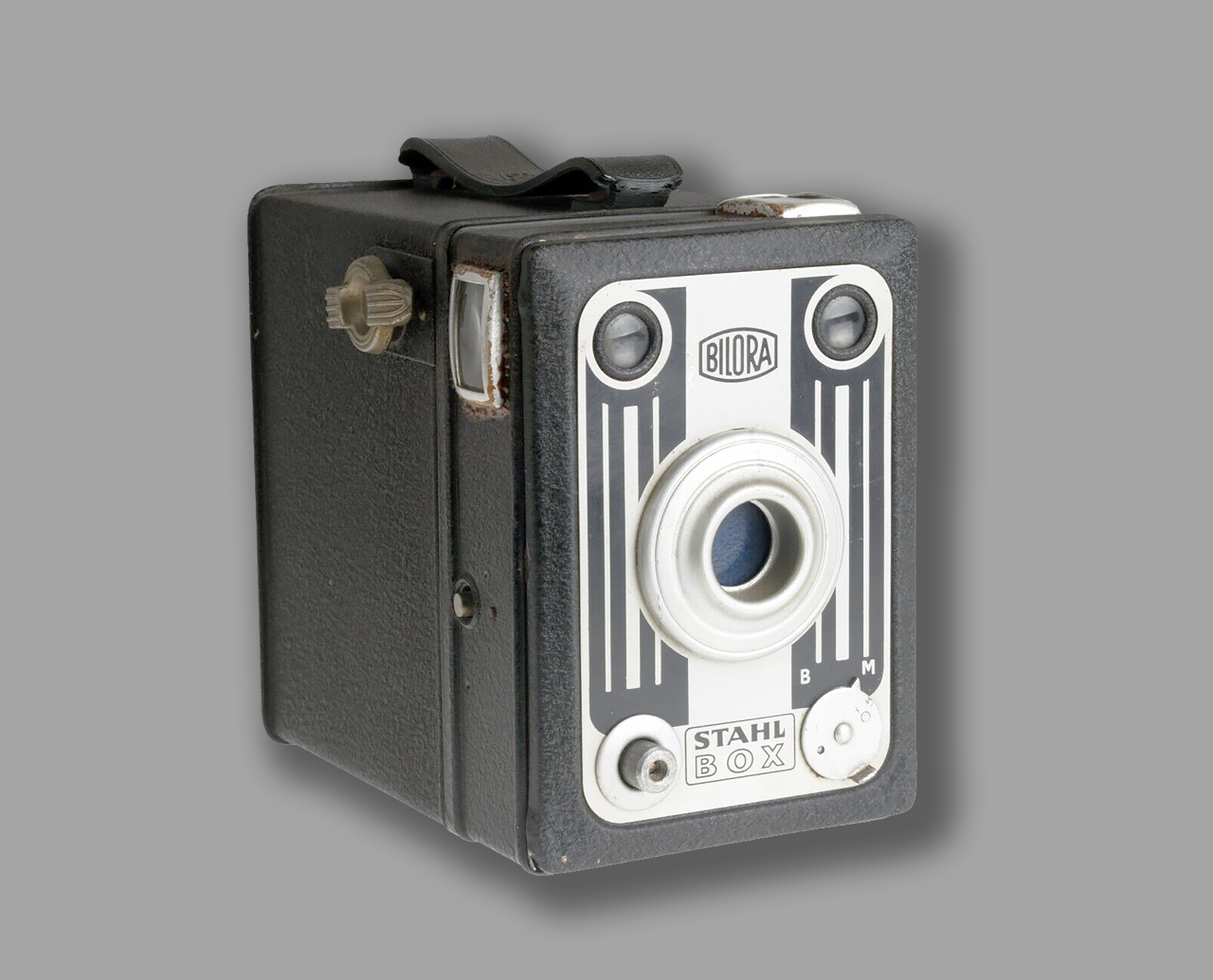
The Bilora Stahl-Box camera was made in circa 1952. This box camera was constructed of metal with an art deco etched face plate. It was capable of capturing 6 x 9 cm exposures on 120 roll film. It was fitted with a fixed focus meniscus lens and a simple B & M shutter. The camera measures 4 1/2 x 3 /18 x 4 1/2 inches.
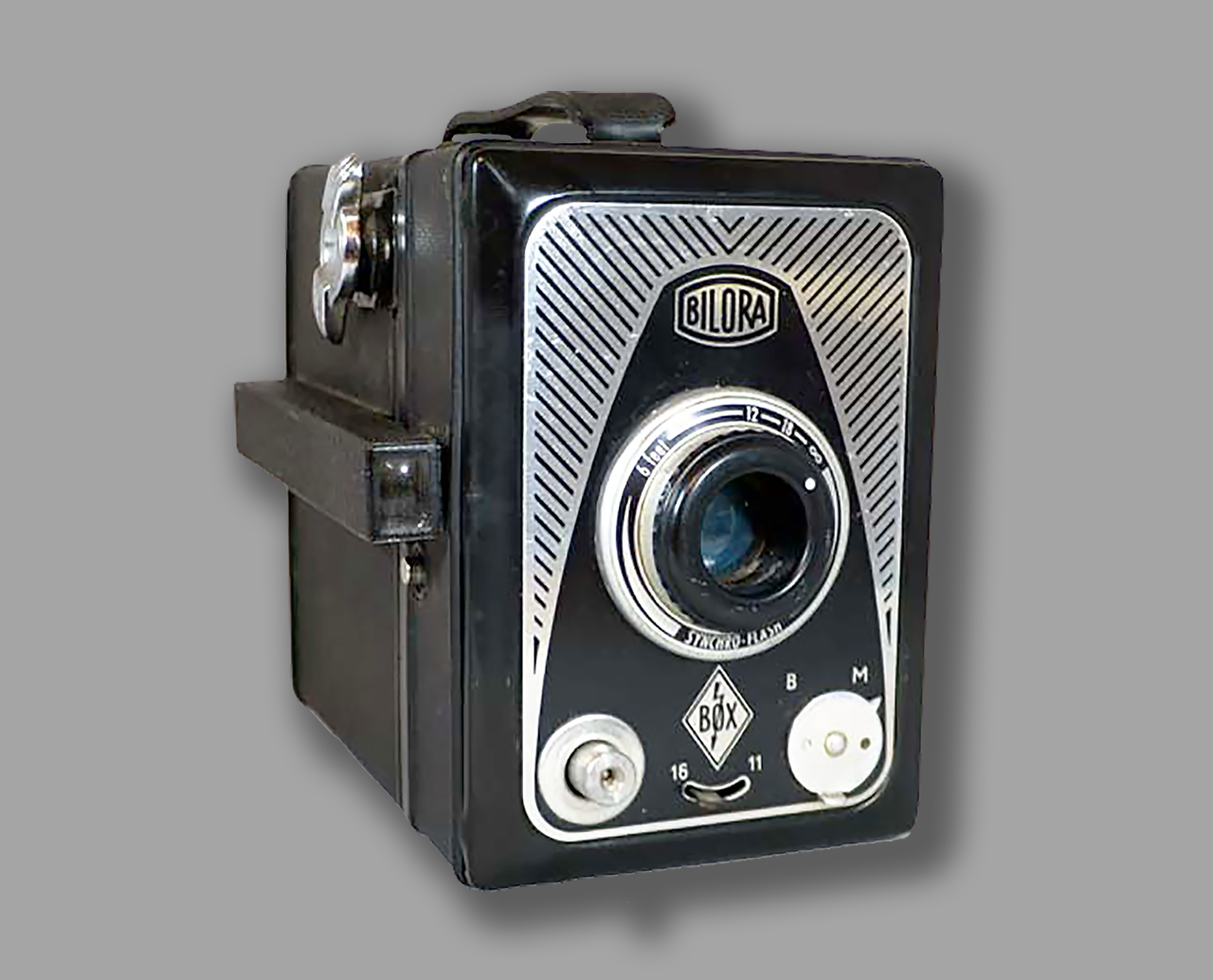
The Bilora Blitz Box camera is capable of capturing 6 X 9 cm exposures on no. 120 roll film. It is made of metal with imitation leather coverings which are embossed with a fine chevron pattern. It’s name, ‘Blitz’, indicates that it features a synchronized flash. It has a fixed focus lens with two aperture settings.
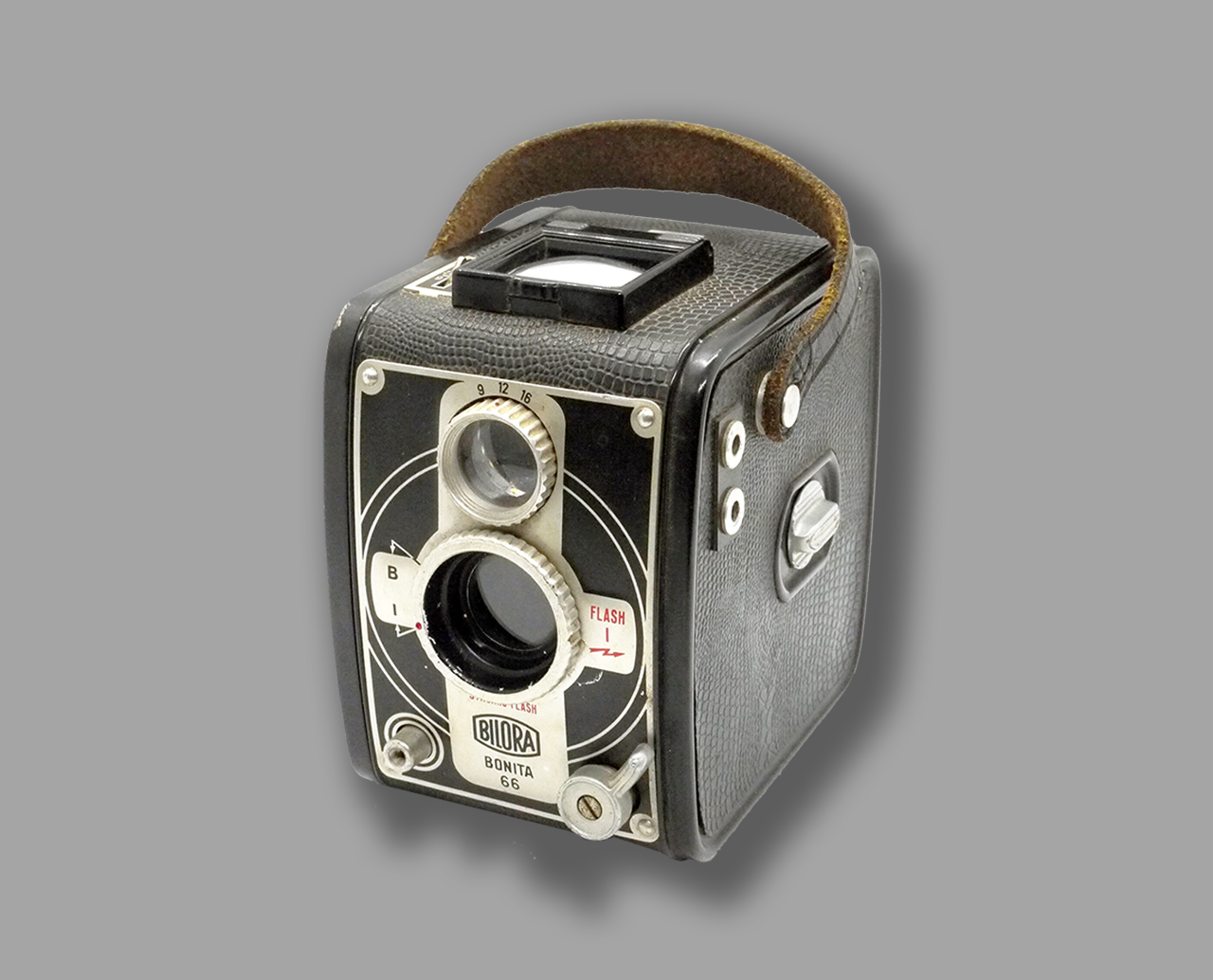
The Bilora Bonita camera was manufactured in circa 1951. As the name implies, this twin lens camera was capable of capturing 6 X 6 cm exposures on no. 120 roll film. It was made of metal with imitation leather coverings. It featured a large top mounted direct view finder providing the full image, with a collapsible hood.
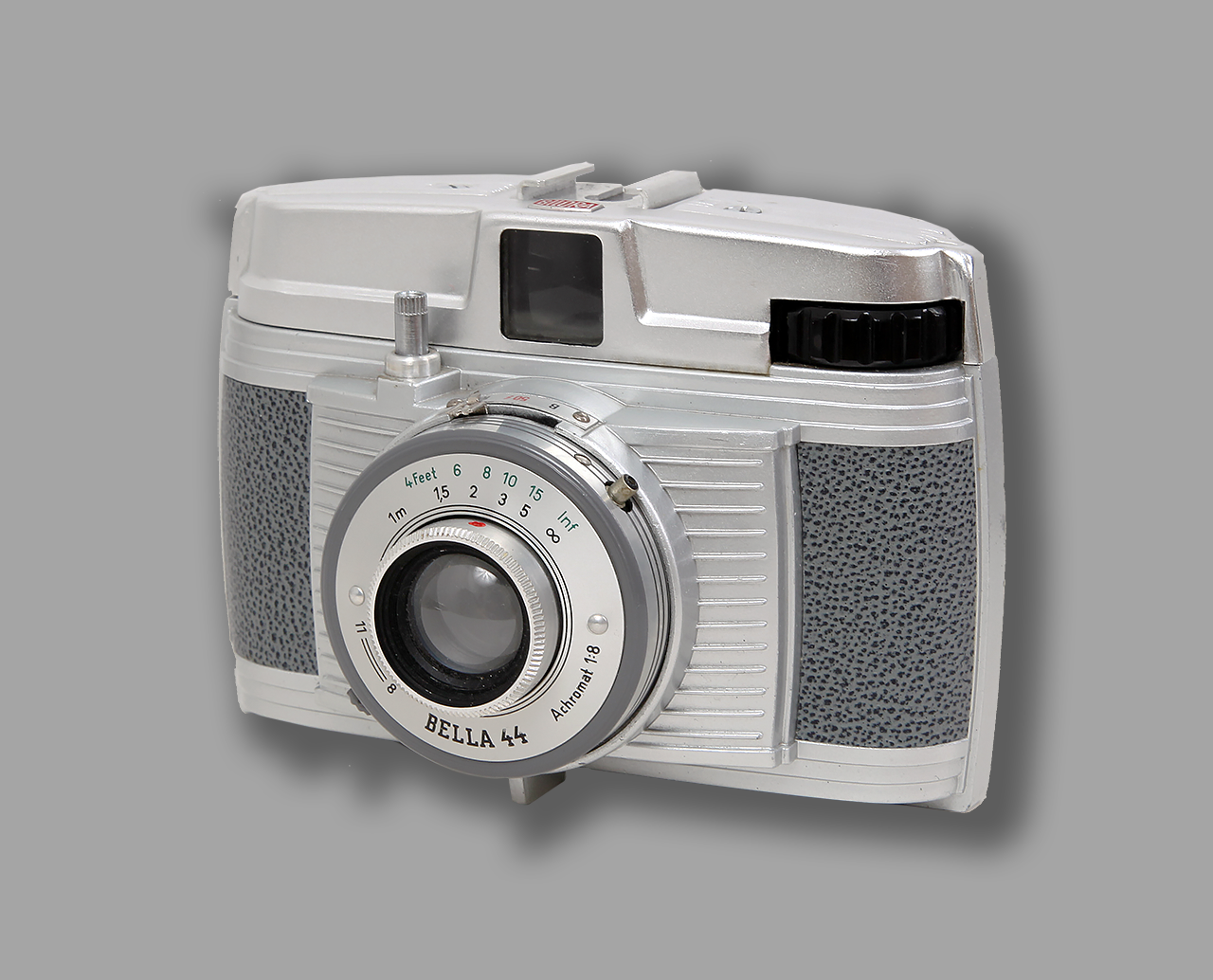
The Bilora Bella 44 is a viewfinder camera introduced in 1958. It produced 4×4 cm exposures and was very similar to the original Bella of 1953 and the Bella 46. During its production life, the Bella 44 was also sold in the US as the Tower No. 5 and the Ansco Lancer as well as in Germany as the Foto-Quelle Revue 44.
The Bilora camera program
- Bilora Box
- Stahl-Box, Wardette
- Box 1 – The first BILORA Box from 1935
- Box 2a – Sperr-Box
- Box 2b
- Box 2c
- Box 3 – Stop-Box
- Box 4 – The second Stahl-Box
- Voigtländer box
- Box 5 – The third Stahlbox
- Box 5a – perfective maintenance
- Box 6a – Blitz-Box “A”
- Box 6b – Blitz-Box “B”
- Box 6c – Blitz-Box “C”
- Box 6d – Blitz-Box “C” Version
- Box 6e – Blitz-Box “D”
- Box 7 – Color-Box
- Box 8 – Stahl-Box (the fourth)
- Box 10 – Spezial-Box
- Box 9a – Stafette Box
- Mikro-Box-Set
- Cariphot Box
- Tower Box 120
- Tower Flash 120
- Tower Flash 120 De Luxe
- Tower Model Five
- Tower Flash Model 7
- Tower Flash Model 8
- Wardette Box
- Boy 1
- Boy 2
- Boy 3
- Boy 4 (Mode-Boy black)
- Boy 5 (Mode-Boy red)
- Boy 6 (Boy-Luxus red)
- Luxus-Boy
- Luxus-Boy 2 (Blitz-Boy)
- Tower-Boy
- Tower-Junior
- Bilora Radix 24 x 24 mm KB-Camera (for Karat-/Rapidfilm) c.1948–
- Bonita 2 – Synchro-Flash
- Bonita 2a – “Elektra”
- Bonita 66
- GEVA Box 2
- Bella 1 – The Ur-Bella
- Bella 2
- Bella 3a – Bella 55
- Bella 3b
- Bella 3c
- Bella 66 -4e with included flash
- Bellaluxa 1
- Bellaluxa 2a
- Bellaluxa 2b
- Ansco Lancer
- Bella 44 – 1
- Bella 44 – 1a
- Bella 44 – 2
- Bella 44 – 3
- Bella 46 – 1
- Bella 46 – 2
- Reporter Max II
- Revue 4×4 – Quelle
- Roxa 4-4
- Tower Nr. 5
- Bella 66 – I
- Bella 66 – IIa
- Bella 66 – IIb
- Bella 66 – IIc
- Bella 66 – 3
- GEVA 66
- Bella 66 – 4a
- Bella 66 – 4b
- Bella 66 – 4c & 4d “Standard”
- Auto-Bellina
- Bellina 1a
- Bellina 1b
- Bellina Standard grey or black
- Bella 35 – 1
- Bella 35 – 2a
- Bella 35 – 2b
- Bella 35 – 3
- Bonita 35 – 1
- Bonita 35 – 2
- Bilomatic C with frame
- Bilomatic C without frame
- Bilomatic CA
- Bilomatic CA Set
- Bilomatic F
- Bilomatic X
- Revue-matic 350 CA
- Yashica Minipac
- Ikomatic A, Ikomatic F, Ikomatic CF
- Bella 66 “FLASH”
- Box Leuchte
- Luxa
- Luxa 2
- Luxa 2a
- Luxa 7023 flash
- Luxa 7027 flash
- Luxa de Luxe flash
- Luxi flash
- Luxa K
- Luxa Pan

FOUNDING DATE: 1959
FOUNDER: Kazuo Inamori
COMPANY HISTORY:
1959: Kyoto Ceramic Co. Ltd.; 1982: Four affiliates, including Cybernet Electronics Corp., merge with Kyoto Ceramic Co., Ltd. to form Kyocera Corporation; 1983: Yashica Company Ltd. merges with Kyocera; 1989: Elco Corp. joins the Kyocera Group; 2002: Toshiba Chemical Corp. joins the Kyocera Group; 2004: Hotel Princess Kyoto joins the Kyocera Group; 2009: TA Triumph-Adler AG joins the Kyocera Group: 2011: Unimerco Group (now Kyocera Unimerco A/S) joins the Kyocera Group; 2013: NEC Toppan Circuit Solutions, Inc. joins the Kyocera Group; 2015: Nihon Inter Electronics Corp. joins the Kyocera Group; 2017: Senco Holdings, Inc. (now Kyocera Senco Industrial Tools Inc.) joins the Kyocera Group; 2019: SouthernCarlson, Inc. joins the Kyocera Group; 2020: Showa Optronics Co., Ltd. (now Kyocera SOC Corporation) joins the Kyocera Group; 2021: Soraa Laser Diode, Inc. (now Kyocera SLD Laser, Inc.) joins the Kyocera Group.
COMPANY ADDRESSES:
1959: Kyoto, Japan; 1972: Headquarters is relocated to Yamashina, Kyoto, Japan; 1998: New headquarters building is completed in Fushimi, Kyoto, Japan; 2023: 6 Takeda Tobadono-cho, Fushimi-ku, Kyoto, Japan.
Kyocera, originally a ceramics manufacturer, was founded in 1959 as Kyoto Ceramic Co. Ltd.. It changed its name to Kyocera in 1982, and became involved in camera production in October 1983, when it acquired Yashica Company Ltd. In 2005, Kyocera announced it would cease production of all Yashica, Kyocera, and Contax cameras.
 Dr. Kazuo Inamori helped co-found Kyocera in 1959 as Kyoto Ceramic Company, Limited. This startup firm began producing a component called a “Kelcima”. The device functioned as a ceramic insulator for television picture tubes. Dr. Inamori helped pioneer the emerging field of engineered ceramics.
Dr. Kazuo Inamori helped co-found Kyocera in 1959 as Kyoto Ceramic Company, Limited. This startup firm began producing a component called a “Kelcima”. The device functioned as a ceramic insulator for television picture tubes. Dr. Inamori helped pioneer the emerging field of engineered ceramics.
Now widely known for his efforts to help Japan Airlines re-surge from bankruptcy, Dr. Inamori during the 1960s, 1970s and 1980s developed numerous applications for ceramic products. The Kyoto Ceramic Company frequently created specialized parts for IBM and NASA. It also contributed to the development of rapid mass transit bullet trains in Japan. The firm eventually became “Kyocera”, adopting this name in 1982.
Kyocera became involved in camera production in October 1983, when it acquired Yashica Company Ltd. Initially, the company continued to produce evolutionary camera designs under the Yashica and Contax brands, such as the Yashica FX-3 and Contax 159MM.
The manual-focus (MF) FX-103 Program, introduced in 1985, continued the ‘pairing’ tradition of Yashica SLR models with those of Contax (Contax 159mm), and featured TTL flash and full programmed exposure capabilities. Both brands continued to feature the same C/Y bayonet lens mount, allowing owners of less expensive Yashica cameras to use all of the Contax/Yashica lenses, including the premium Contax Zeiss T* lenses.
Integration of the Yashica name
 However, the 1985 introduction of Minolta’s Maxxum/Dynax 7000 autofocus (AF) camera was a huge success, and all camera makers scrambled to catch up. Kyocera decided to reposition the entire Yashica manual-focus SLR line as a ‘value-priced’ choice for entry-level photographers.
However, the 1985 introduction of Minolta’s Maxxum/Dynax 7000 autofocus (AF) camera was a huge success, and all camera makers scrambled to catch up. Kyocera decided to reposition the entire Yashica manual-focus SLR line as a ‘value-priced’ choice for entry-level photographers.
Kyocera also began to offer various cameras with the Kyocera nameplate for buyers in Japan, while subsuming the old Yashica into its new corporate identity. The company also decided to manufacture an AF 35mm SLR camera and a new series of AF lenses to compete with Minolta’s revolutionary Maxxum/Dynax.
In December 1986, Kyocera introduced its new line of autofocus 35mm SLR cameras and lenses, all but one carrying the Yashica name for the international market. Unfortunately, the new Yashica AF cameras were introduced rather late and had difficulty against more established competition, which also had a larger selection of compatible lenses.
A little better success was achieved with the Samurai series of compact SLRs in camcorder design. These zoom cameras were optimized for one-hand operation. The Samurai Z was even available in a left-handers’ version (Samurai Z-L). Furthermore, the attractive range of Contax Carl Zeiss T* lenses was no longer an option, as there were no new Contax lenses in the new Yashica autofocus mount.
Kyocera attempted to encourage existing owners of Yashica manual-focus SLR cameras to move to autofocus by offering a 1.6x tele-converter adapter to mount Yashica or Contax MF lenses to the autofocus cameras, but without much success.
The Yashica autofocus SLR cameras continued in a progressively cheapened series of models until 1994, when the entire autofocus line was discontinued, reportedly after significant losses.
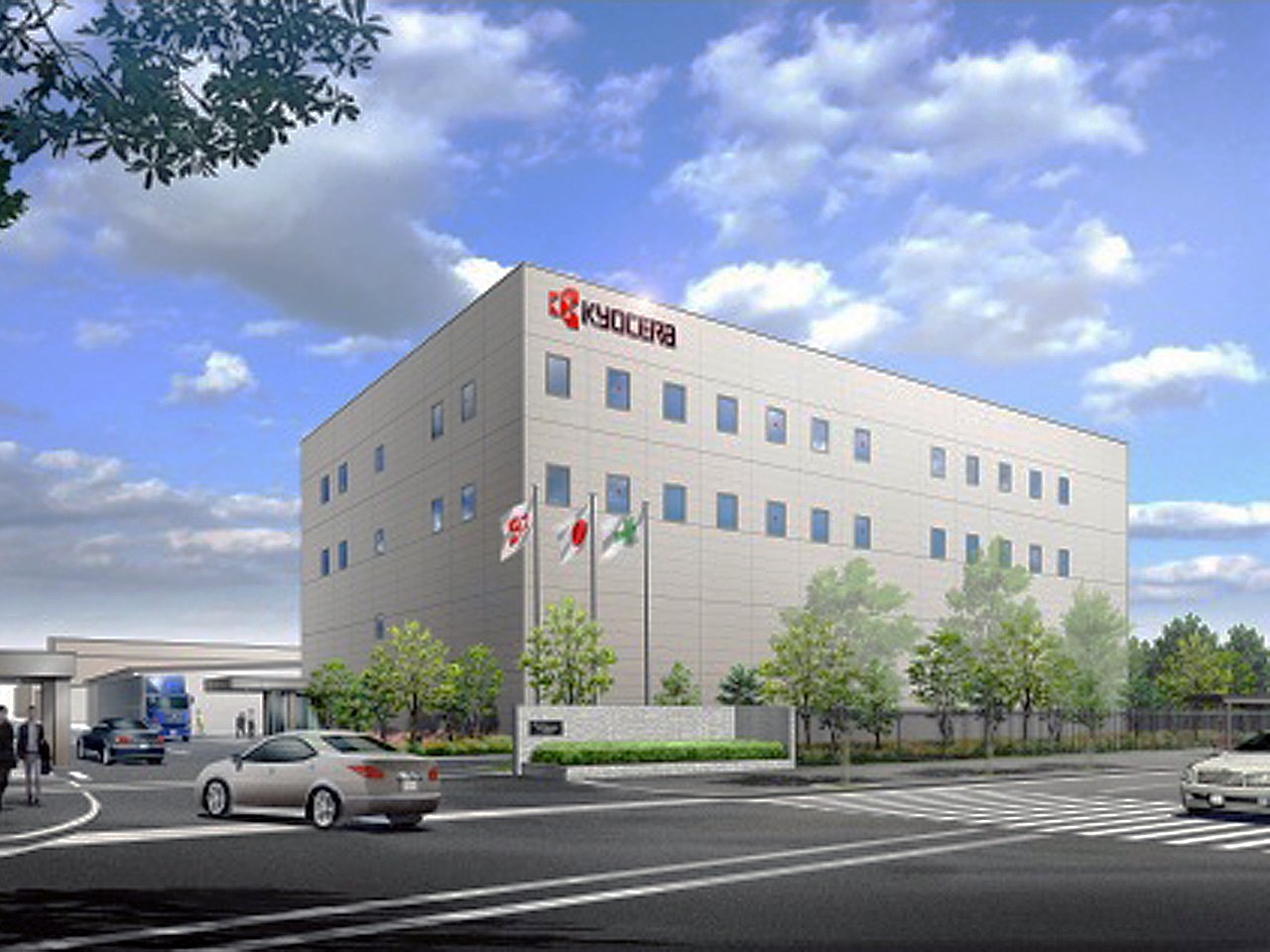
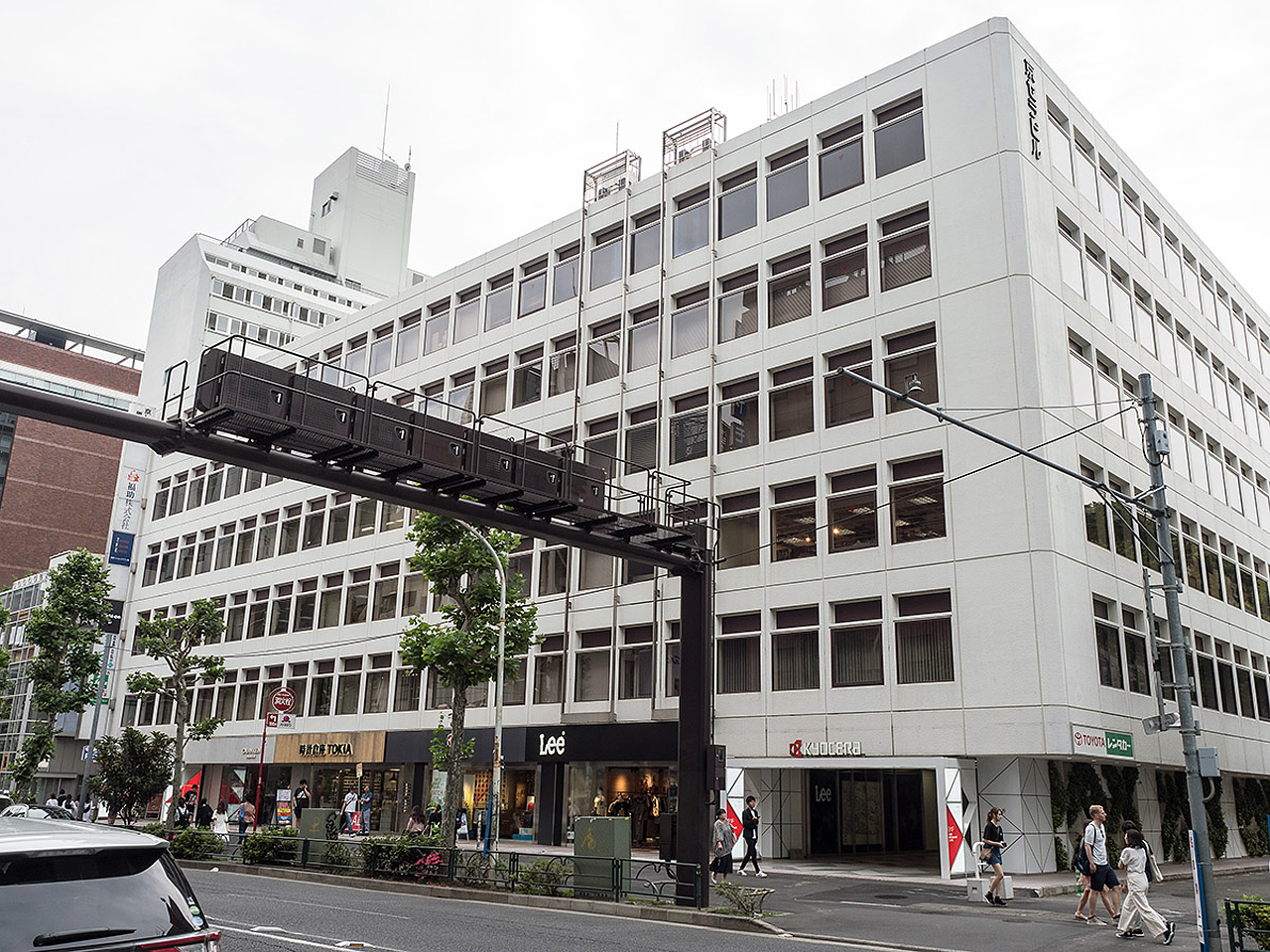
The end of camera production came in 2005
Kyocera also made a number of fairly successful autofocus point-and-shoot film cameras for the consumer market, culminating in 1992 with the Yashica T4. This compact camera was equipped with a high-quality 35mm/3.5 Carl Zeiss T* lens along with improved weather sealing, and proved very popular as a rugged travel camera.
 Kyocera had also continued the process of repositioning Yashica SLR cameras, offshoring assembly to China and Hong Kong to reduce costs. Kyocera’s last series of 35mm Yashica SLRs, the 107/108/109MP line, was not a commercial success, though the old Yashica FX-3 (now in Super 2000 form) sold well until its discontinuance in 2002.
Kyocera had also continued the process of repositioning Yashica SLR cameras, offshoring assembly to China and Hong Kong to reduce costs. Kyocera’s last series of 35mm Yashica SLRs, the 107/108/109MP line, was not a commercial success, though the old Yashica FX-3 (now in Super 2000 form) sold well until its discontinuance in 2002.
Kyocera continued to make point-and-shoot film cameras under its own name and that of Yashica, as well as premium rangefinder and SLR models. These include the 35mm Contax G and Contax G2 rangefinders, and the Contax N-series of autofocus SLRs.
The company also entered the digital camera field in 1997 with Kyocera, Yashica, and Contax branded models. A new medium-format film camera, the Contax 645 AF, appeared in 1999, along with several dedicated and interchangeable lenses.
In 2005, Kyocera announced it would cease production of all Yashica, Kyocera, and Contax cameras.
Above Yashica’s current headquarters; at the bottom left the Kyocera Building in Kyoto, Japan.
- Yashica FX 3 Super and Super 2000
- Yashica FX 7 Super
- Yashica FX-80
- Yashica FX-103 Program
- Kyocera Yashica 107, 108 & 109 Multi Program
- Kyocera/Yashica 200-AF (1987)
- Kyocera 210-AF
- Kyocera/Yashica 230-AF (1987)
- Kyocera/Yashica 270 Autofocus (1991)
- Kyocera/Yashica 300 Autofocus (1993)
- Yashica Samurai X3.0
- Yashica Samurai X4.0
- Yashica Samurai Z / Z-L / Z2
- Kyocera J
- Kyocera J Tele
- Kyocera Motor J
- Kyocera Season
- Kyocera Twintec AF
- Kyocera Zoom 90
- Kyocera Zoom 105 DM
- Kyocera P-mini
- Kyocera P. mini AF
- Kyocera P. mini 2
- Kyocera P. mini 3 (AF)
- Kyocera Campus AF Big Finder
- Kyocera Campus Mini AF
- Kyocera Campus Zoom
- Kyocera Campus 70
- Kyocera Campus 105
- Kyocera Campus Tele
- Kyocera Lynx 70
- Kyocera Lynx 90
- Kyocera Lynx 120
- Kyocera Lynx Wide
- Kyocera Zoomtec 60
- Kyocera Zoomtec 70
- Kyocera Zoomtec 80
- Kyocera Zoomtec 90
- Kyocera Zoomtec 90s
- Kyocera Zoomtec Wide
- Yashica AF-M II
- Yashica AF-M II D
- Yashica AF Mini
- Yashica AW-mini AF
- Yashica Clearlook AF
- Yashica Clearlook FF
- Yashica DF-10
- Yashica DF-100
- Yashica Electro 35 AF-mini
- Yashica Expression AF
- Yashica Expression AF Plus
- Yashica Finesse Micro AF
- Yashica Imagination Micro
- Yashica L AF
- Yashica MF-2 Super
- Yashica MF-3
- Yashica MF-3 Super
- Yashica MG
- Yashica MG-motor
- Yashica MG-2
- Yashica MG-3
- Yashica Minitec
- Yashica Minitec AF
- Yashica Minitec Super
- Yashica Partner AF
- Yashica Patio (FF)
- Yashica Twintec AF
- Yashica YMII-D
- Yashica YM-SD
- Yashica Elite Zoom
- Yashica Elite 70 Zoom
- Yashica Elite 80 Zoom
- Yashica Elite 90 Zoom
- Yashica Elite 105 Zoom
- Yashica Elite 115 Zoom
- Yashica Elite 130 Zoom
- Yashica Elite 135SE Zoom
- Yashica Elite 140 Zoom
- Yashica EZ Dual 35
- Yashica EZ Junior MK II
- Yashica EZ Mate AF
- Yashica EZ View AF
- Yashica EZ Zoom
- Yashica EZ Zoom 60
- Yashica EZ Zoom 70 (35 or 38 to 70mm)
- Yashica EZ Zoom 90
- Yashica EZ Zoom 105
- Yashica EZS Zoom 70
- Yashica EZS Zoom 105
- Yashica AF-J
- Yashica AF-J2
- Yashica AF-J3
- Yashica J-mini
- Yashica J-mini super
- Yashica Motor J
- Yashica Micro-Elite AF
- Yashica Micro-Elite Zoom 70
- Yashica Micro-Elite Zoom 90
- Yashica Micro-Elite Zoom 120
- Yashica Microtec AF-Super
- Yashica Microtec Zoom 70
- Yashica Microtec Zoom 90
- Yashica Microtec Zoom 120
- Yashica Ninja Star
- Yashica Ninja Star II
- Yashica Ninja Star AF Tele-Wide
- Yashica Sensation AF
- Yashica Sensation Plus AF
- Yashica Sensation Zoom 70
- Yashica Sensation Zoom 90
- Yashica Zoom Image 70
- Yashica Zoom Image 70SE
- Yashica Zoom Image 90
- Yashica Zoom Image 90 Super
- Yashica Zoomate 70
- Yashica Zoomate 70Z
- Yashica Zoomate 80
- Yashica Zoomate 90W
- Yashica Zoomate 105
- Yashica Zoomate 105SE
- Yashica Zoomate 110W
- Yashica Zoomate 115
- Yashica Zoomate 115GRF
- Yashica Zoomate 120SE
- Yashica Zoomate 140
- Yashica Zoomate 140GRF
- Yashica Zoomate 140SE
- Yashica Zoomate 140LE
- Yashica Zoomate 150EF
- Yashica Zoomate 165EF
- Yashica Zoomate 165SE
- Yashica Zoomtec
- Yashica Zoomtec QD
- Yashica Zoomtec Mini
- Yashica Zoomtec 60
- Yashica Zoomtec 70
- Yashica Zoomtec 90
- Yashica Zoomtec 90 Super
- Yashica Zoomtec 105
- Kyocera T AF
- Kyocera T
- Kyocera T Scope
- Kyocera T Scope 2
- Kyocera Slim T
- Kyocera T Proof
- Kyocera T Zoom
- Yashica T AF
- Yashica T2
- Yashica T3
- Yashica T3 Super D
- Yashica T4
- Yashica T4 Super
- Yashica T5
- Yashica T Zoom
- Yashica T4 Zoom
- Contax 645 AF
- Kyocera Ultima 100 / Yashica Acclaim 100
- Kyocera Ultima 200 / Yashica Acclaim Zoom 200
- Kyocera Ultima 300 / Yashica Acclaim Zoom 300
- Yashica Acclaim / Yashica Profile AF
- Yashica Acclaim FF/ Profile FF
- Yashica Acclaim Zoom 65
- Yashica Samurai 4000iX (4×zoom camera in camcorder design)
- Yashica Profile 4000iX 30-120mm Zoom (similar camcorder design)
- Kyocera Socius/Yashica Socius
- Contax Tix
- Yashica Samurai V-70
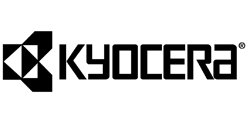
- Kyocera DA-1 (1996)
- Kyocera DR-350 / Yashica KC 600 (1997)
- Kyocera Finecam 3300
- Kyocera Finecam L3V
- Kyocera Finecam L4V
- Kyocera Finecam L30
- Kyocera Finecam M400R
- Kyocera Finecam M410R
- Kyocera Finecam S3
- Kyocera Finecam S3L
- Kyocera Finecam S3R
- Kyocera Finecam S3X
- Kyocera Finecam S4
- Kyocera Finecam S5
- Kyocera Finecam S5R
- Kyocera Finecam SL300R
- Kyocera Finecam SL400R
- Yashica Samurai DG 1300
- Yashica Samurai DG 2100
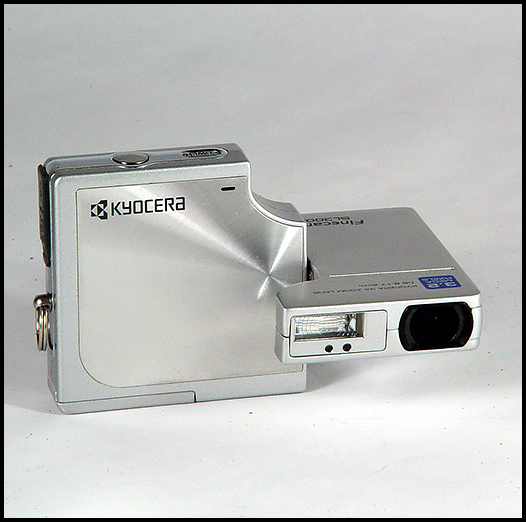
As an exception, we show here a digital camera, the Kyocera Finecam SL300R. It is the world’s thinnest 3x optical zoom camera as of 2003. Sleek in size at approx. 15mm thin, KYOCERA SL300R shoots at full Memory up to 3.5 frames per second.
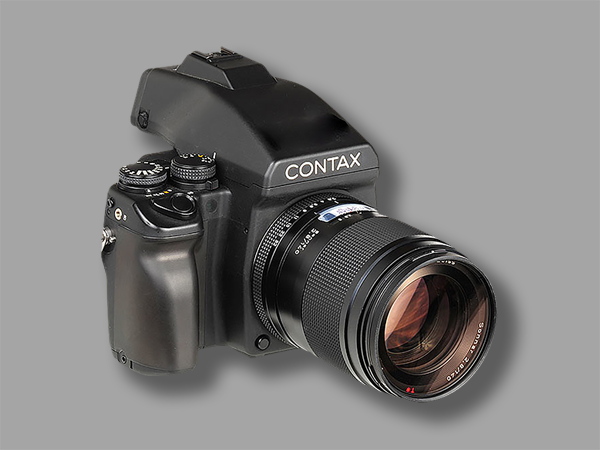
The Contax 645 is the world’s most advanced medium-format camera system. It has backs for 120 and 220 and even vacuum backs for 220, and today it’s among the world’s most popular pro cameras for use with medium format backs.
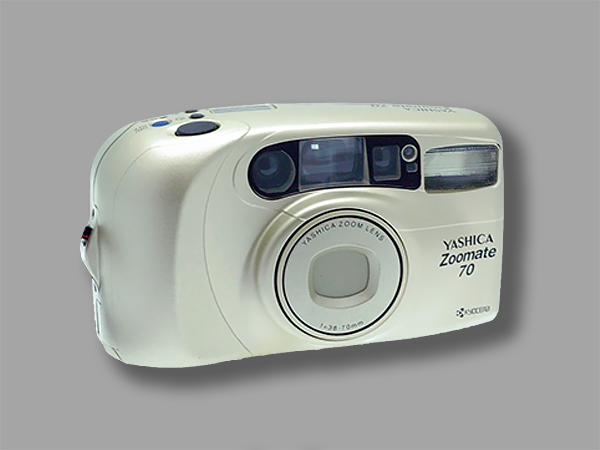
The Yashica Zoomate 70 is a 35mm film all-automatic compact camera made by Yashica. It was first released in 1995 when the digital market was not yet a market at all. Has a self-timer, automated DX code, different flash modes, a moderate zoom that covers 38-70mm. Plastic body available in black and champagne.
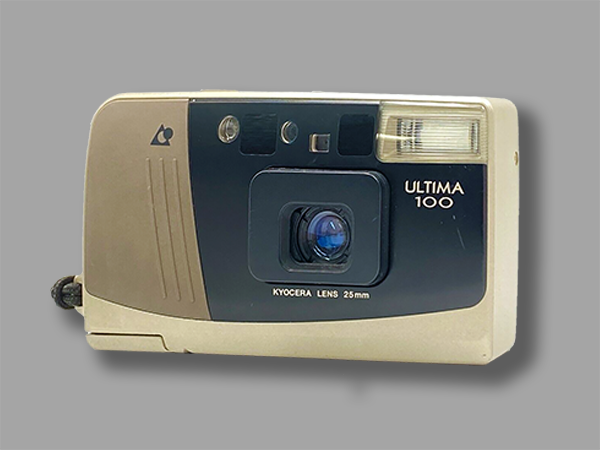
The Kyocera Ultima 100 was an autofocus point & shoot camera for APS film, apparently released in about 1996. It had an active infrared beam system autofocusing down to about 16″. The Ultima 100 does not have a zoom lens, but a fixed 25mm f/4.0 triplet design. A CR2 lithium battery is needed to power the camera.
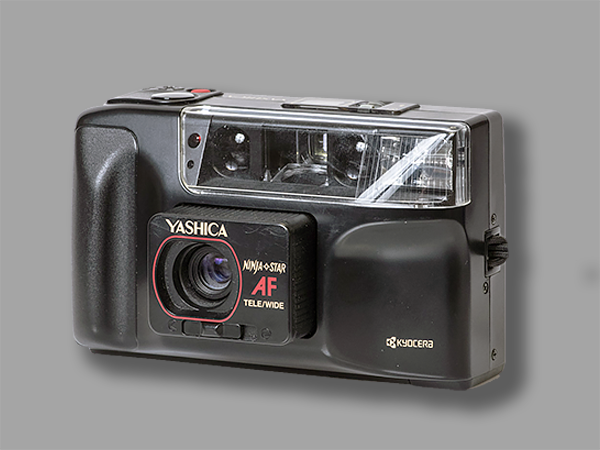
The Yashica Ninja Star – Camera is a 1989 35mm autofocus point & shoot compact camera with two focal lengths: 35 and 55 mm released by Yashica. Known as the Yashica J in Europe and Japan. Plastic body available in black & blue.
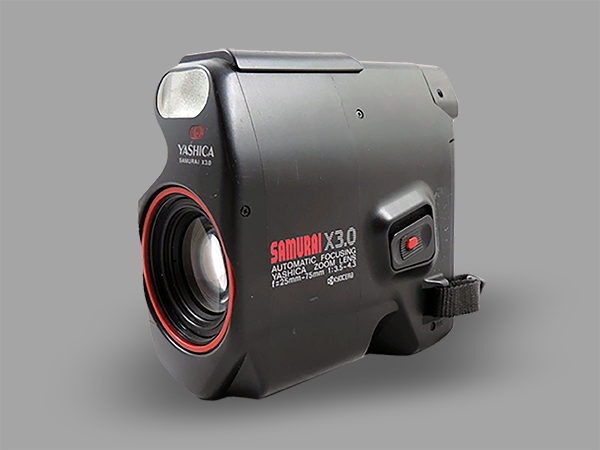
The unusual Samurai series was begun by Kyocera in 1987 with the X3.0. The Samurai is a true SLR, exposing half-fame (17×24 mm) images. The X3.0 includes an integral, autofocus 25–75 mm zoom lens. Besides autofocus, the camera has motorized film advance and rewind.
